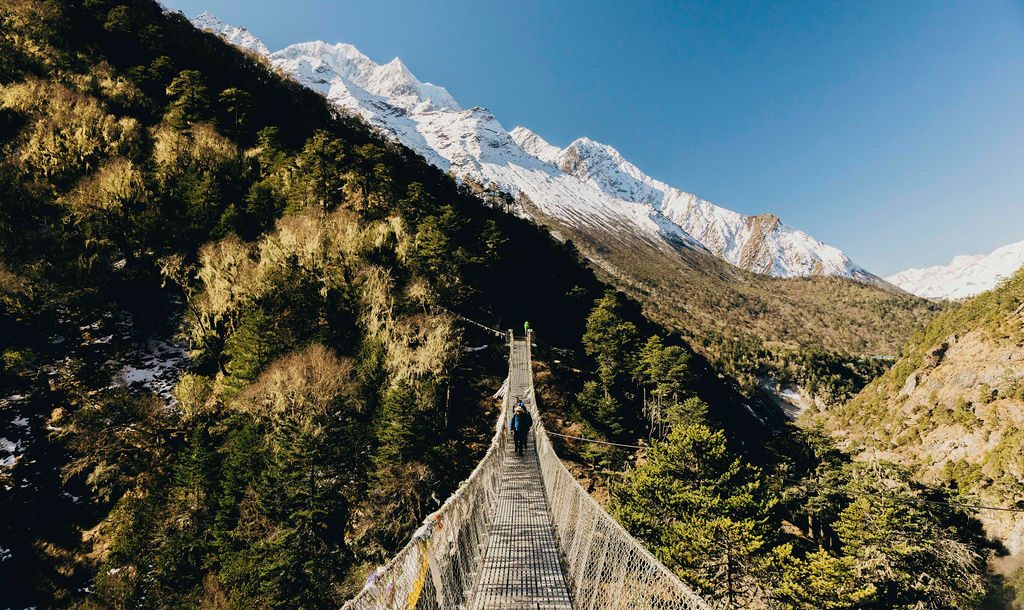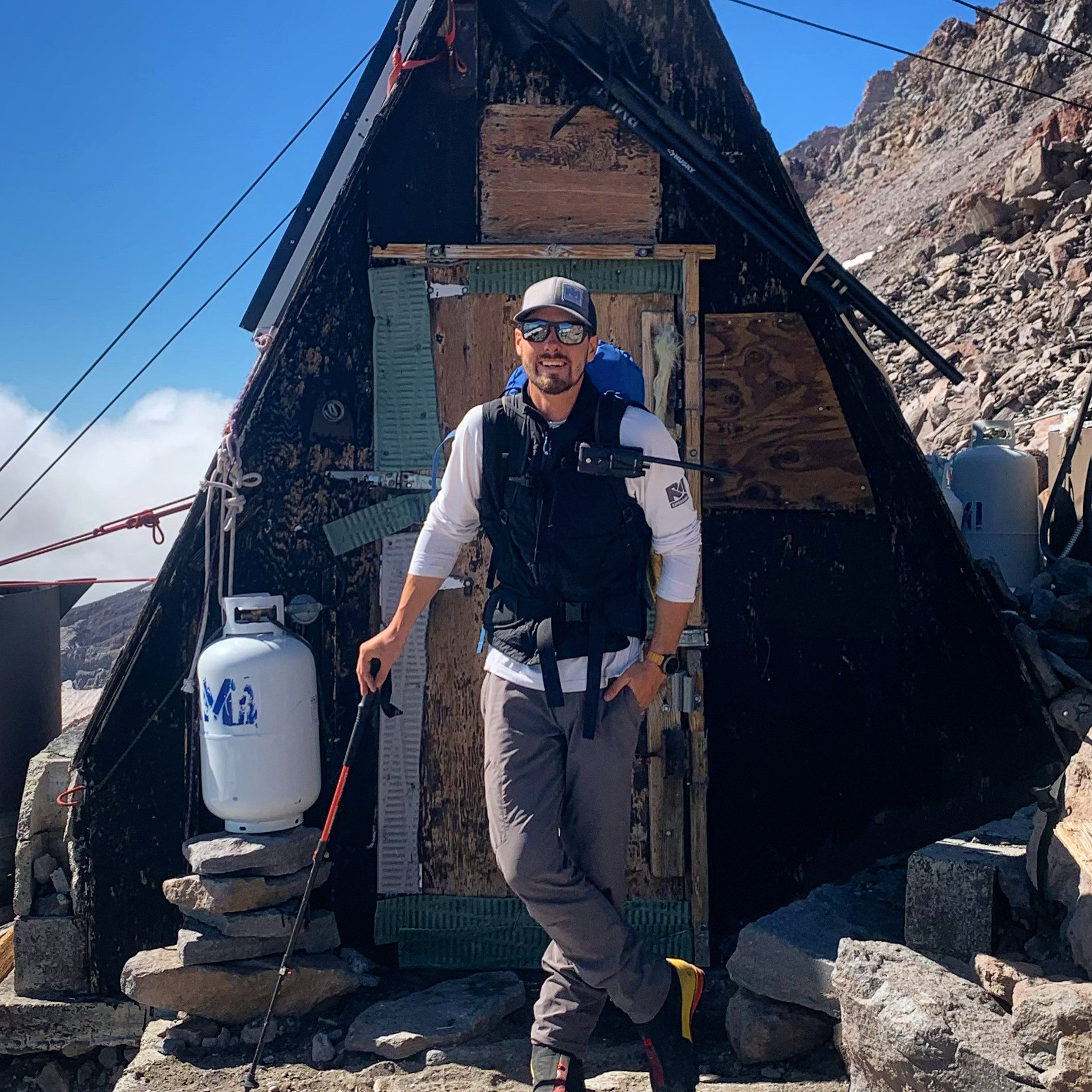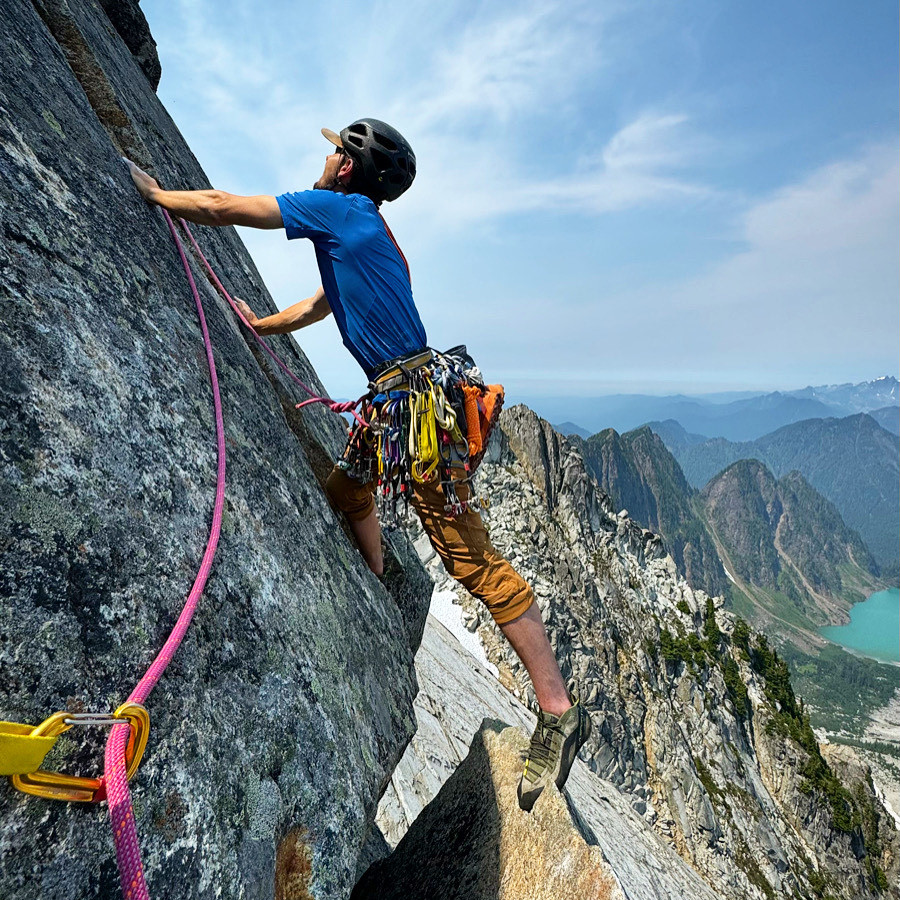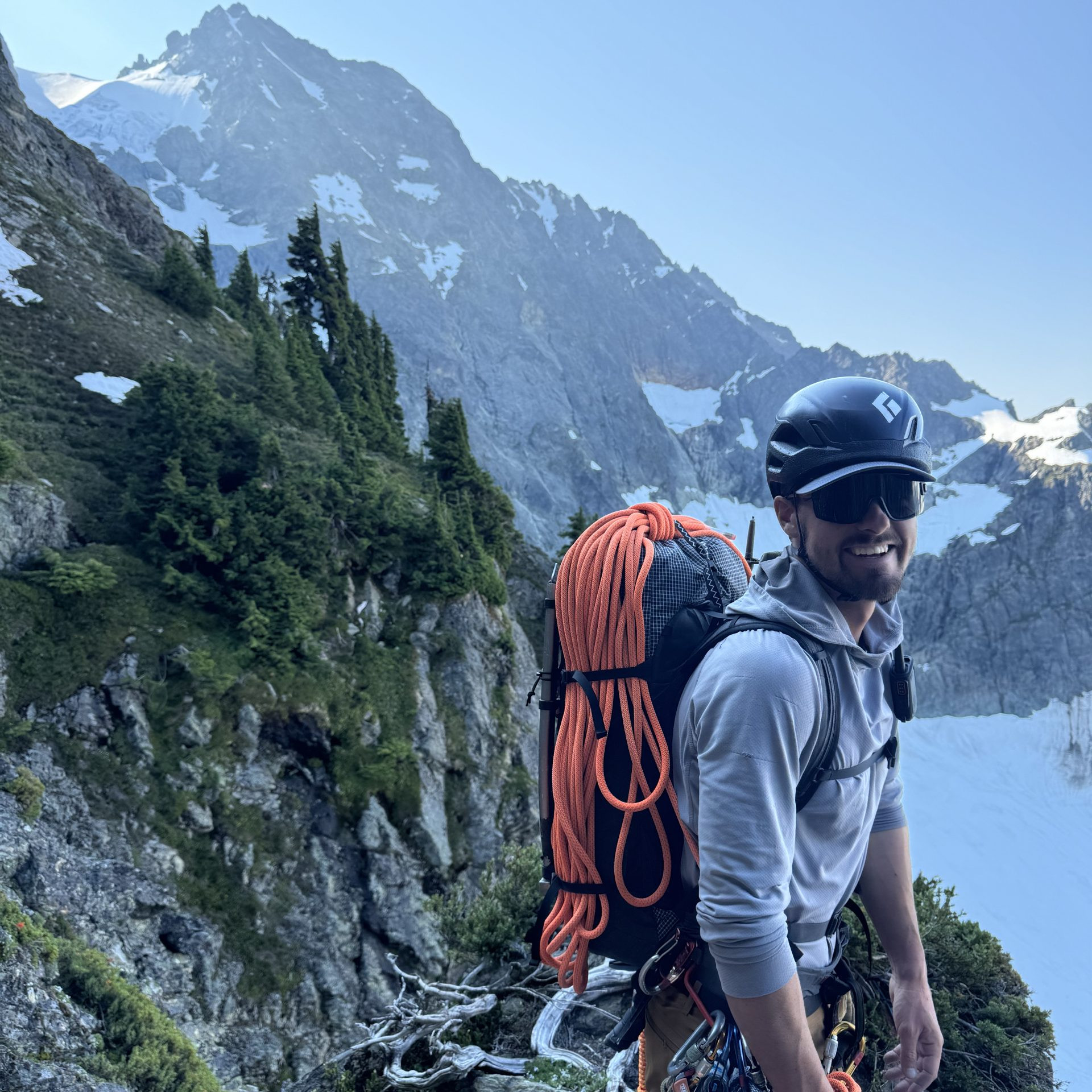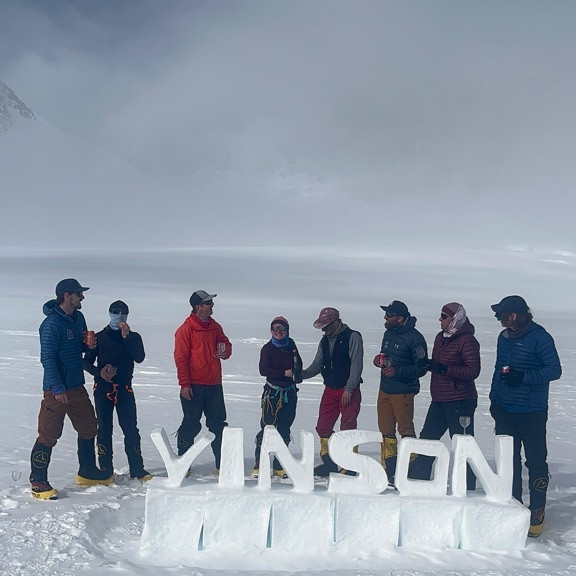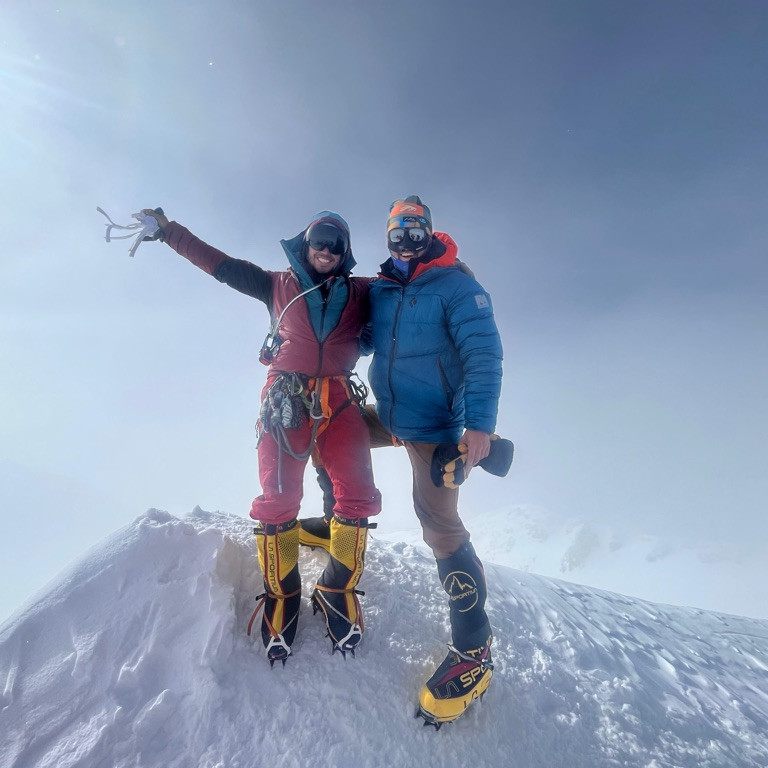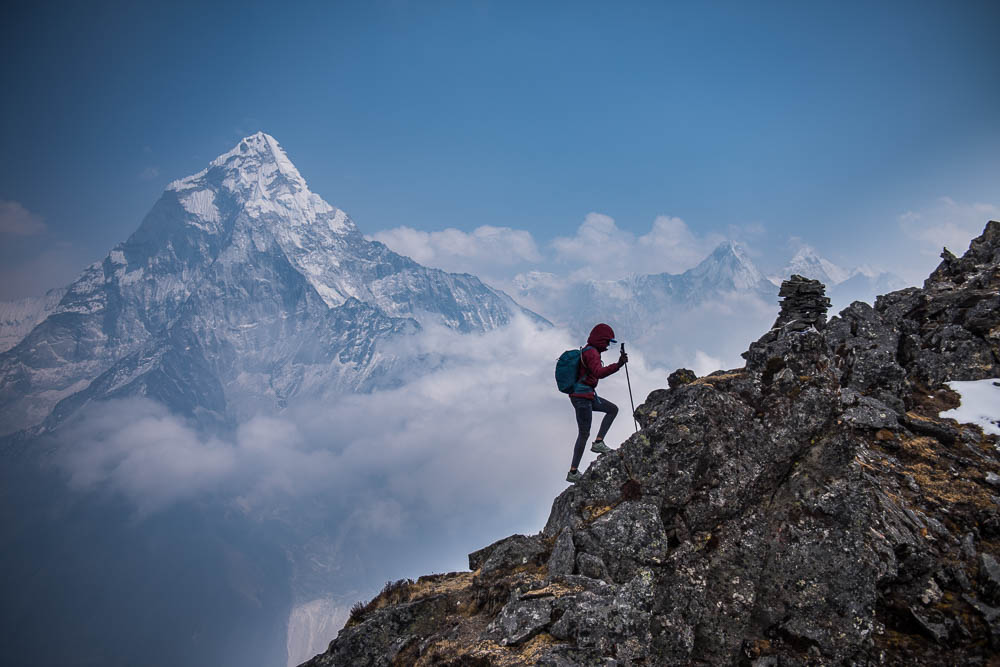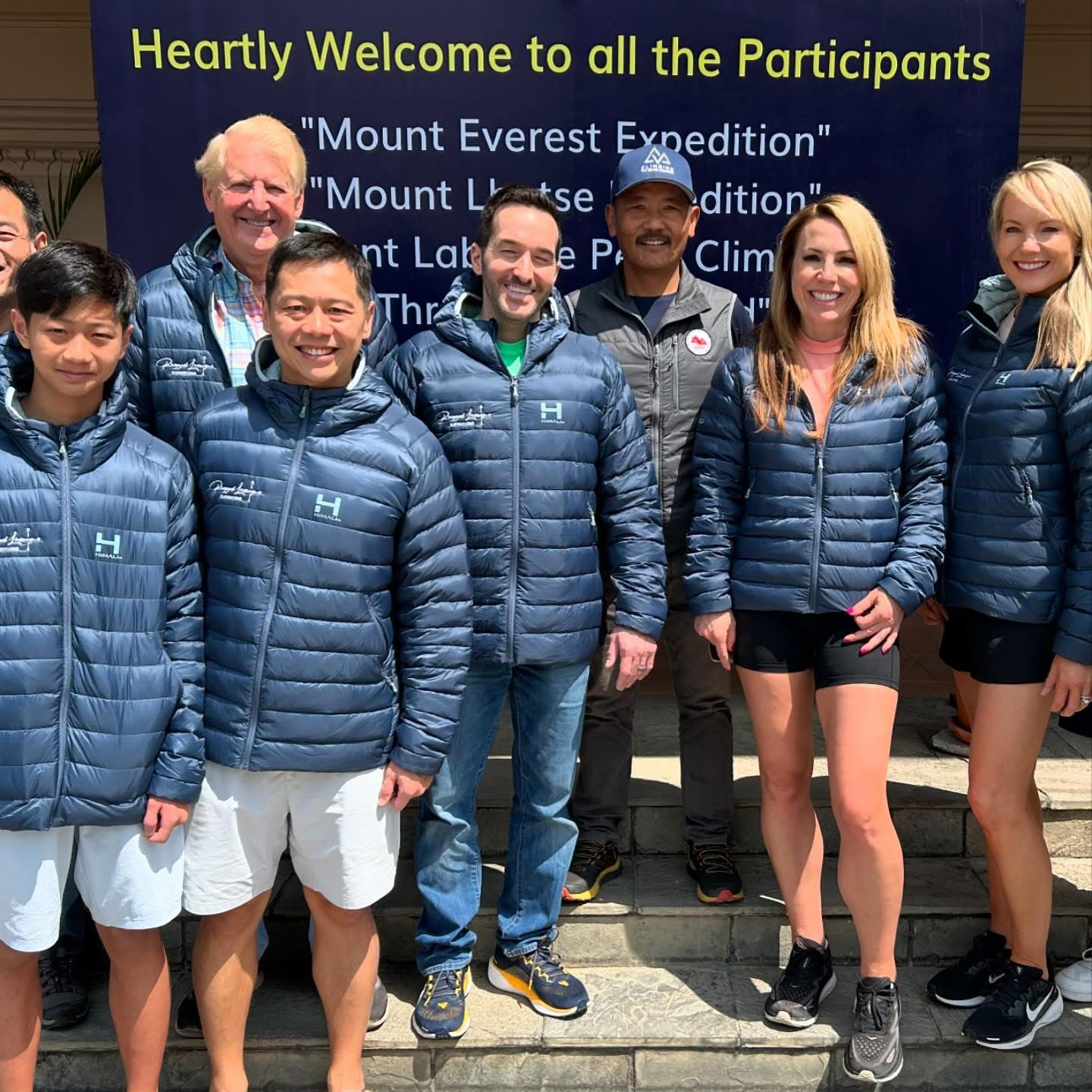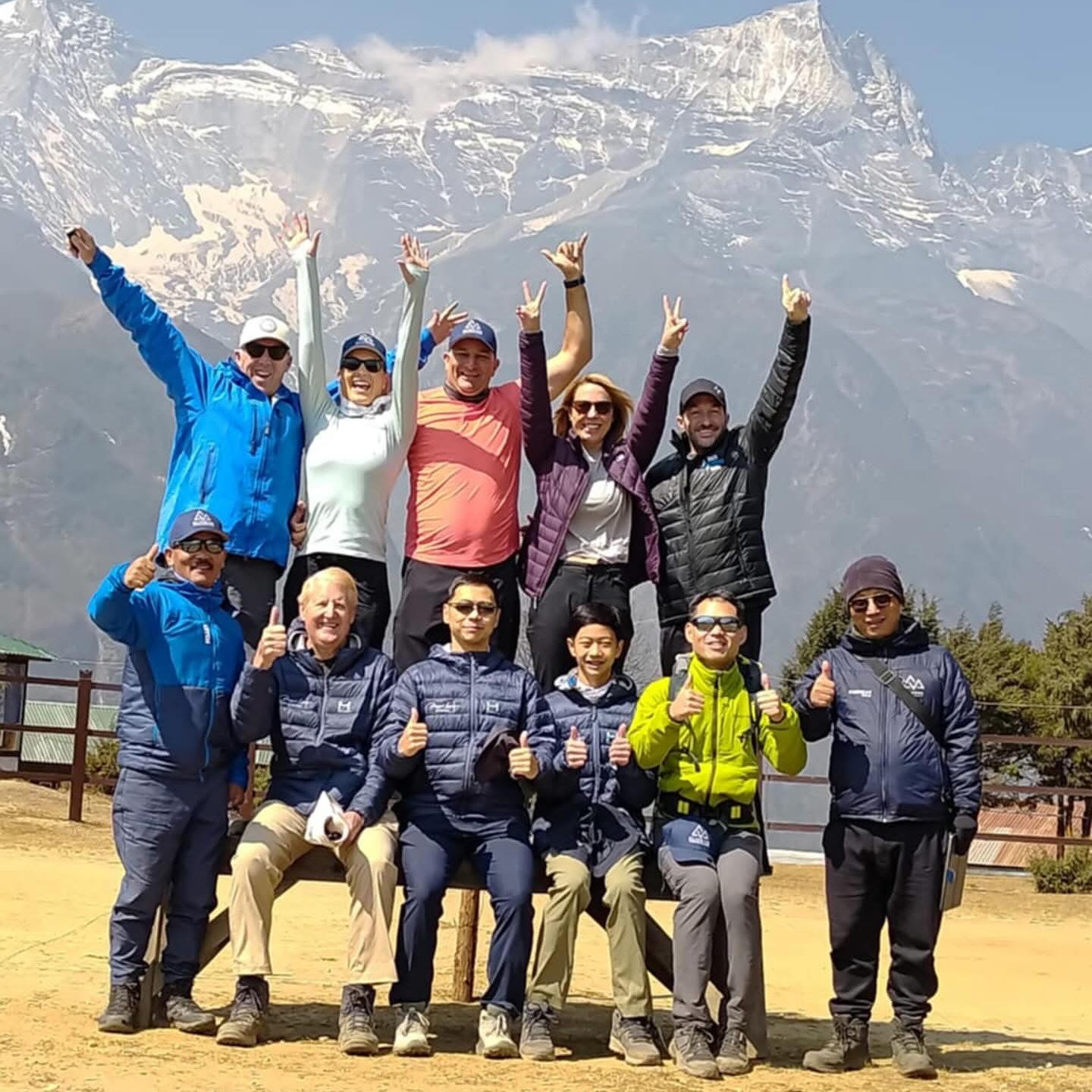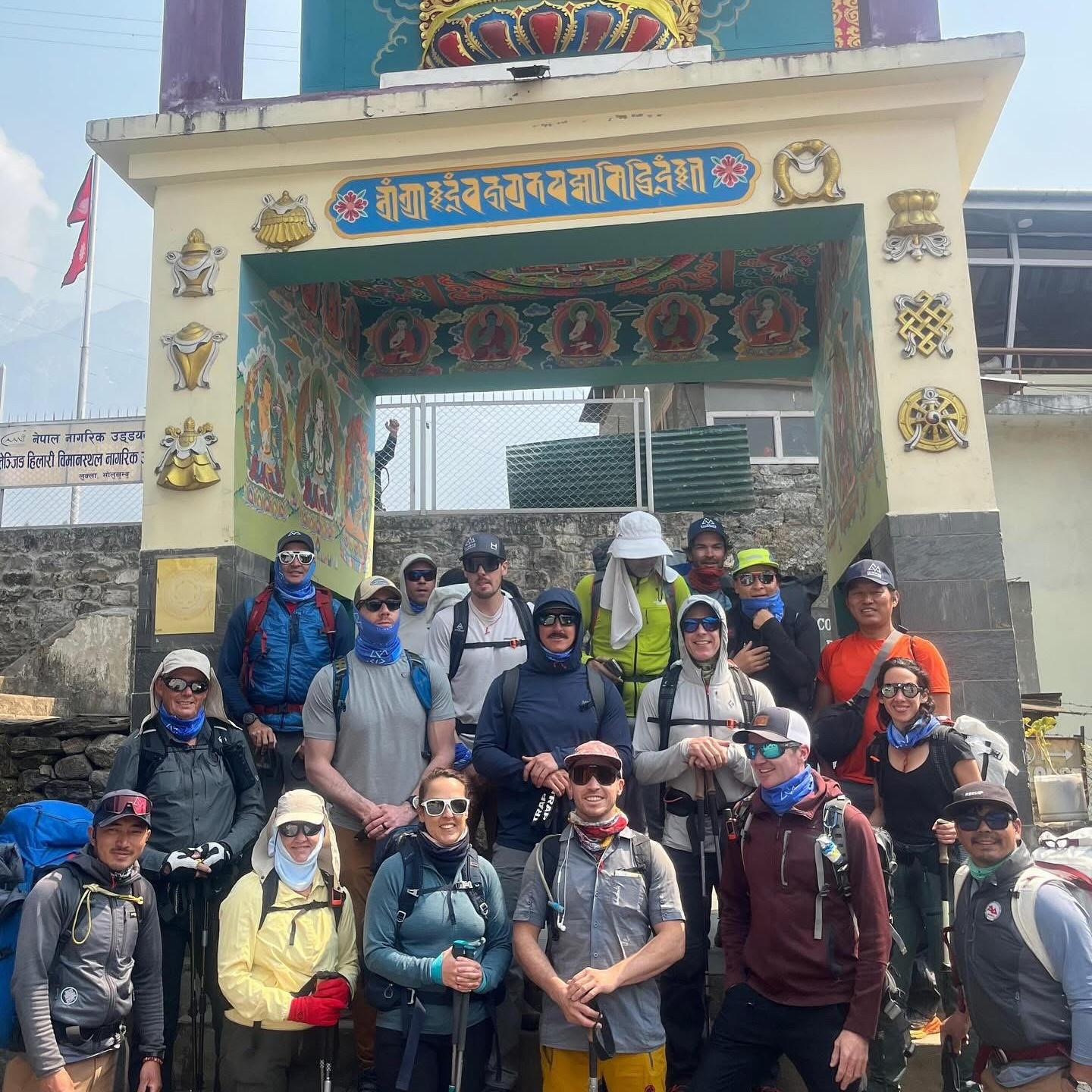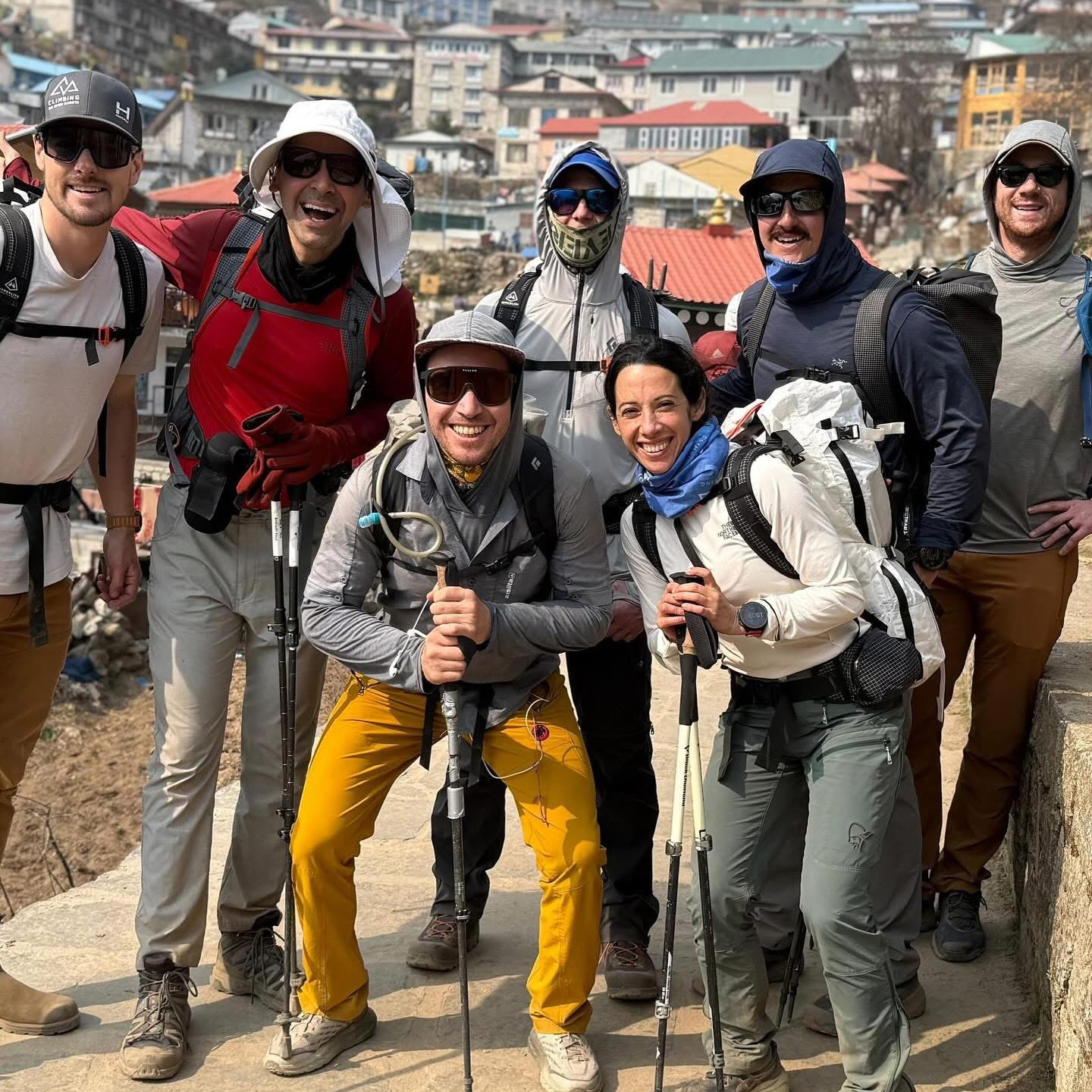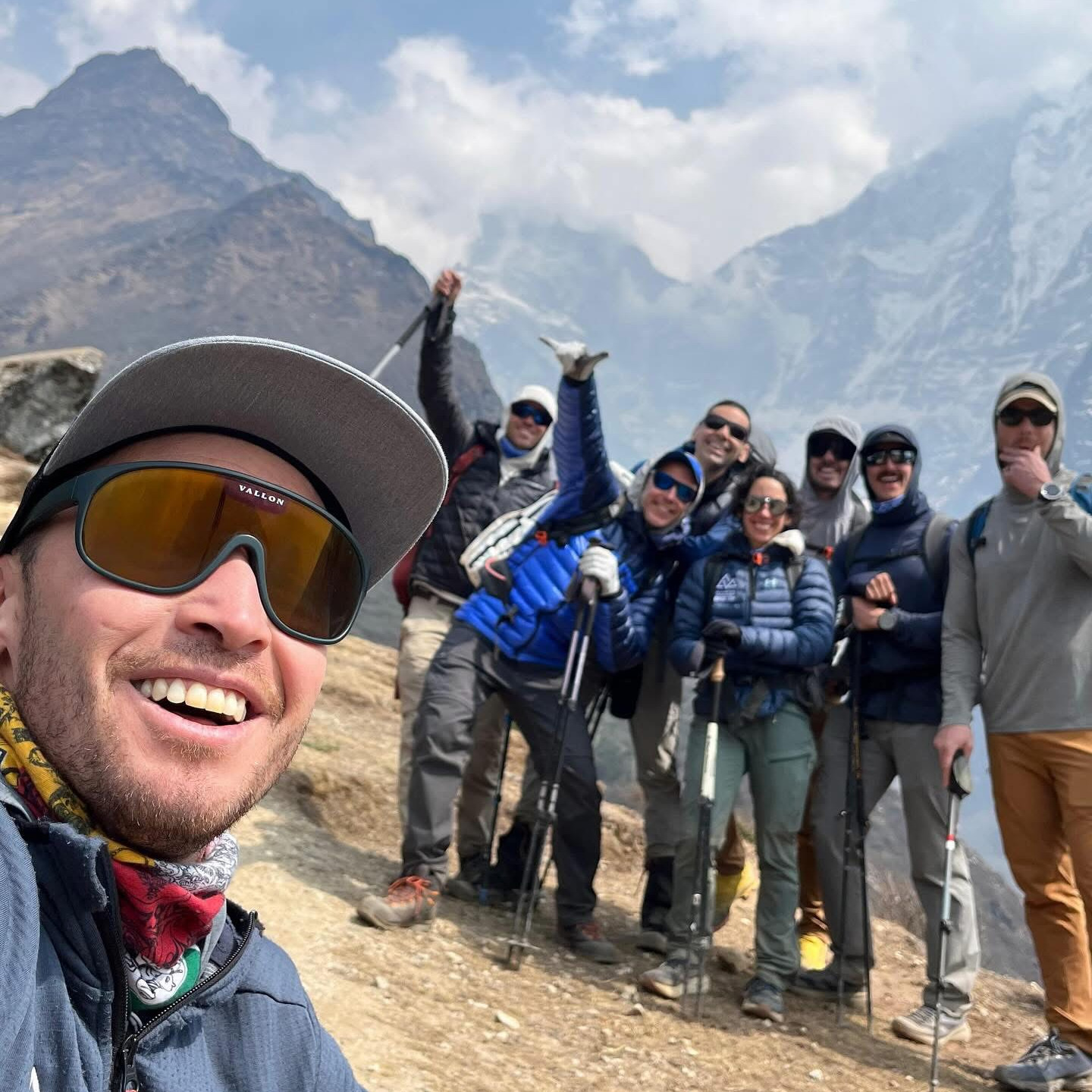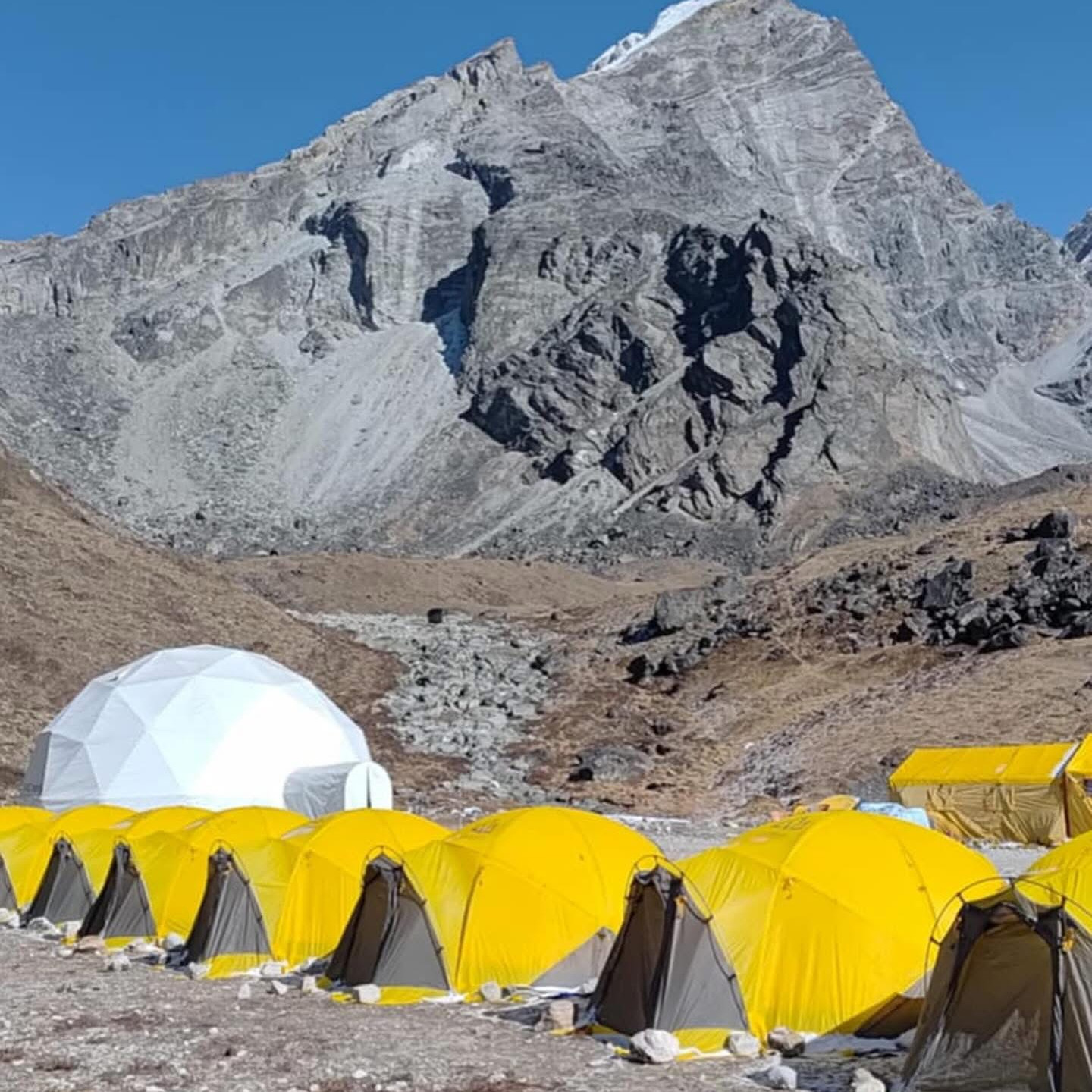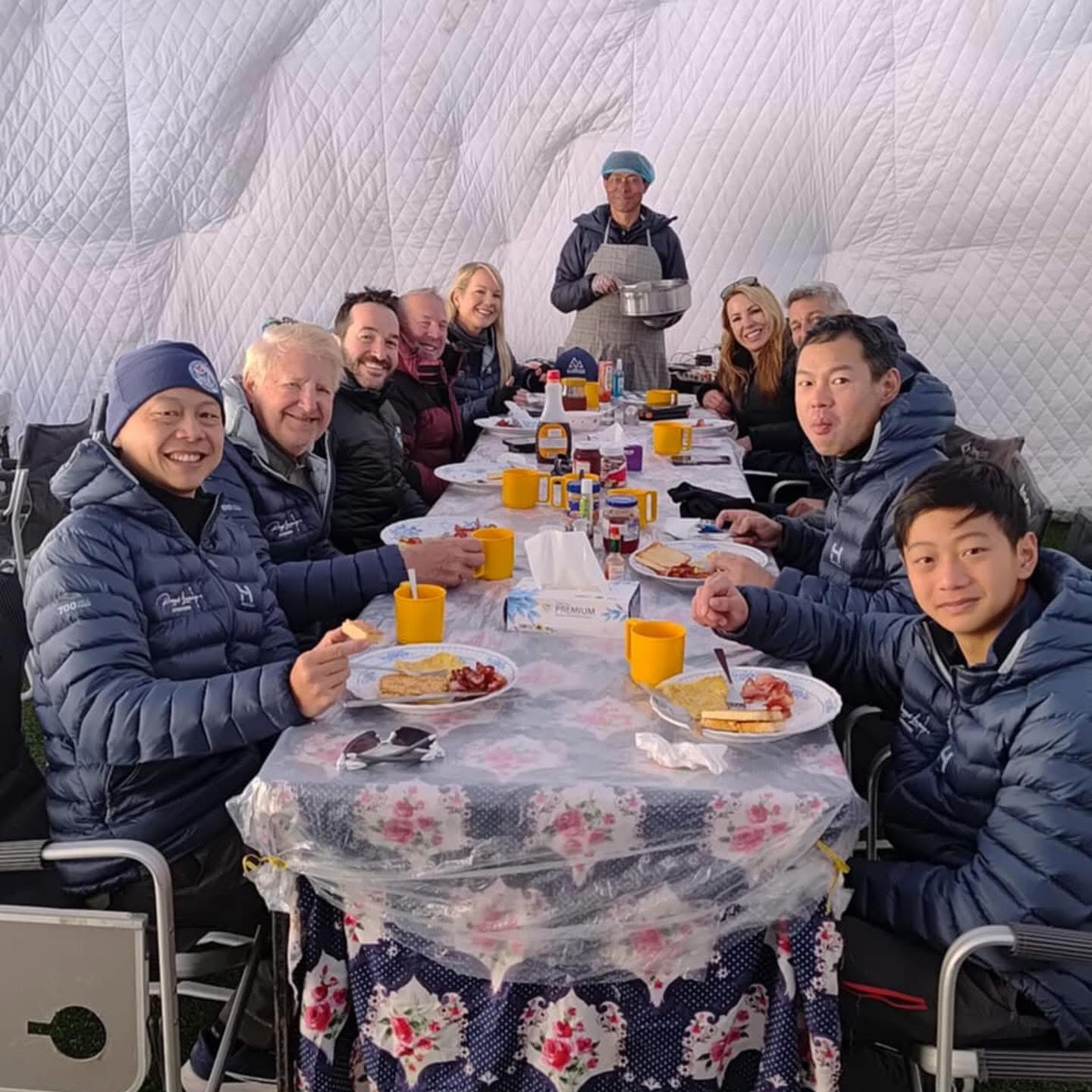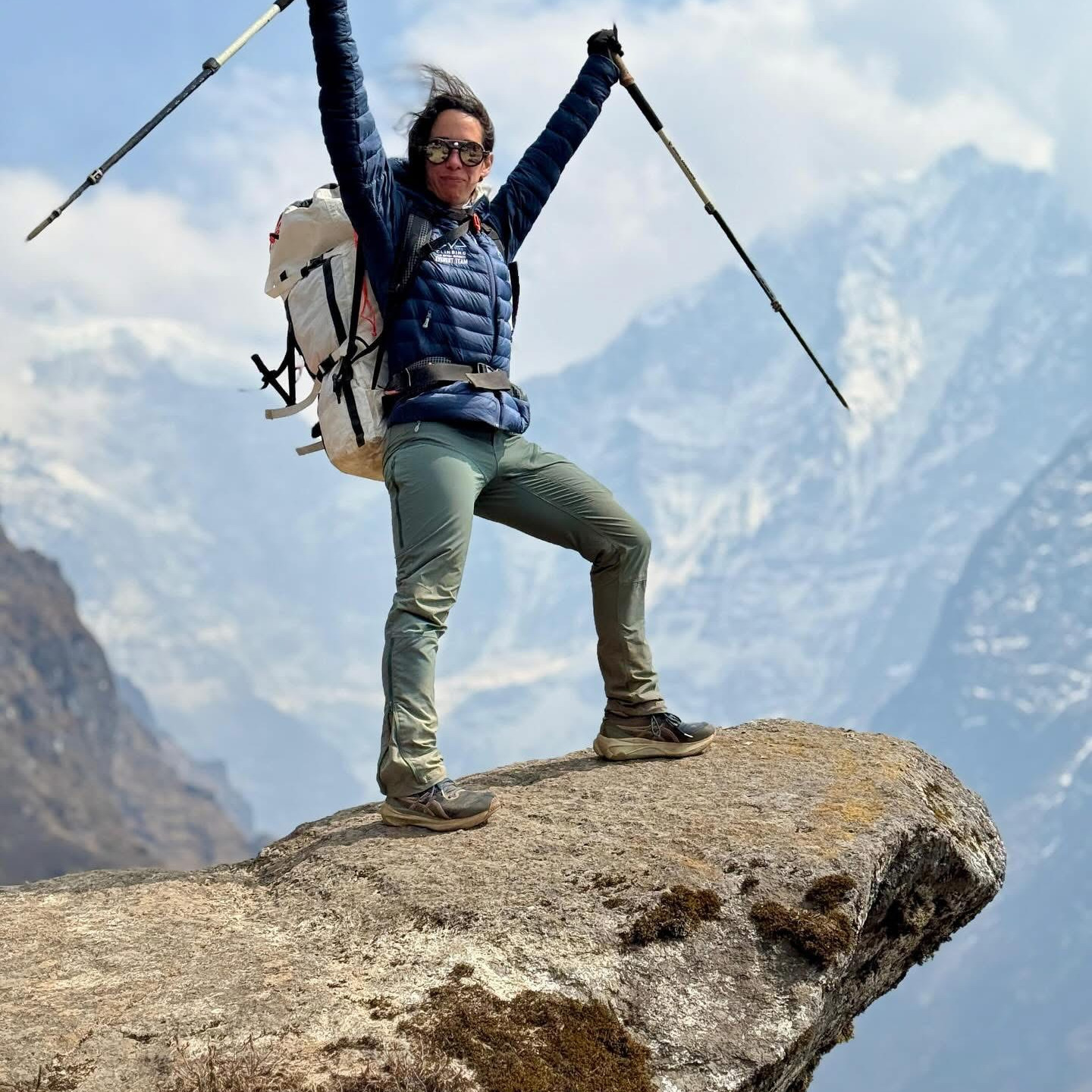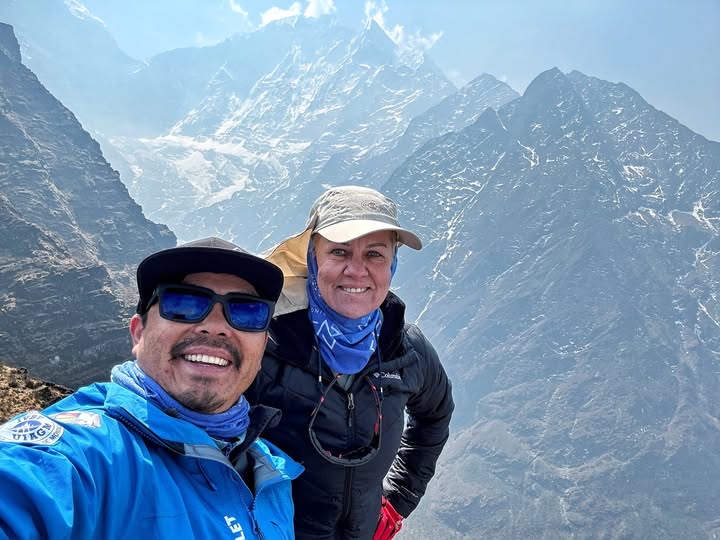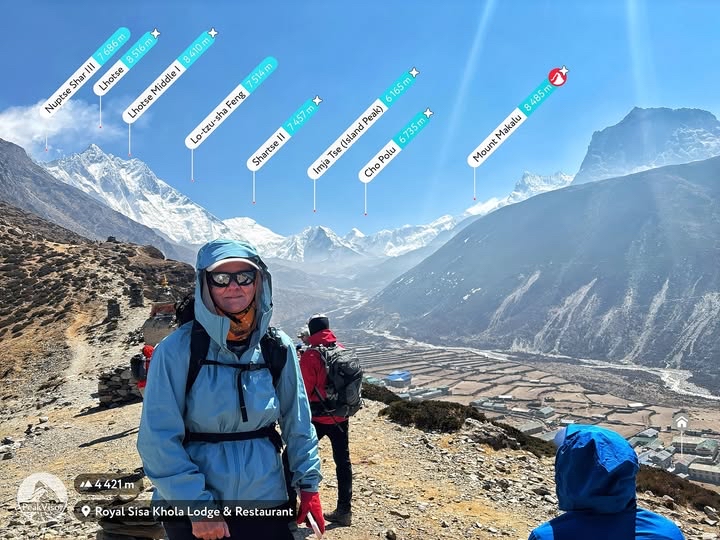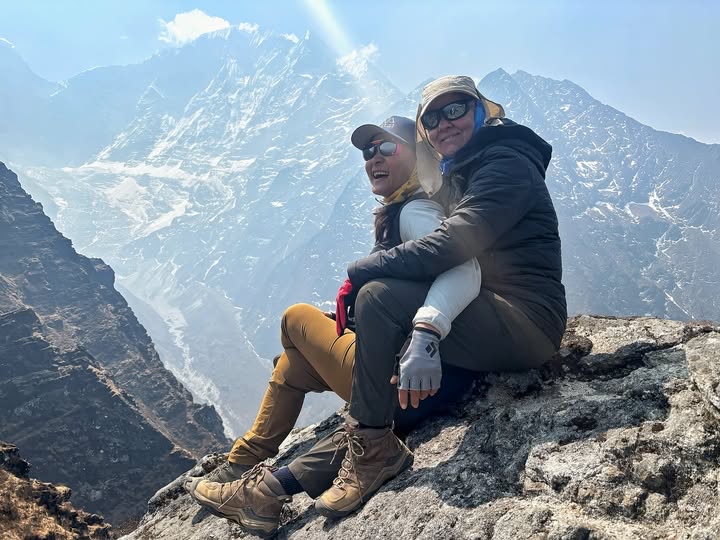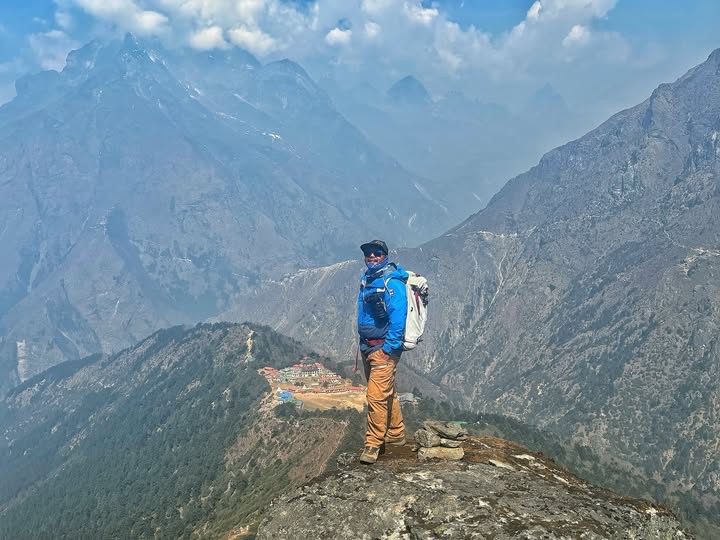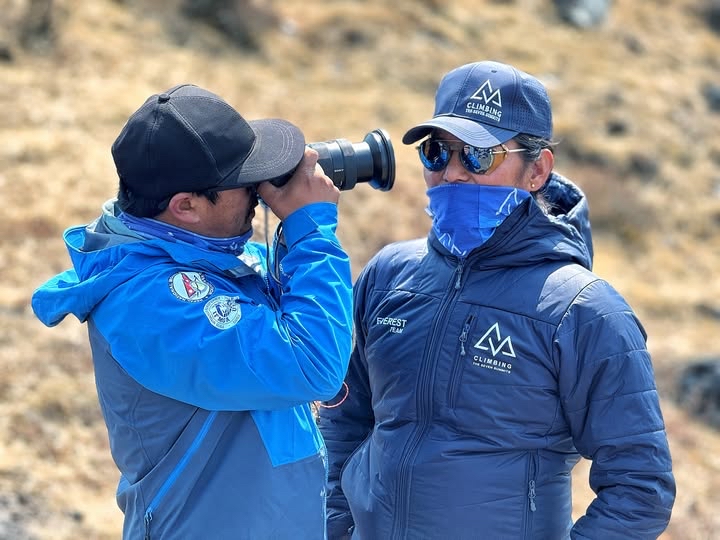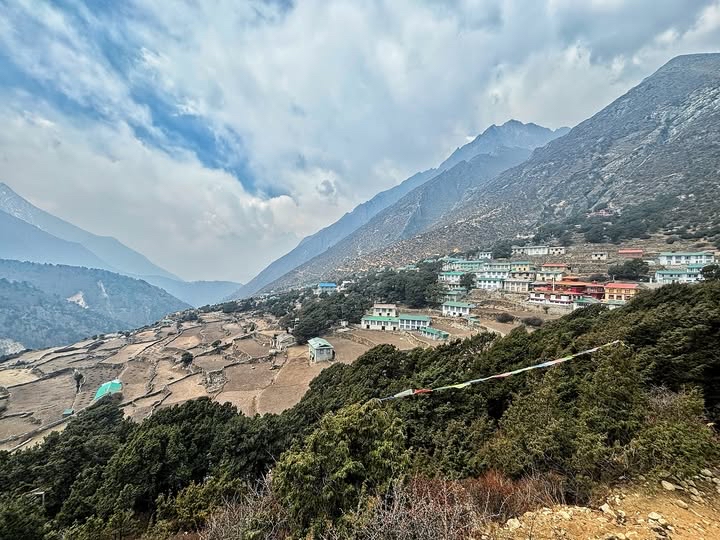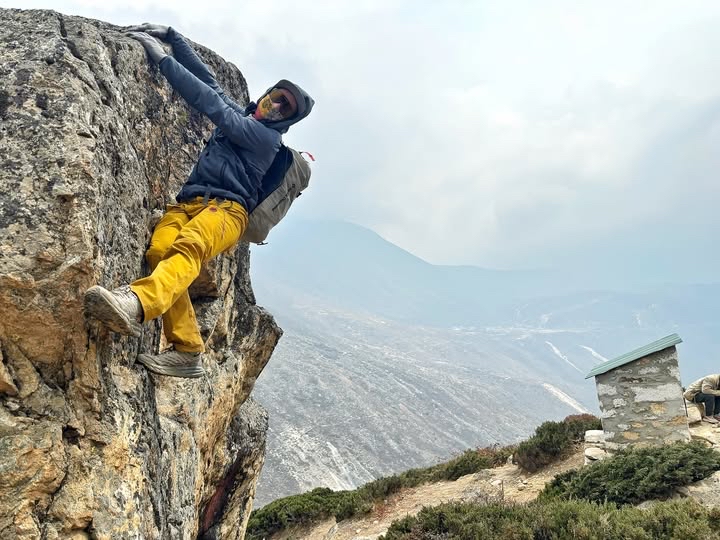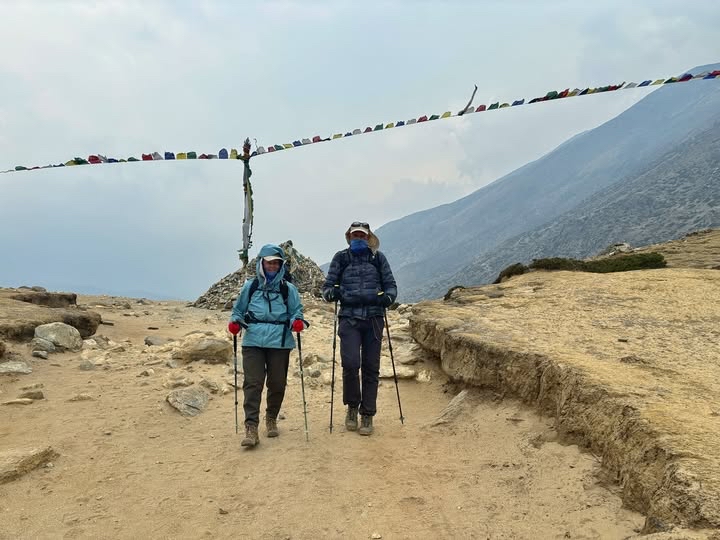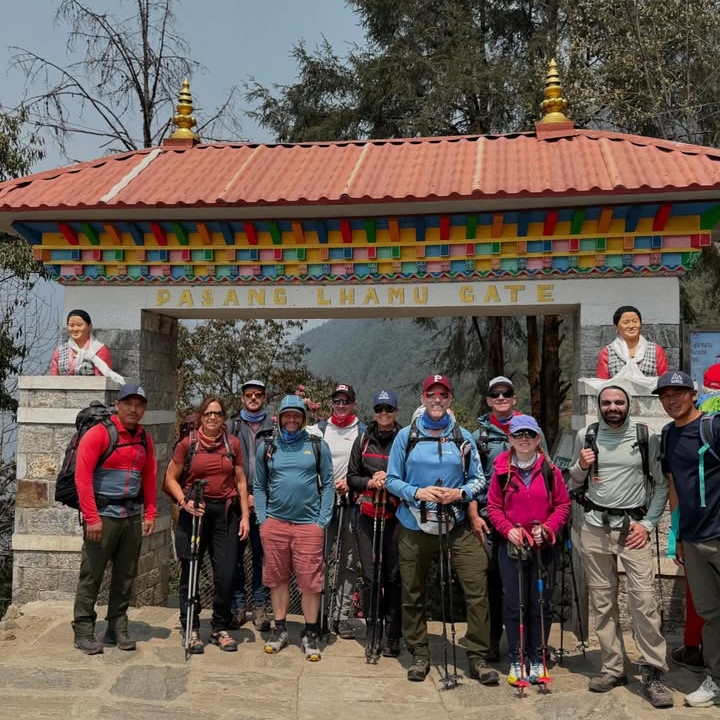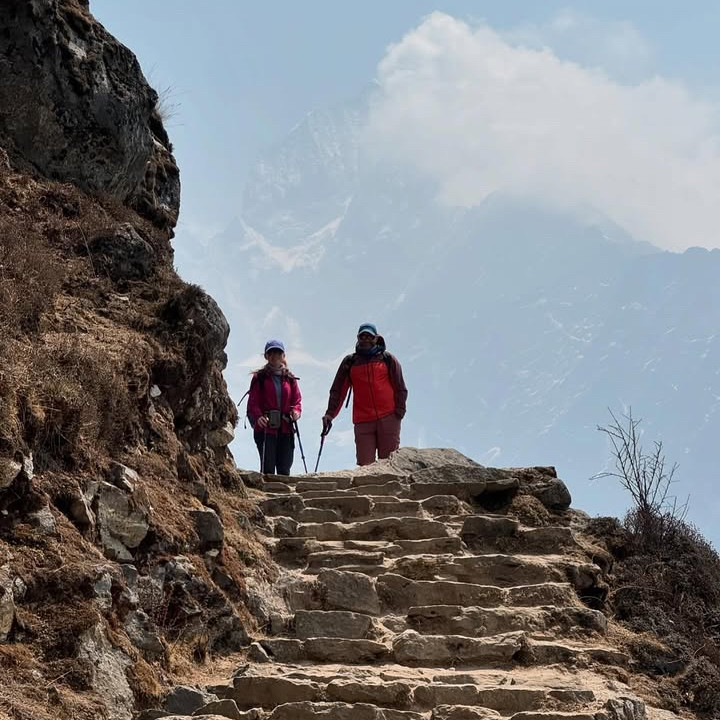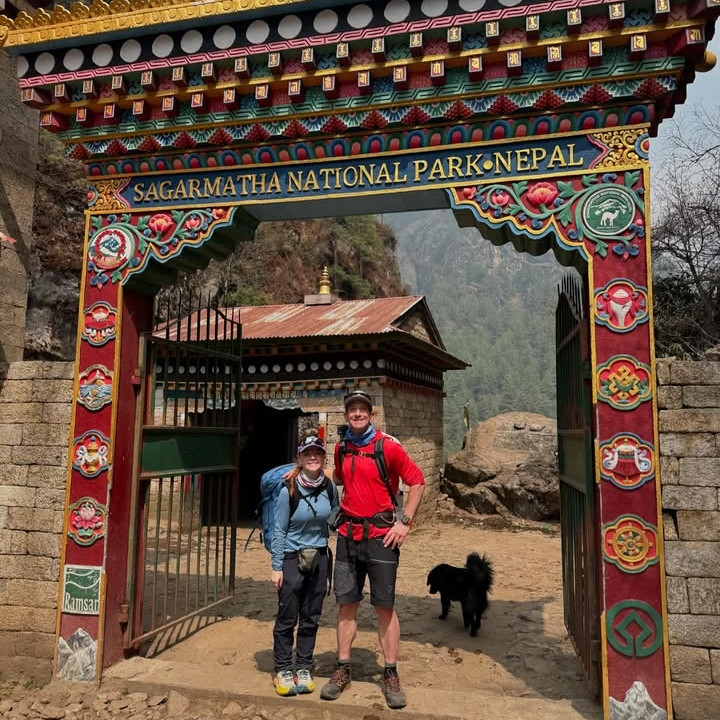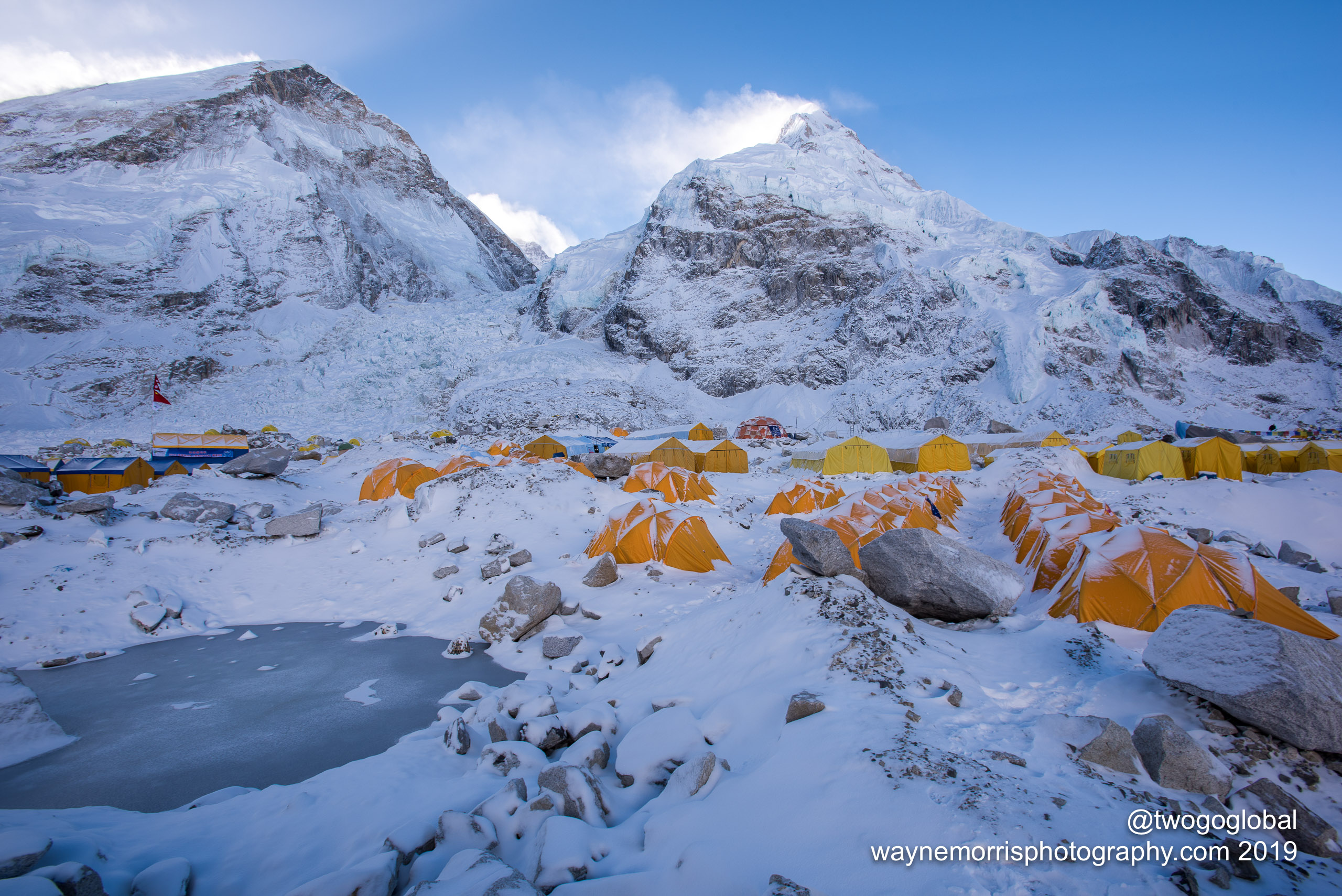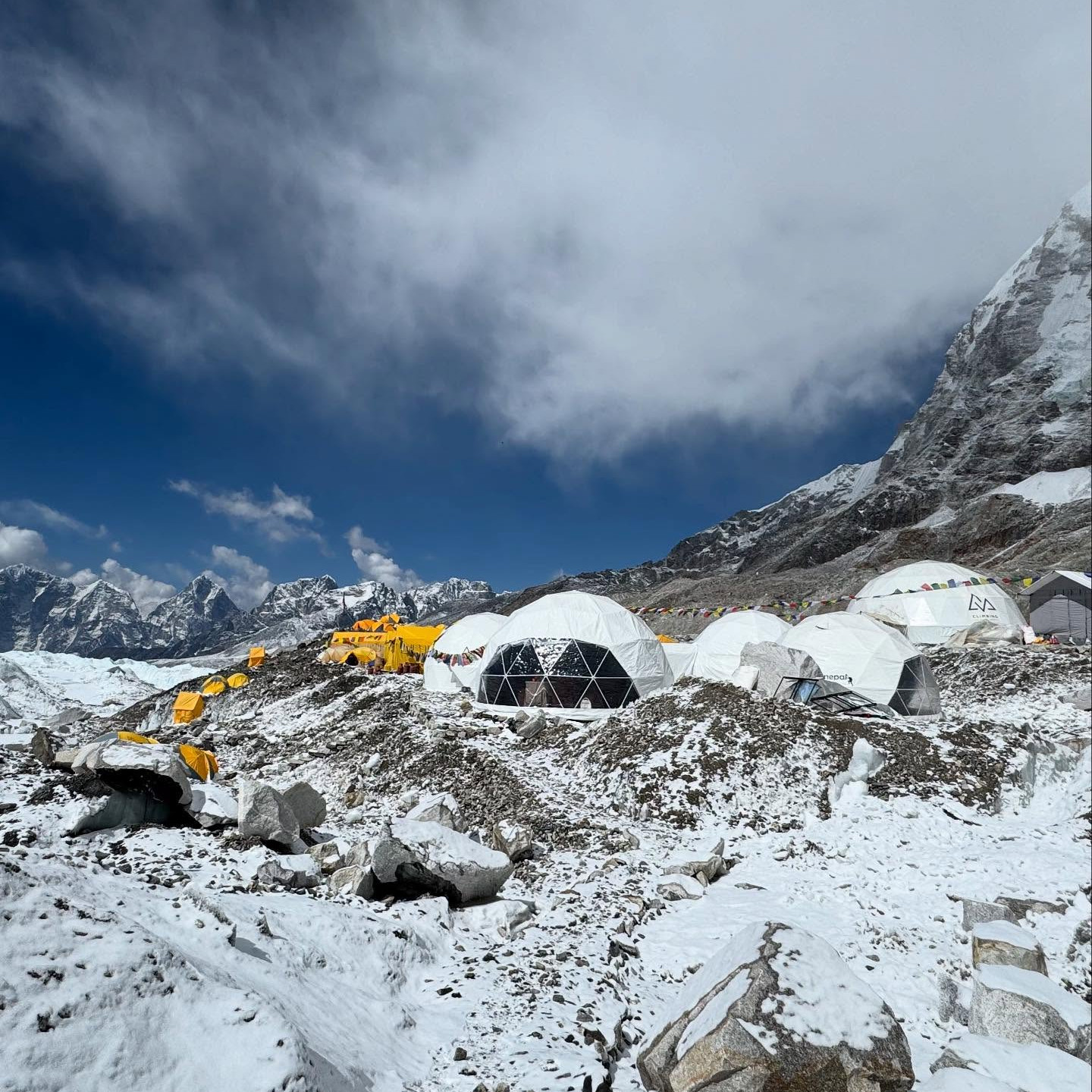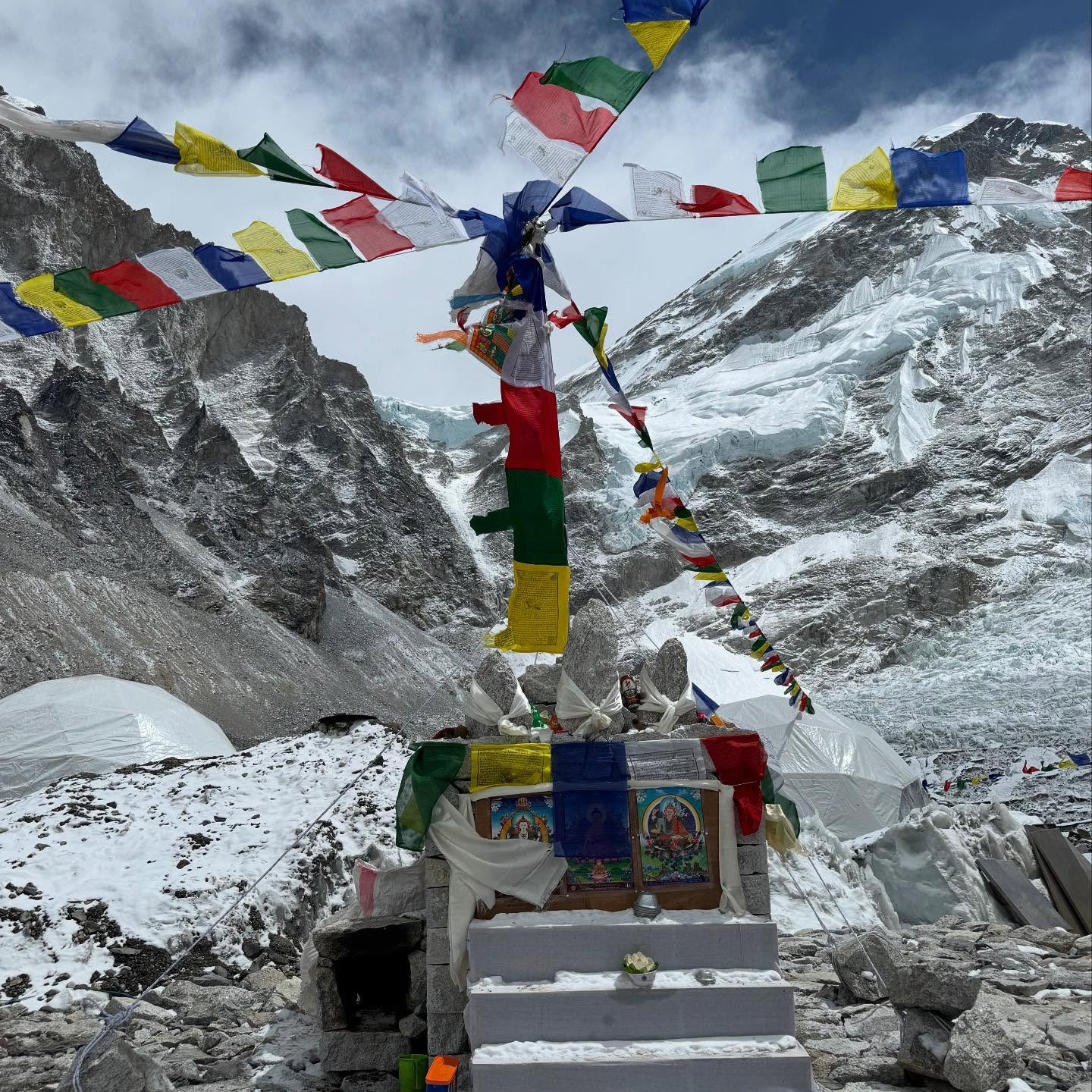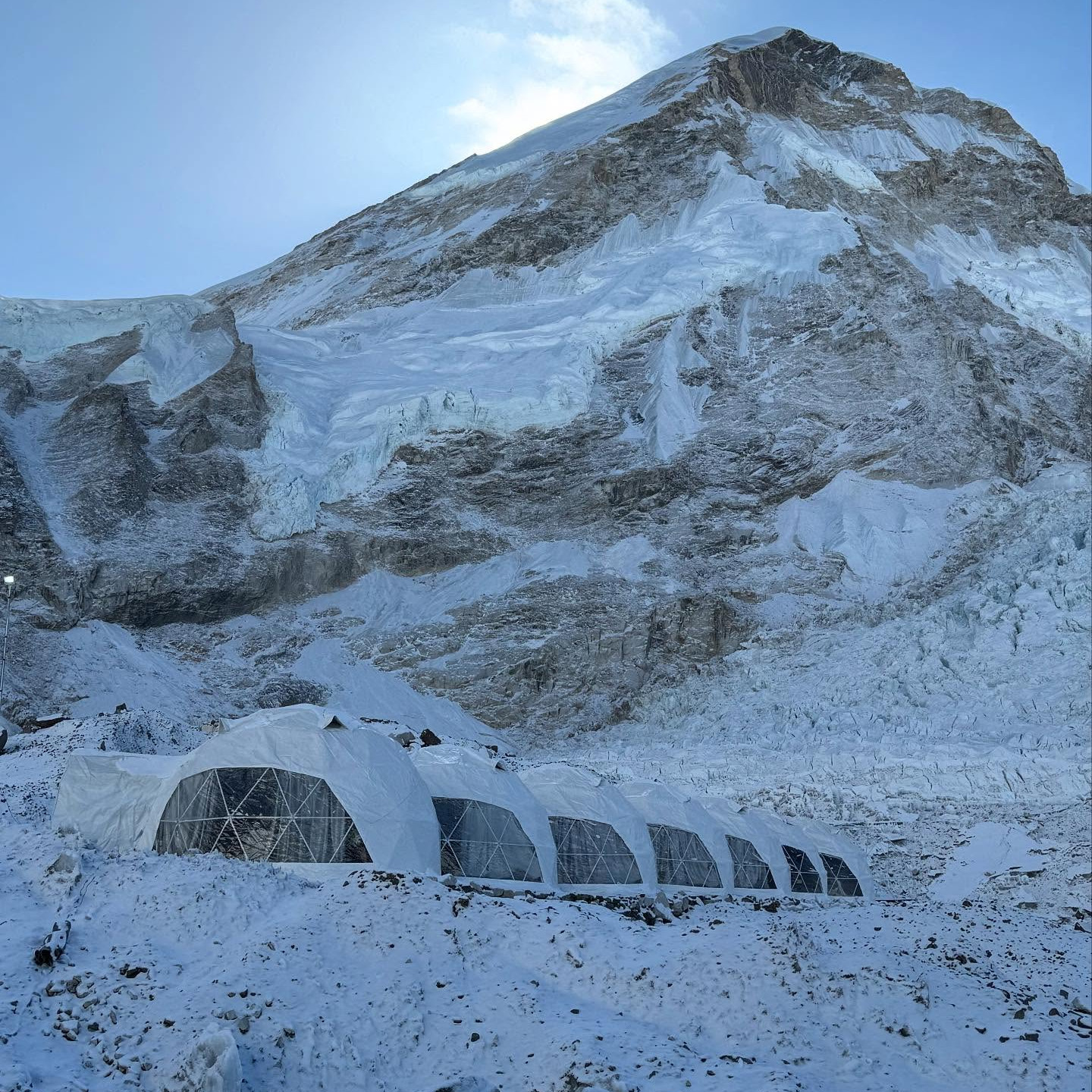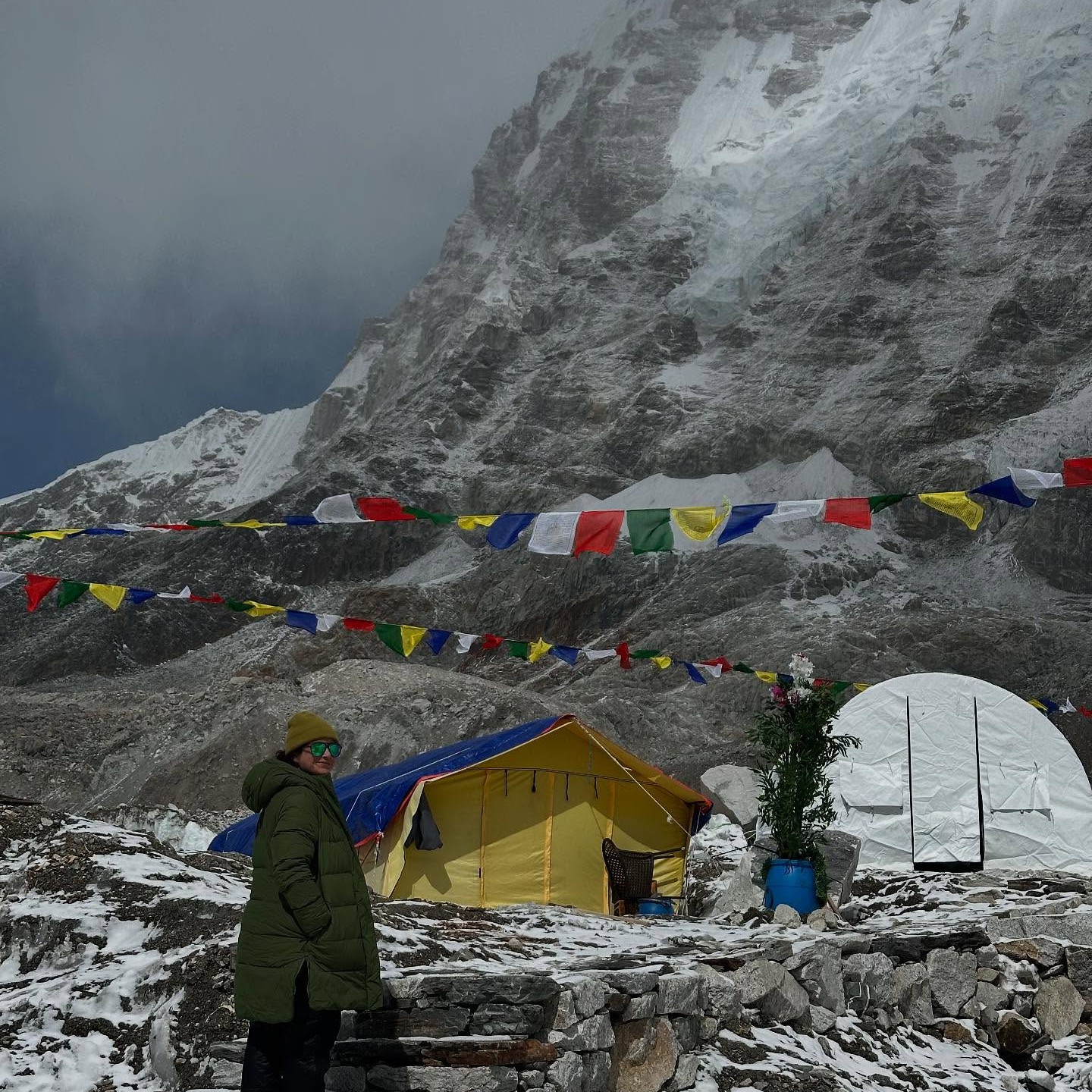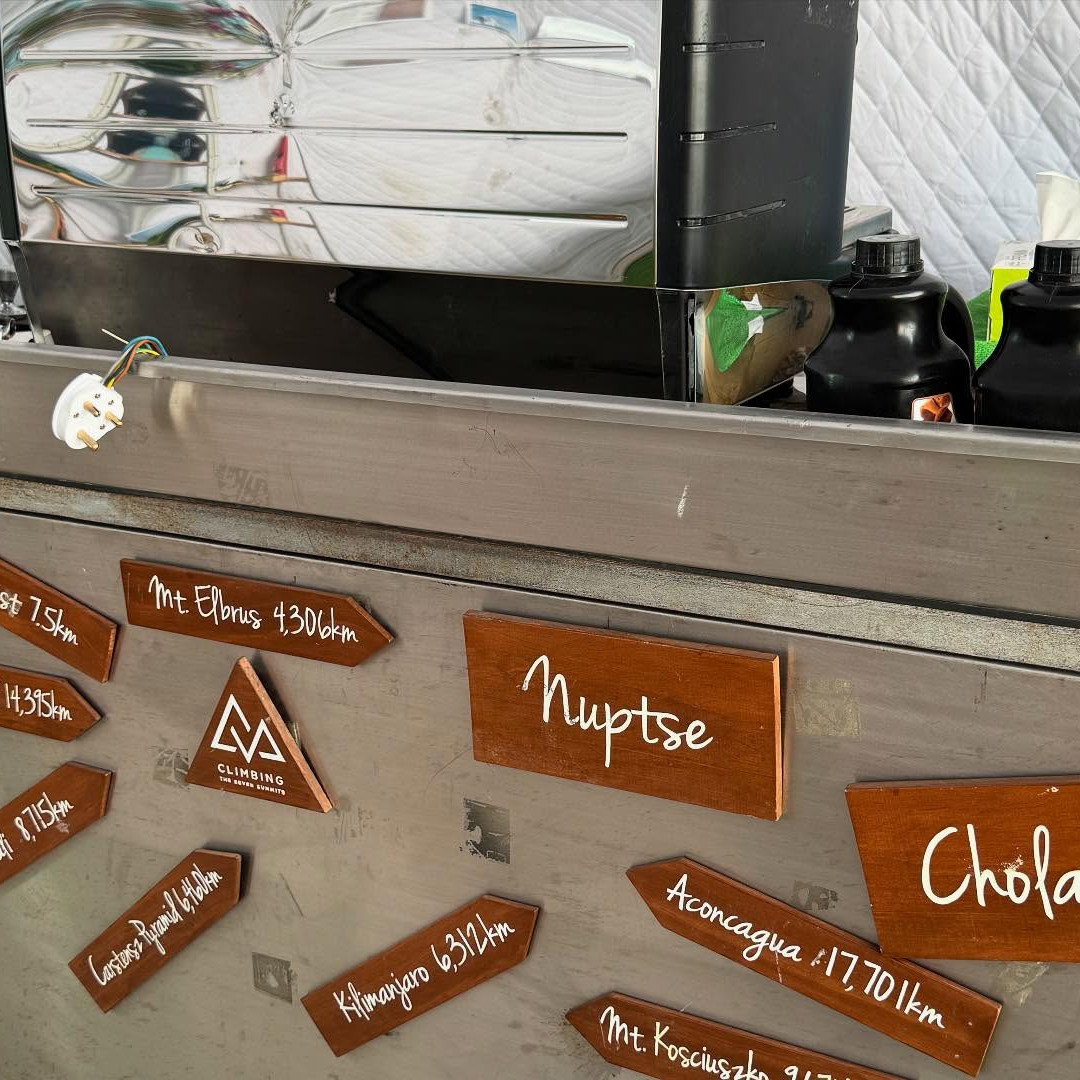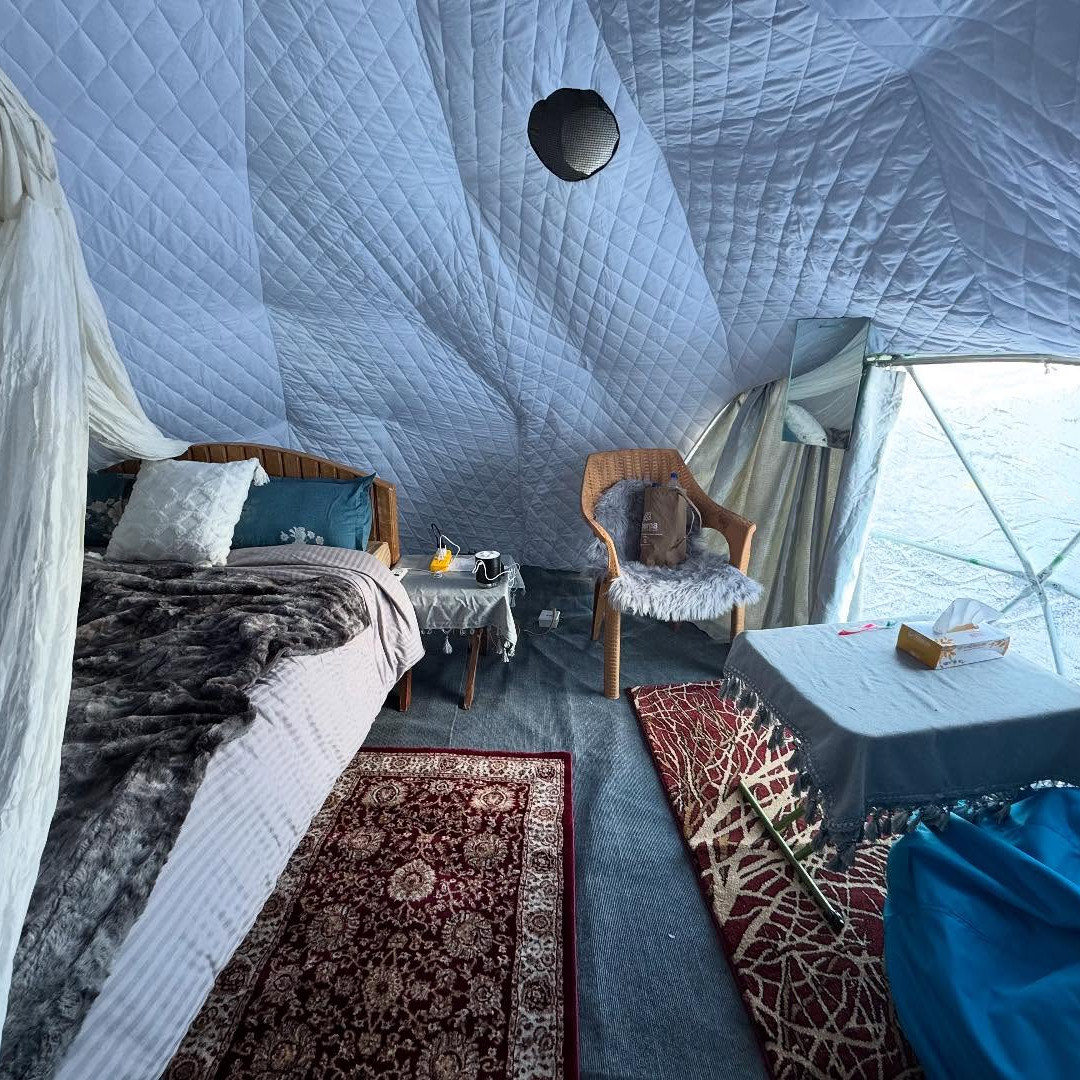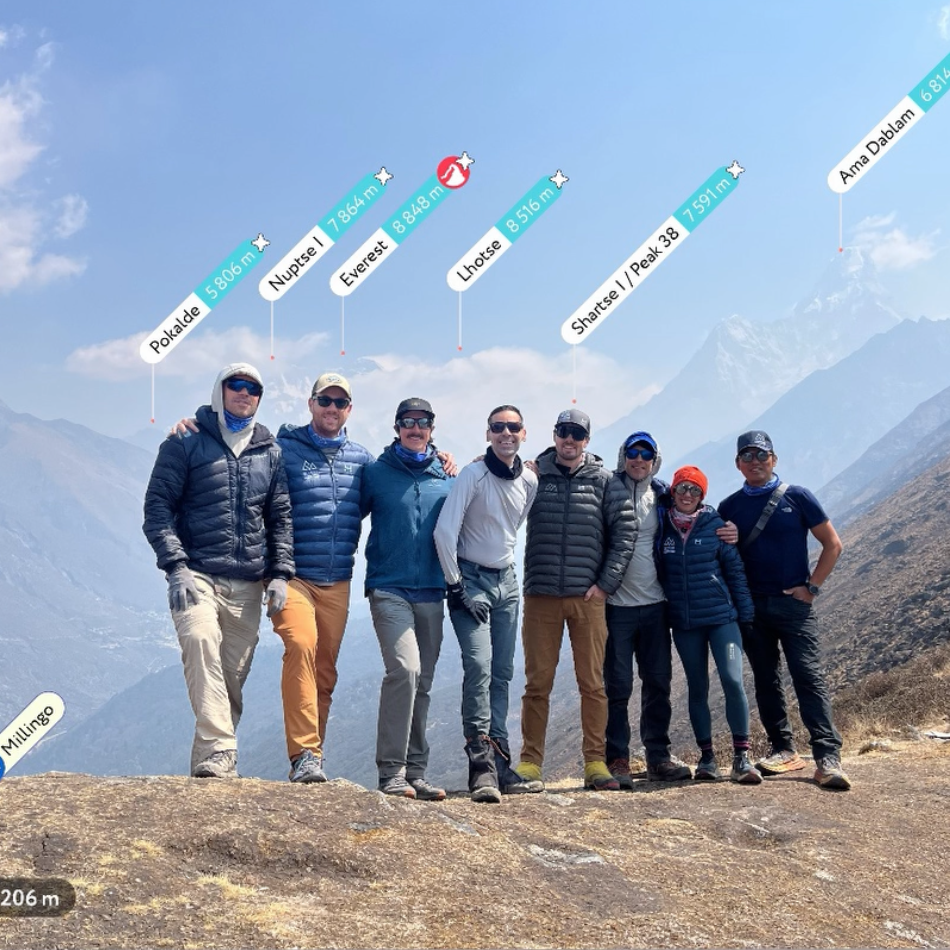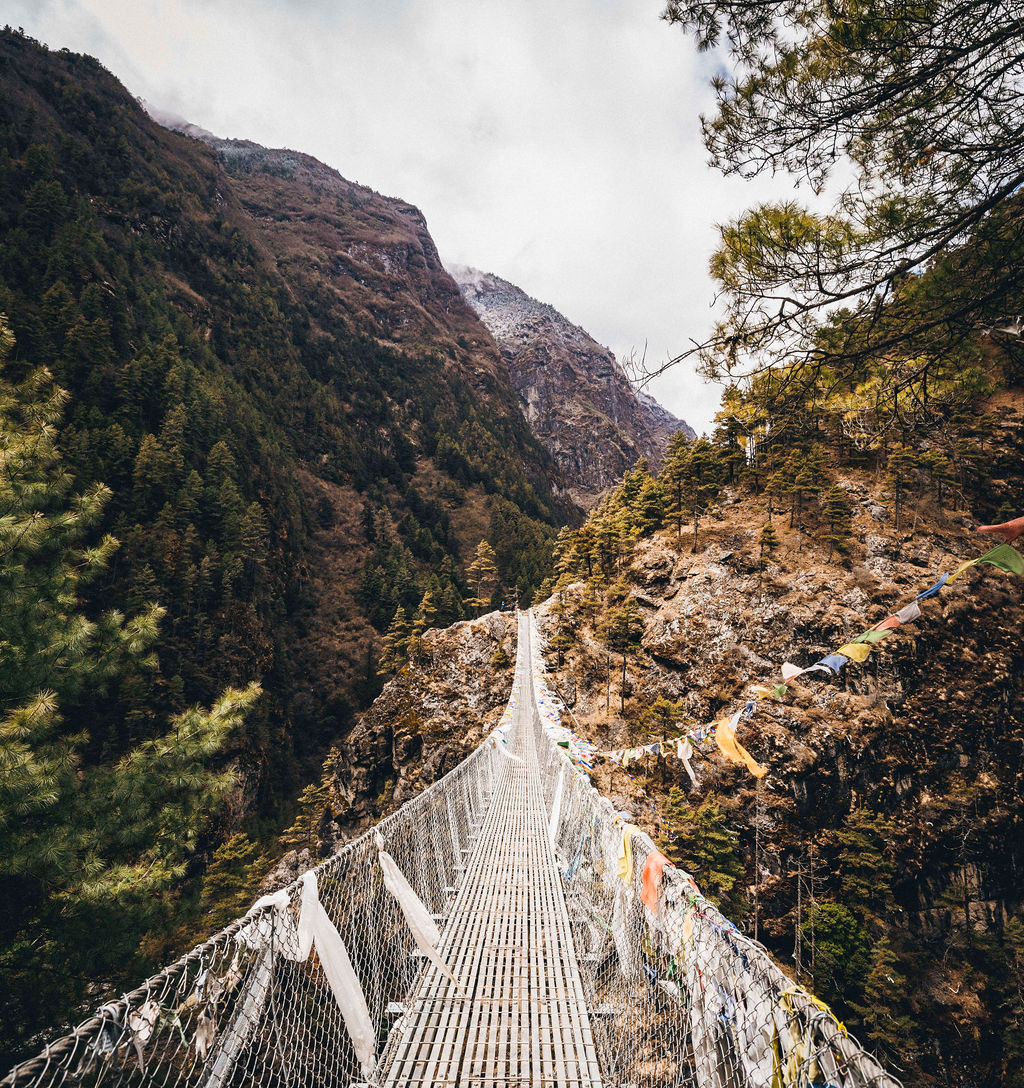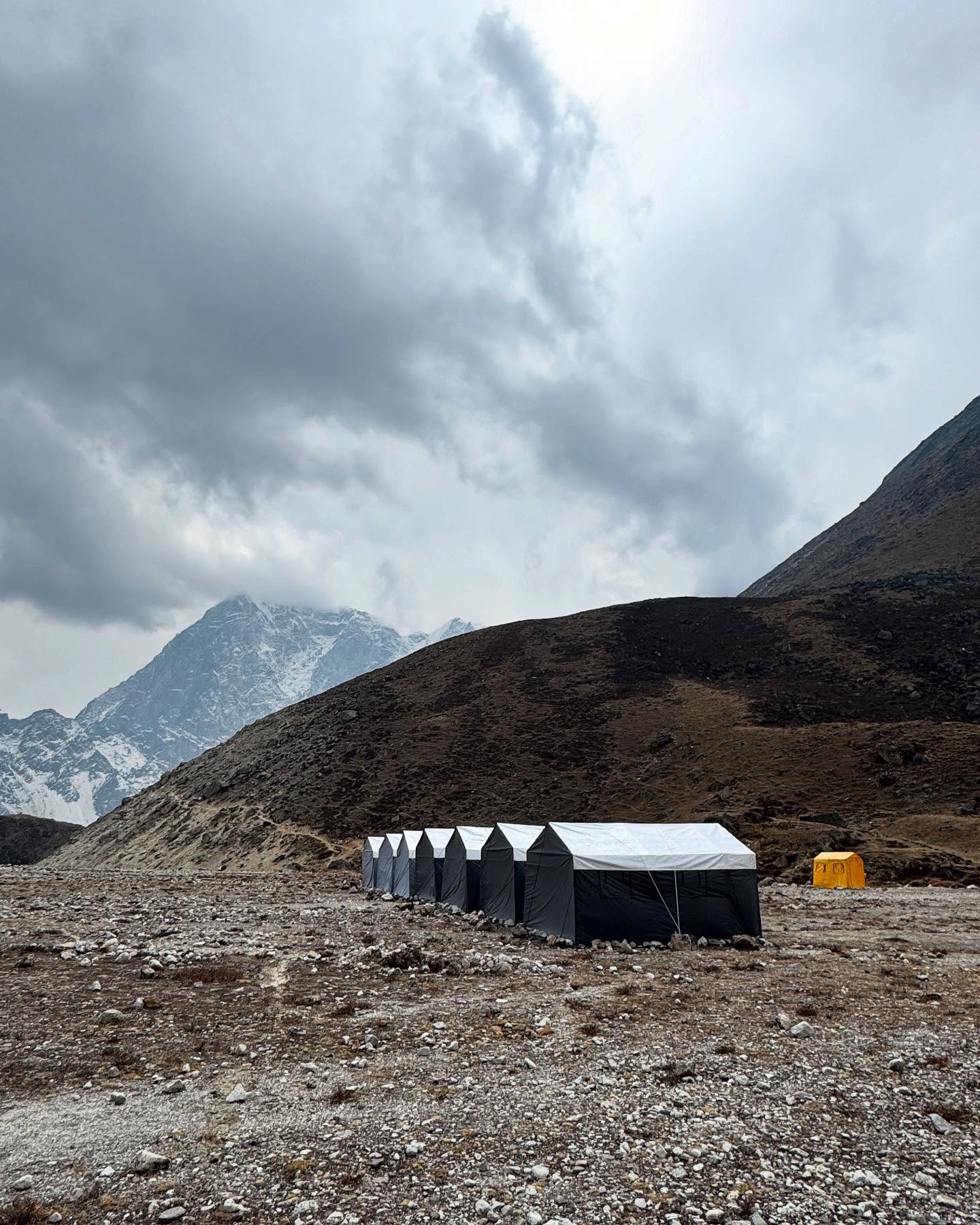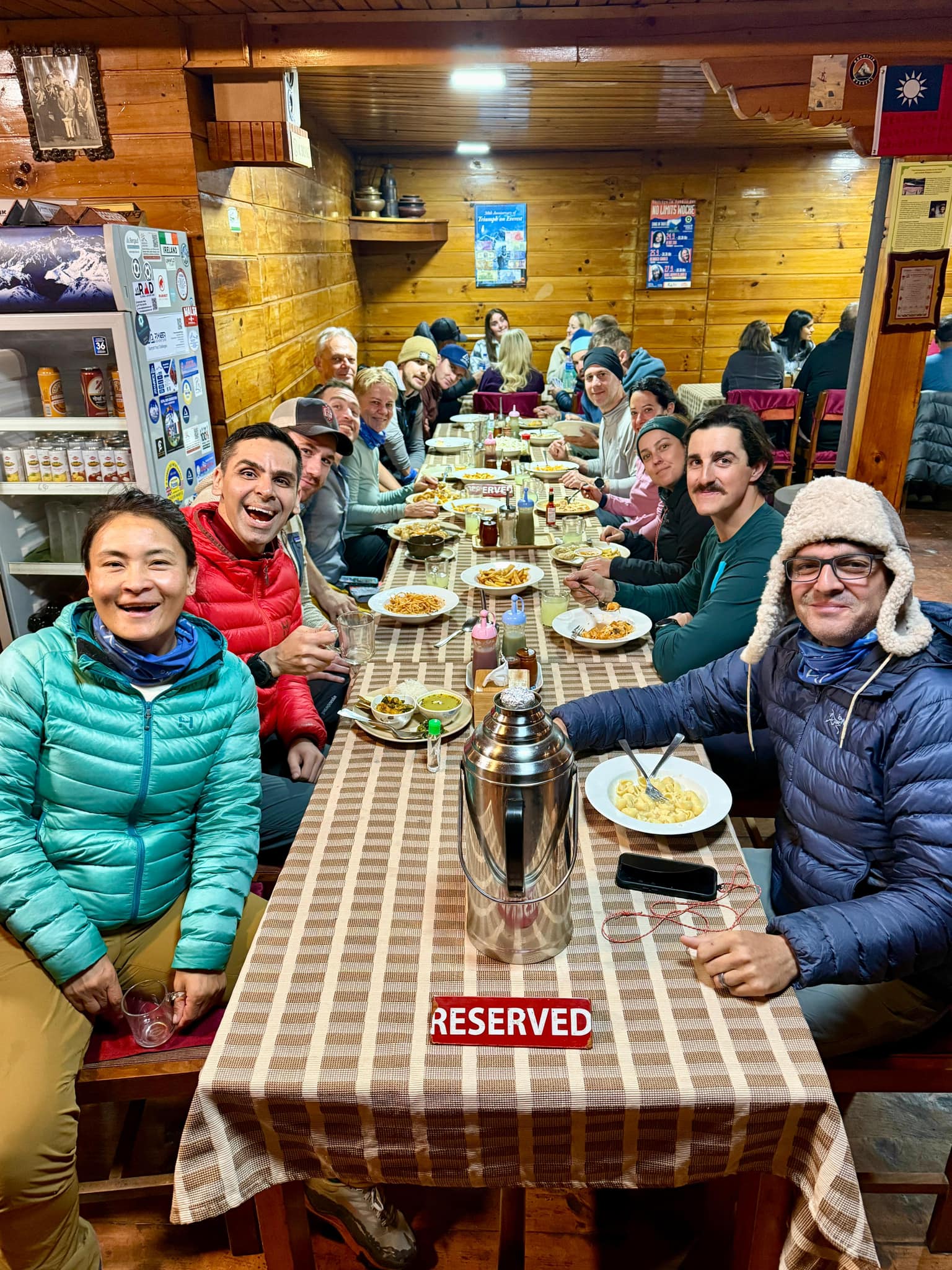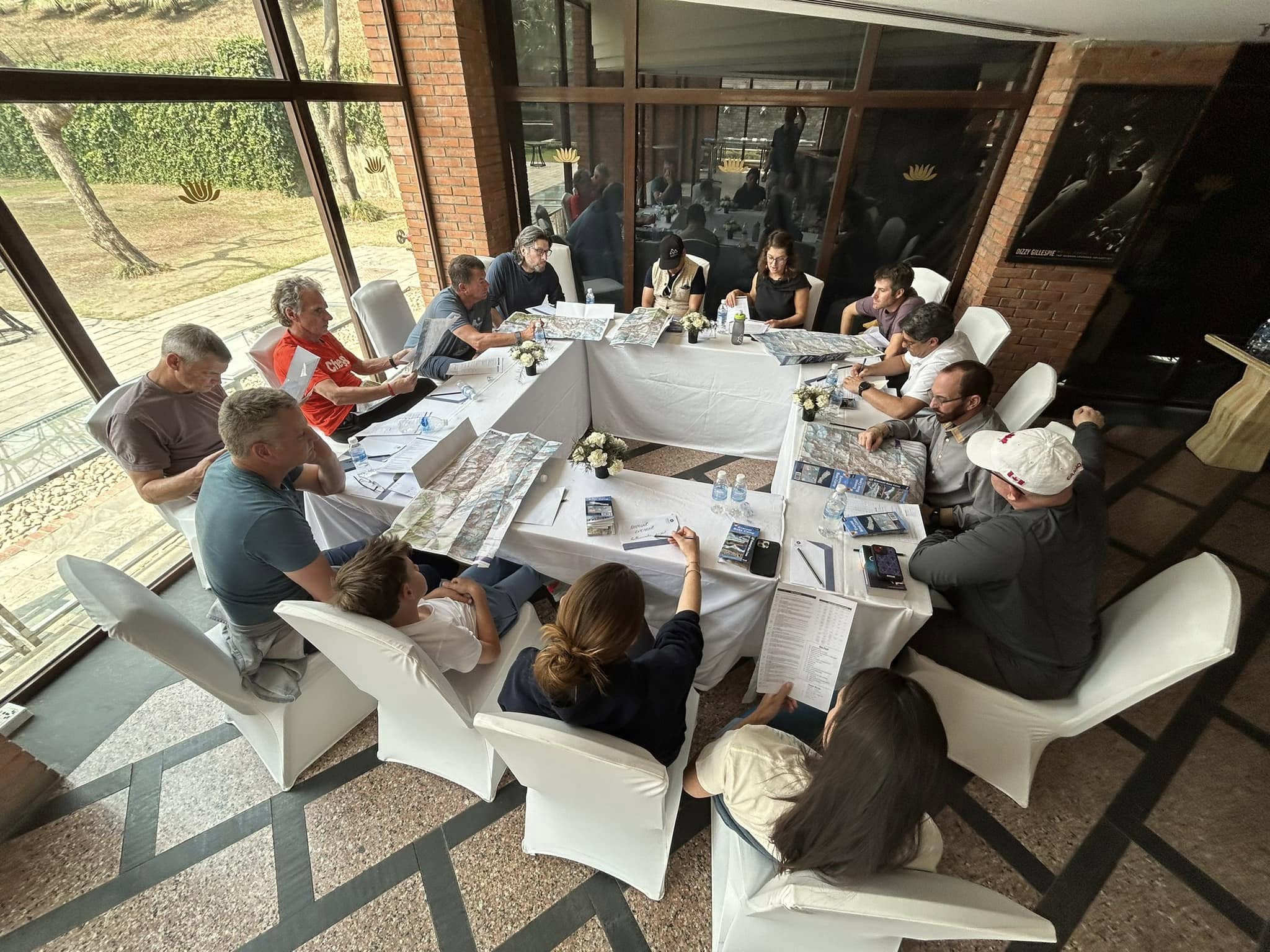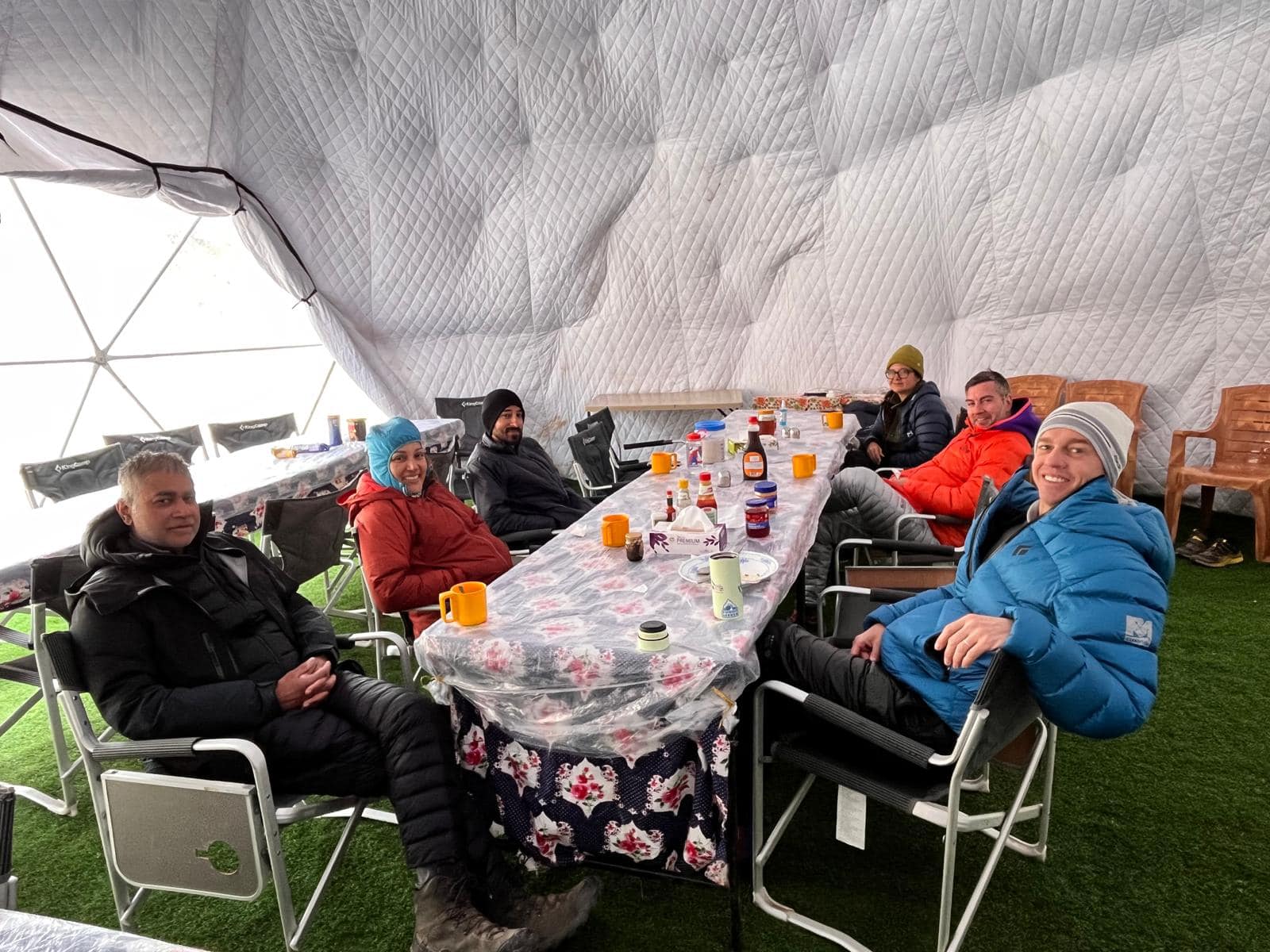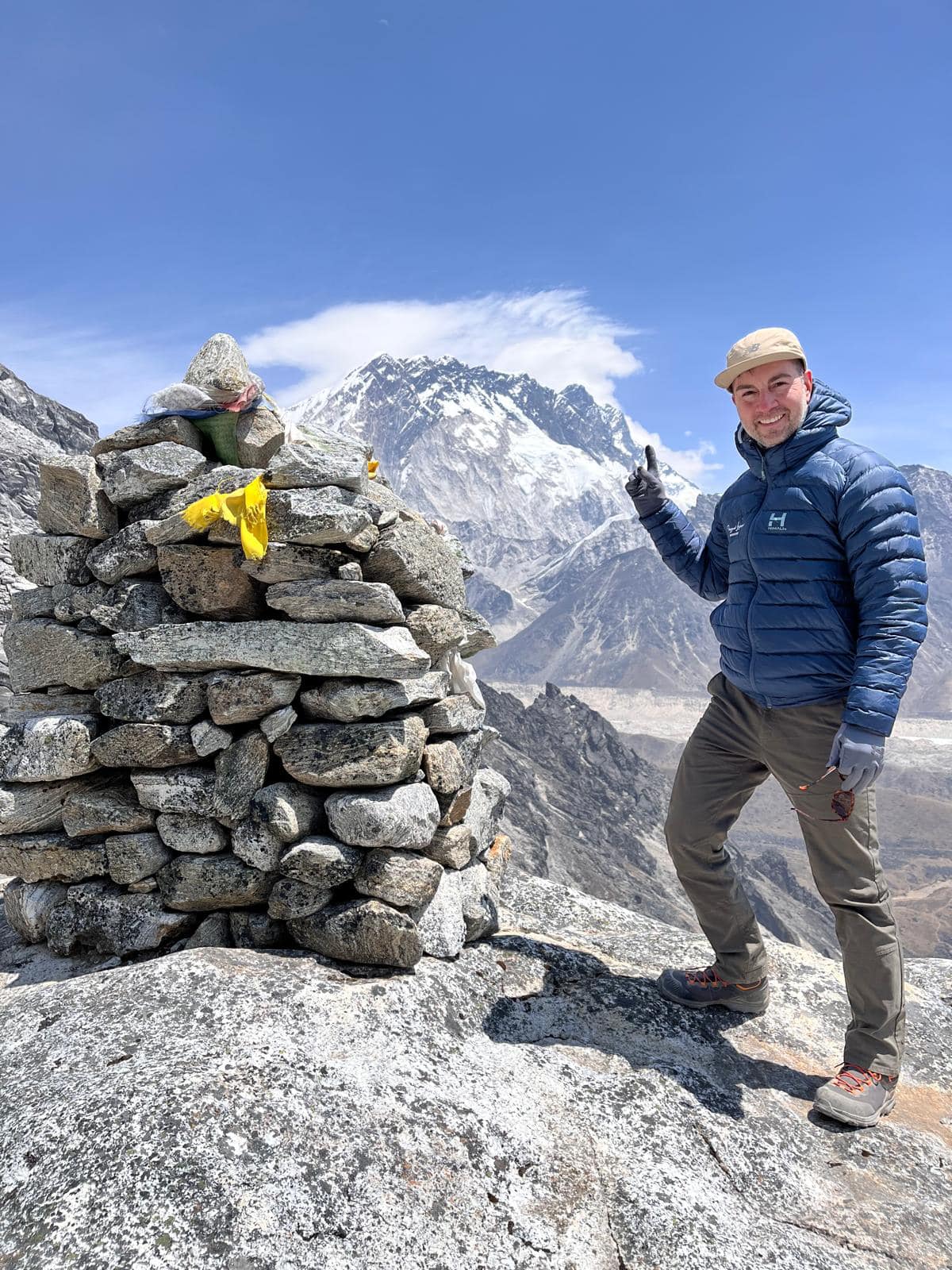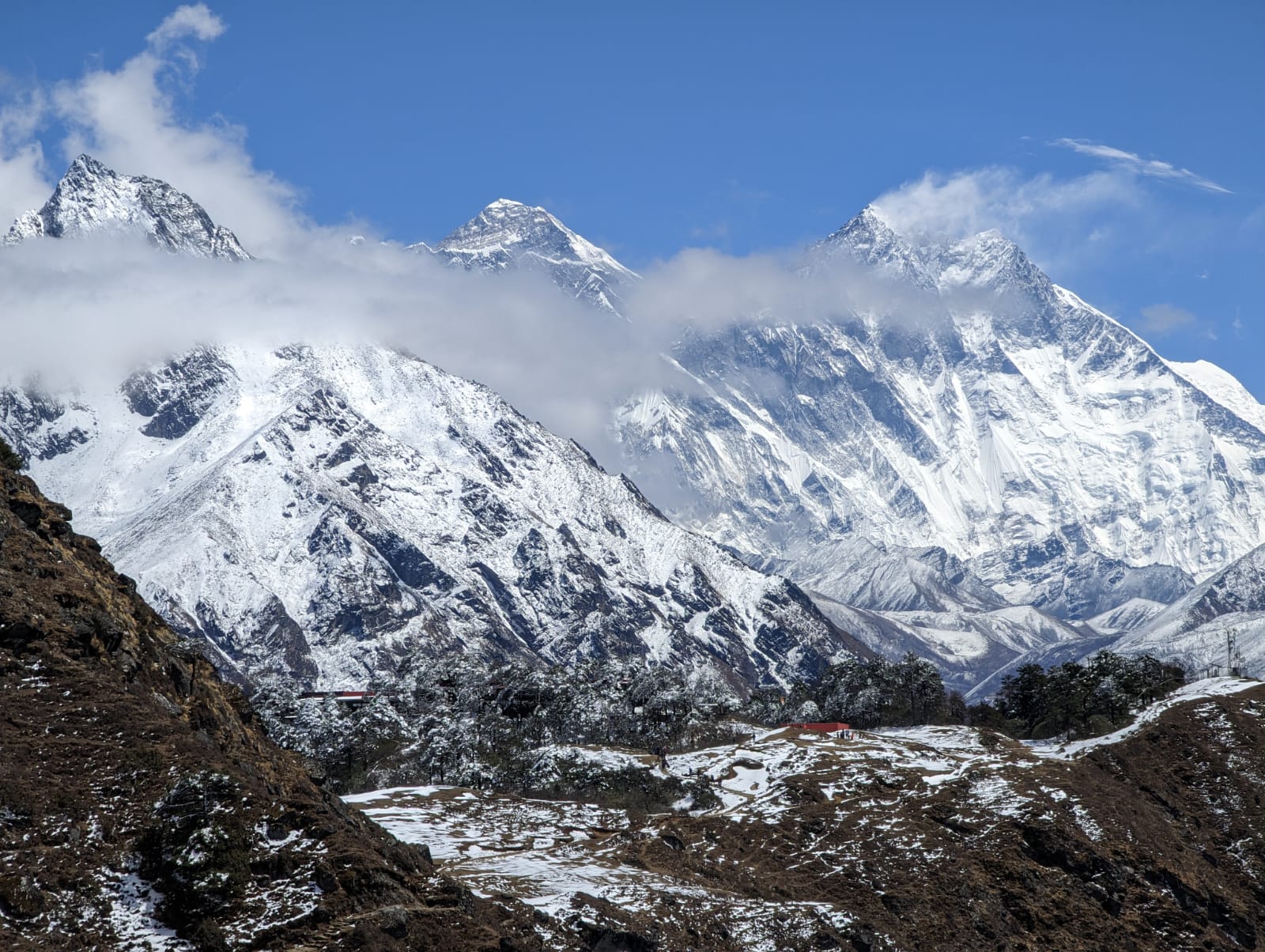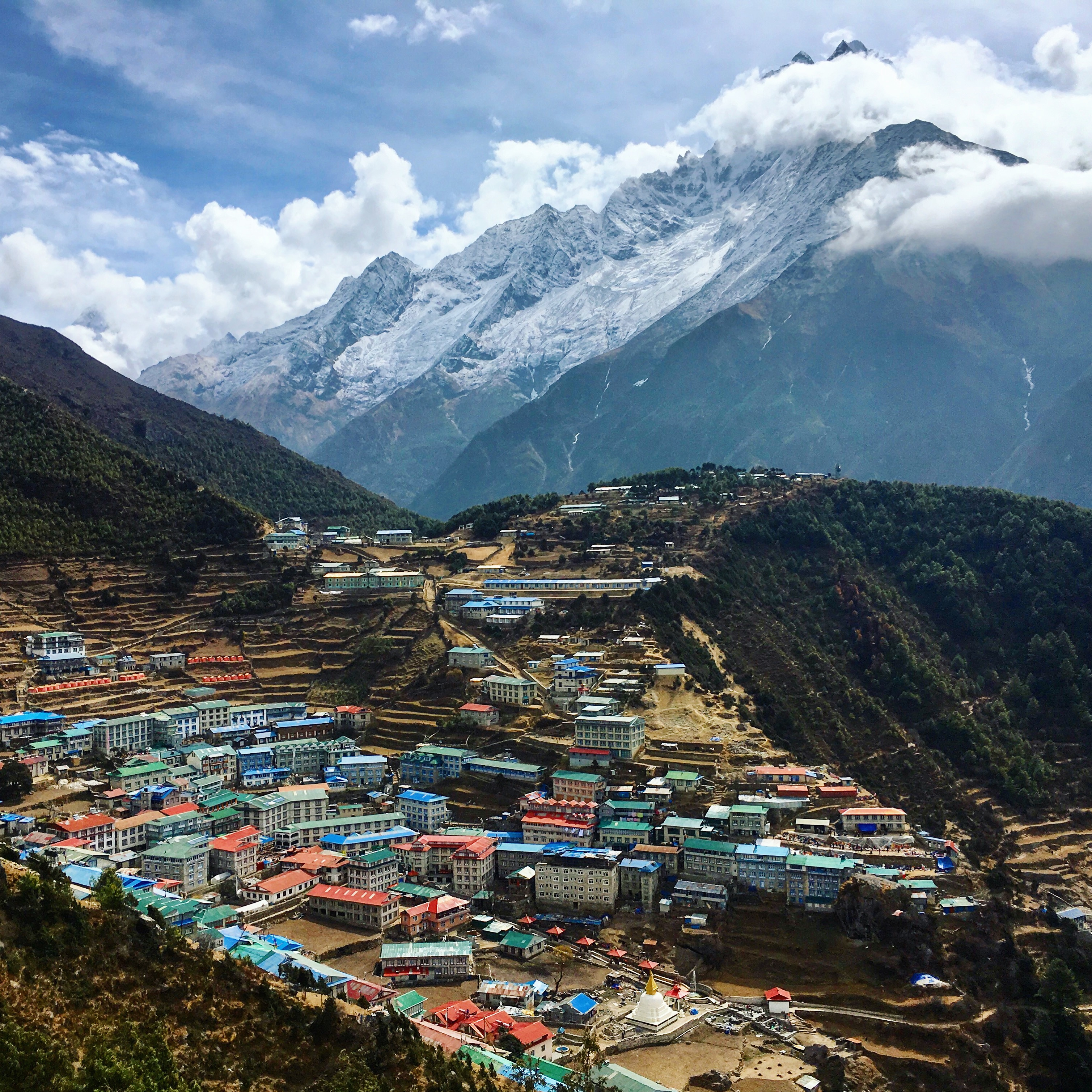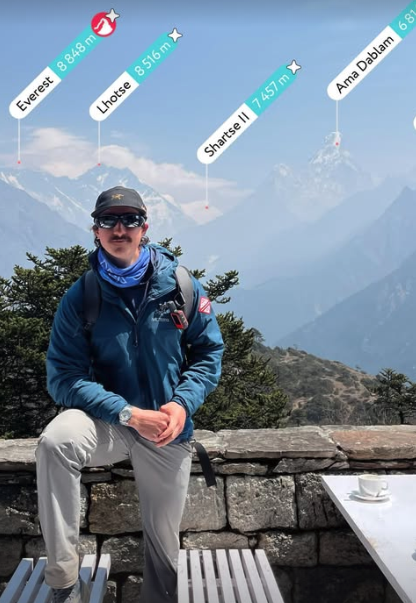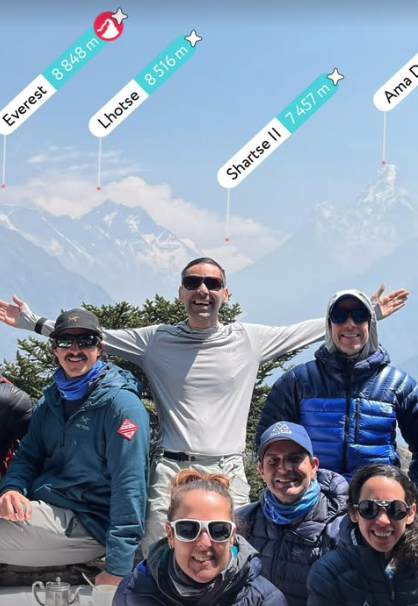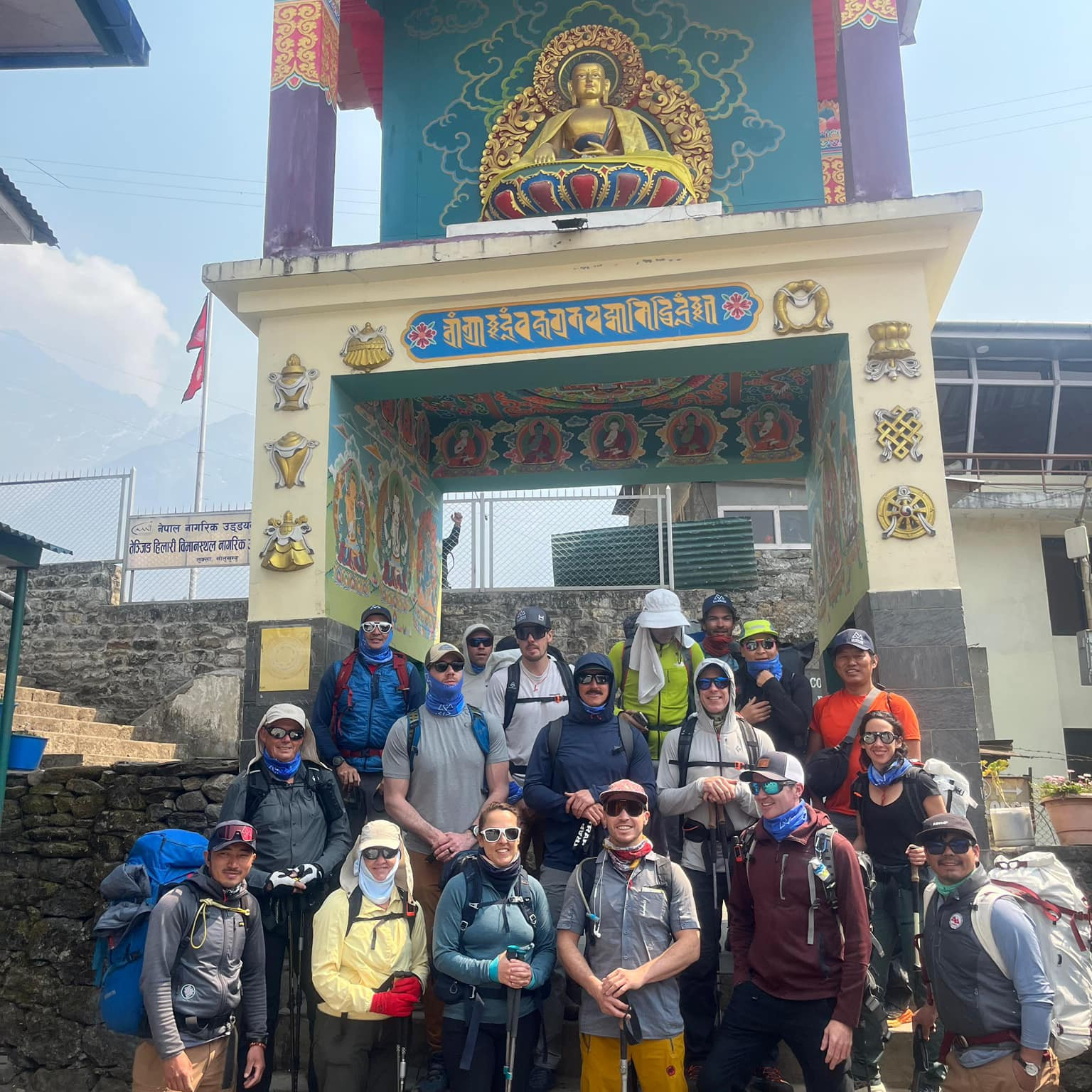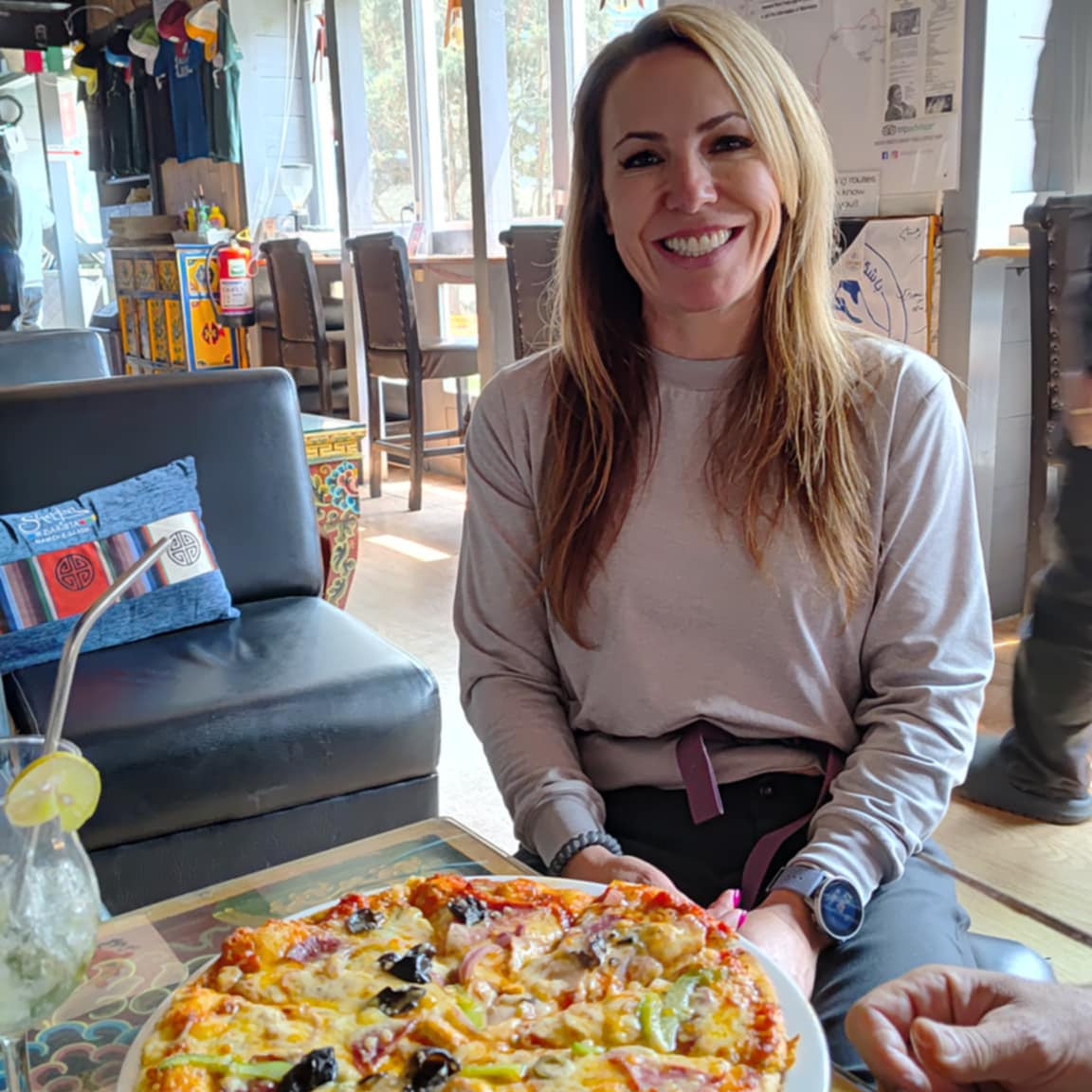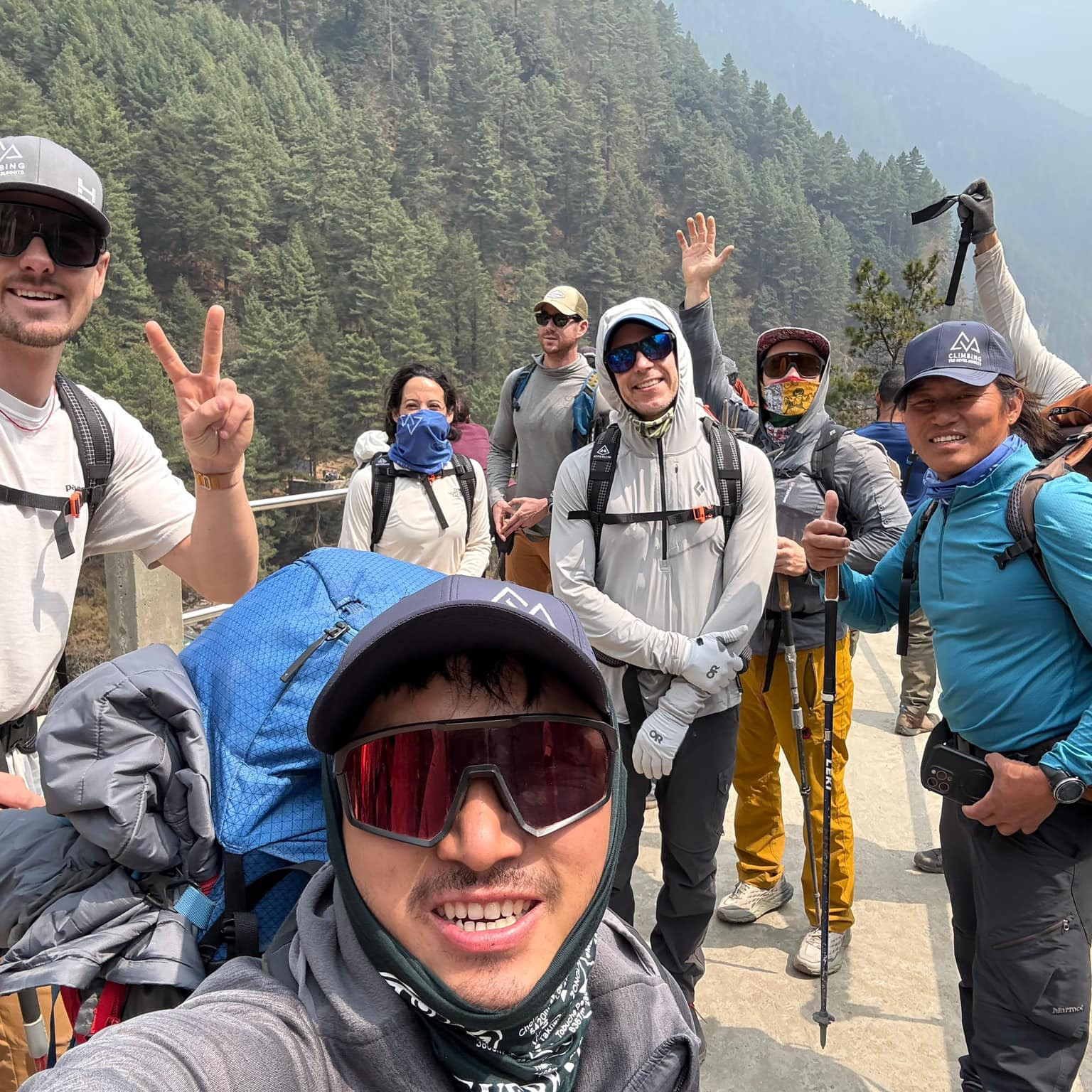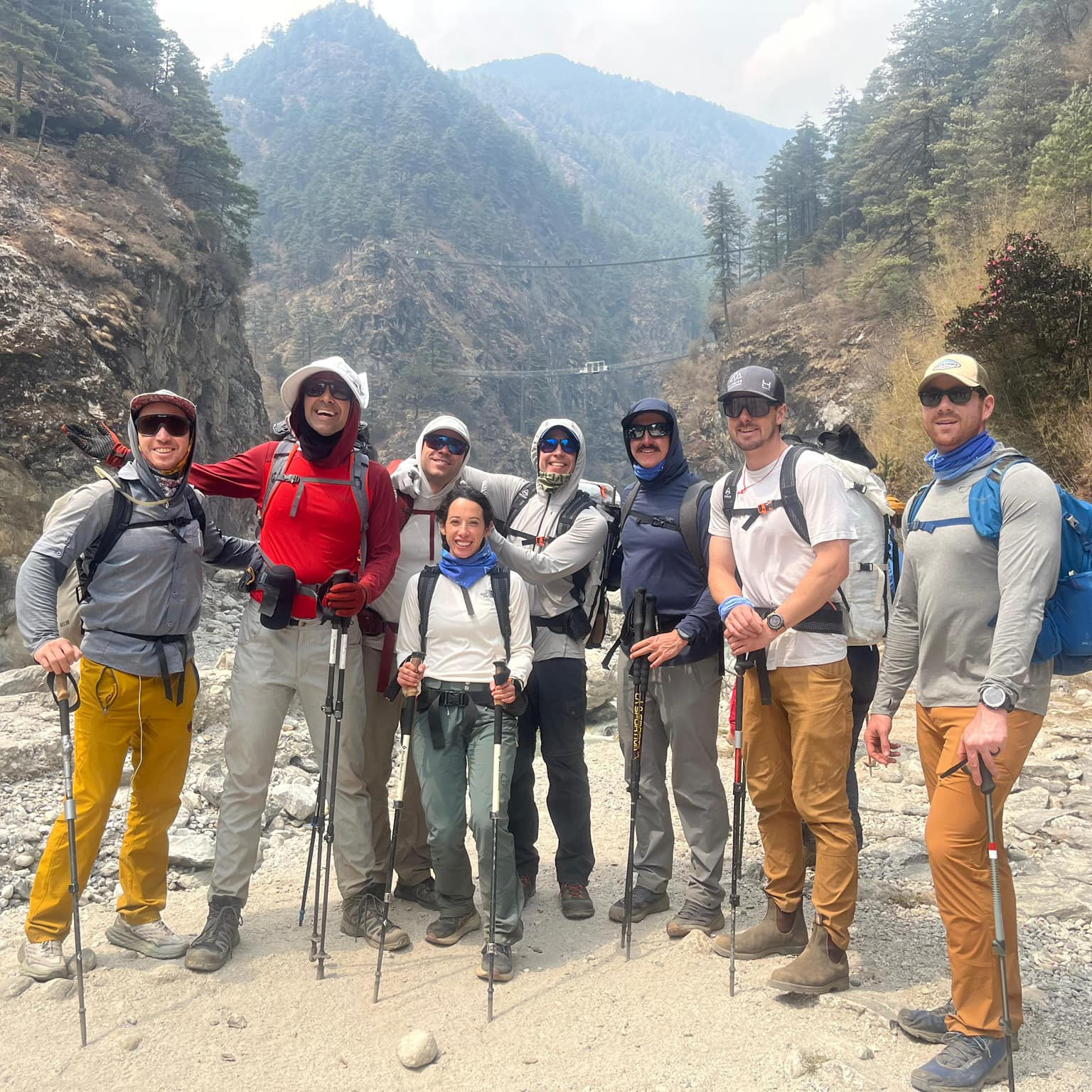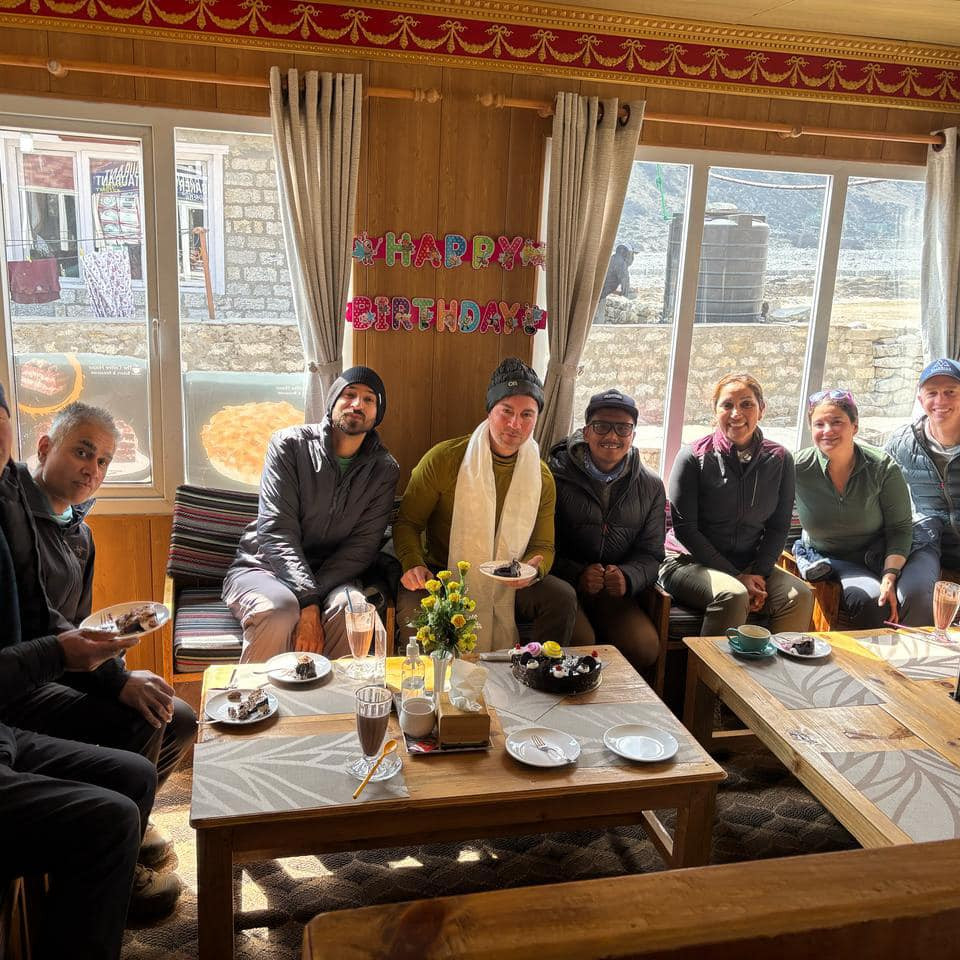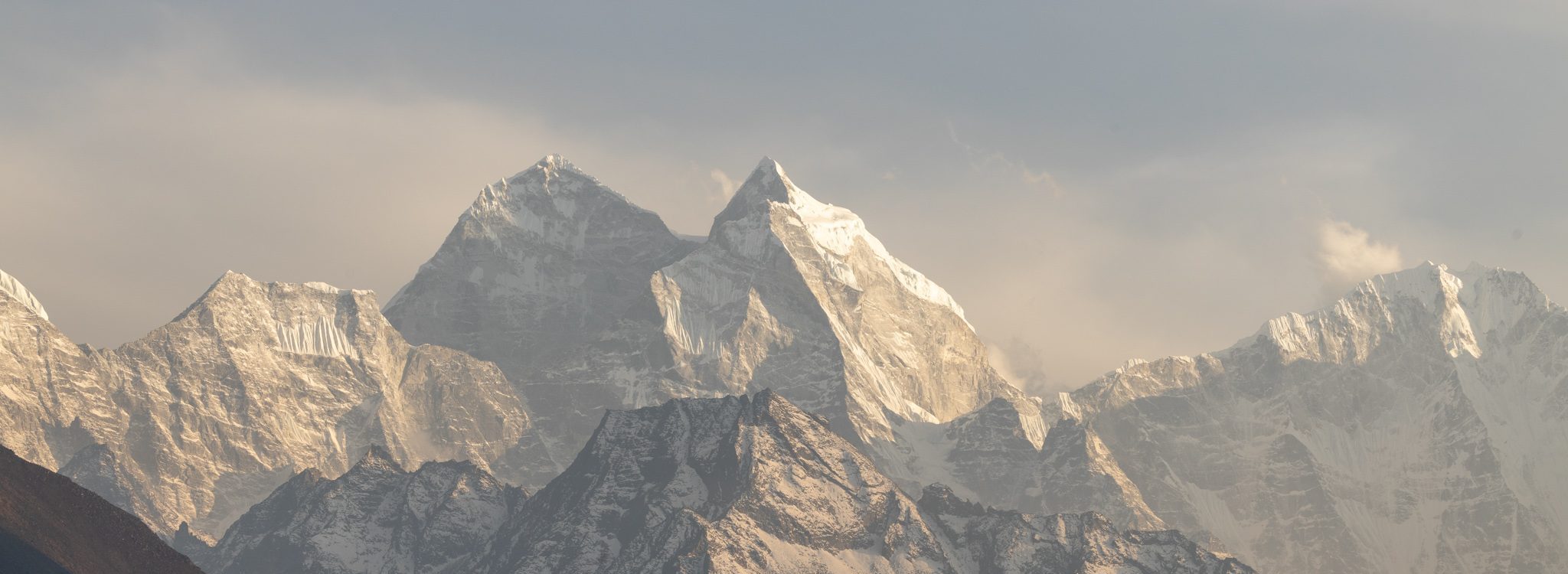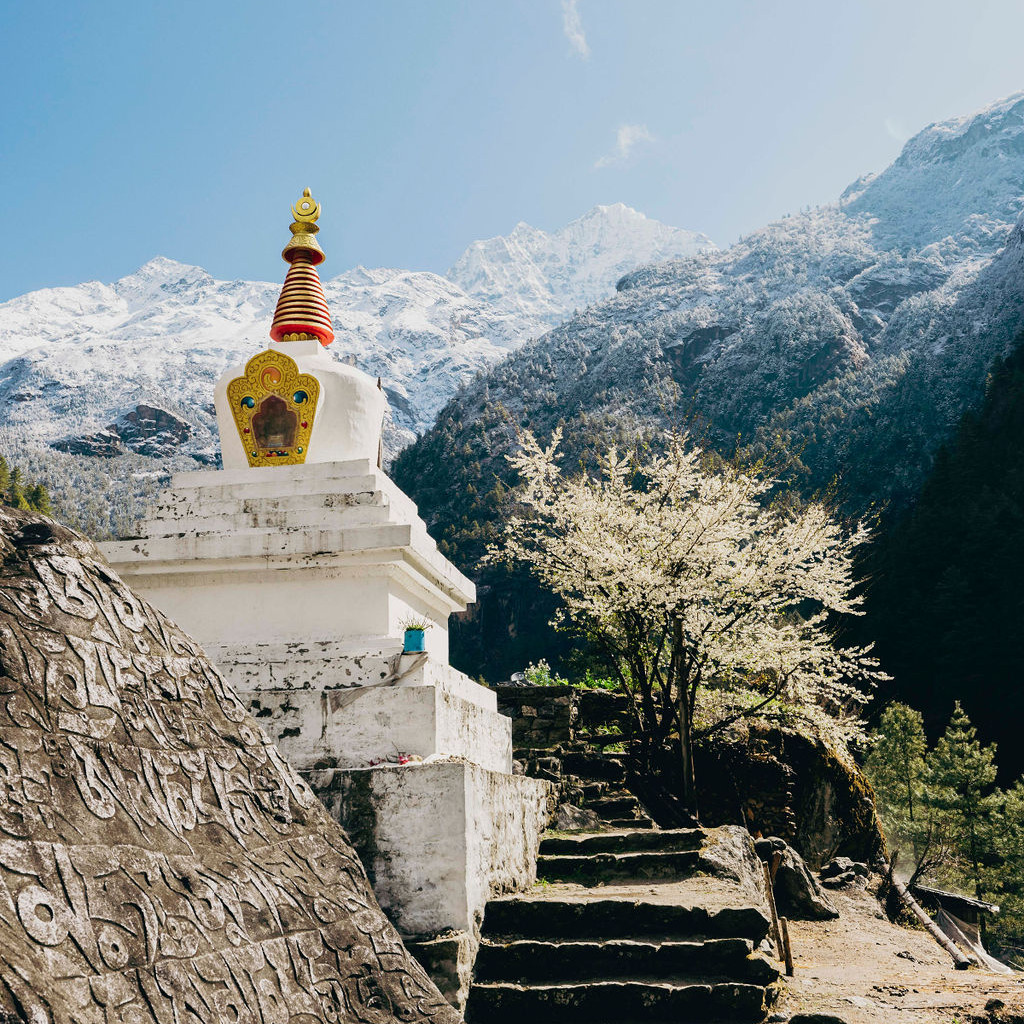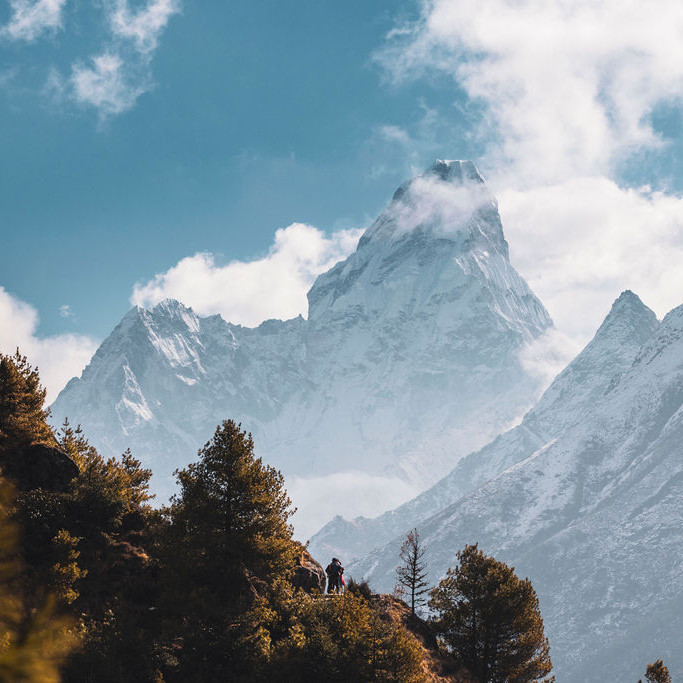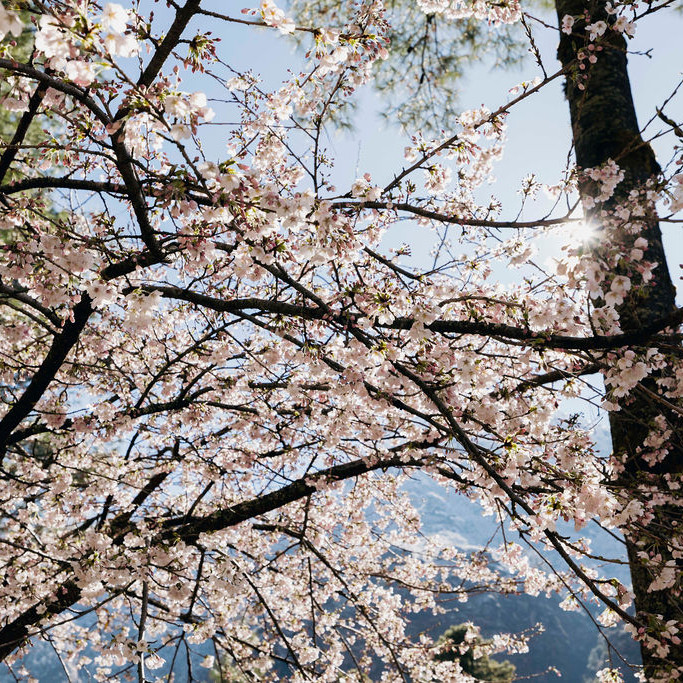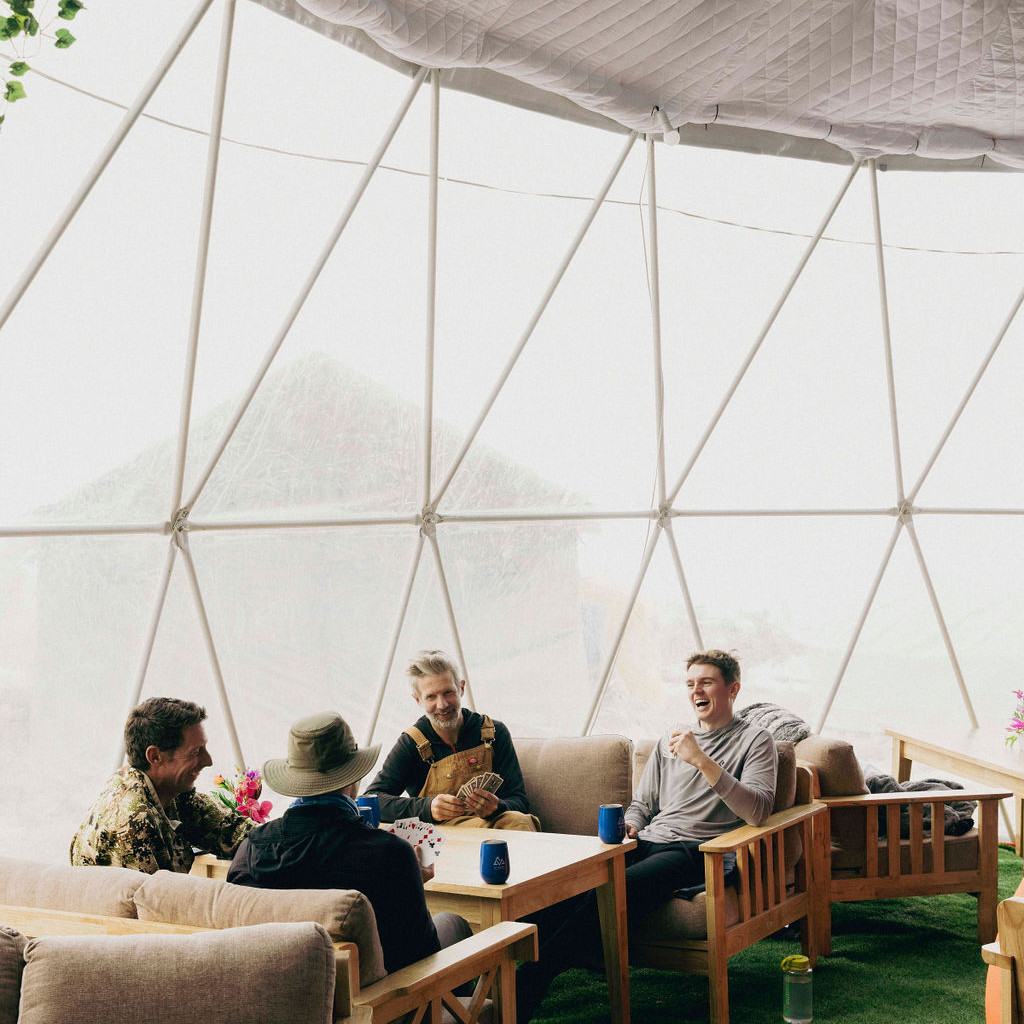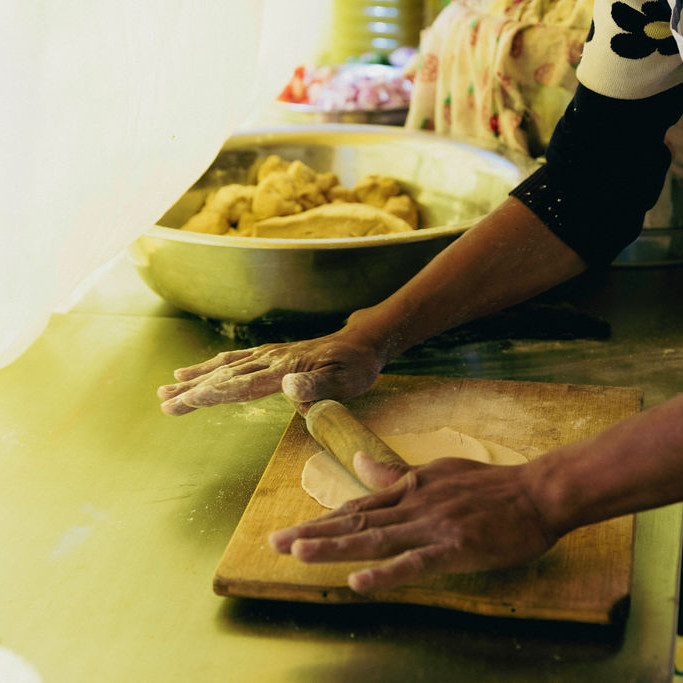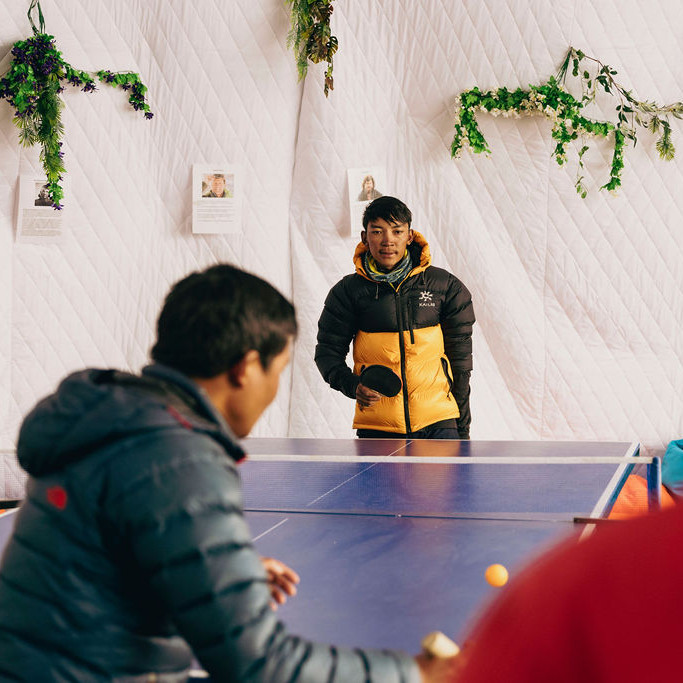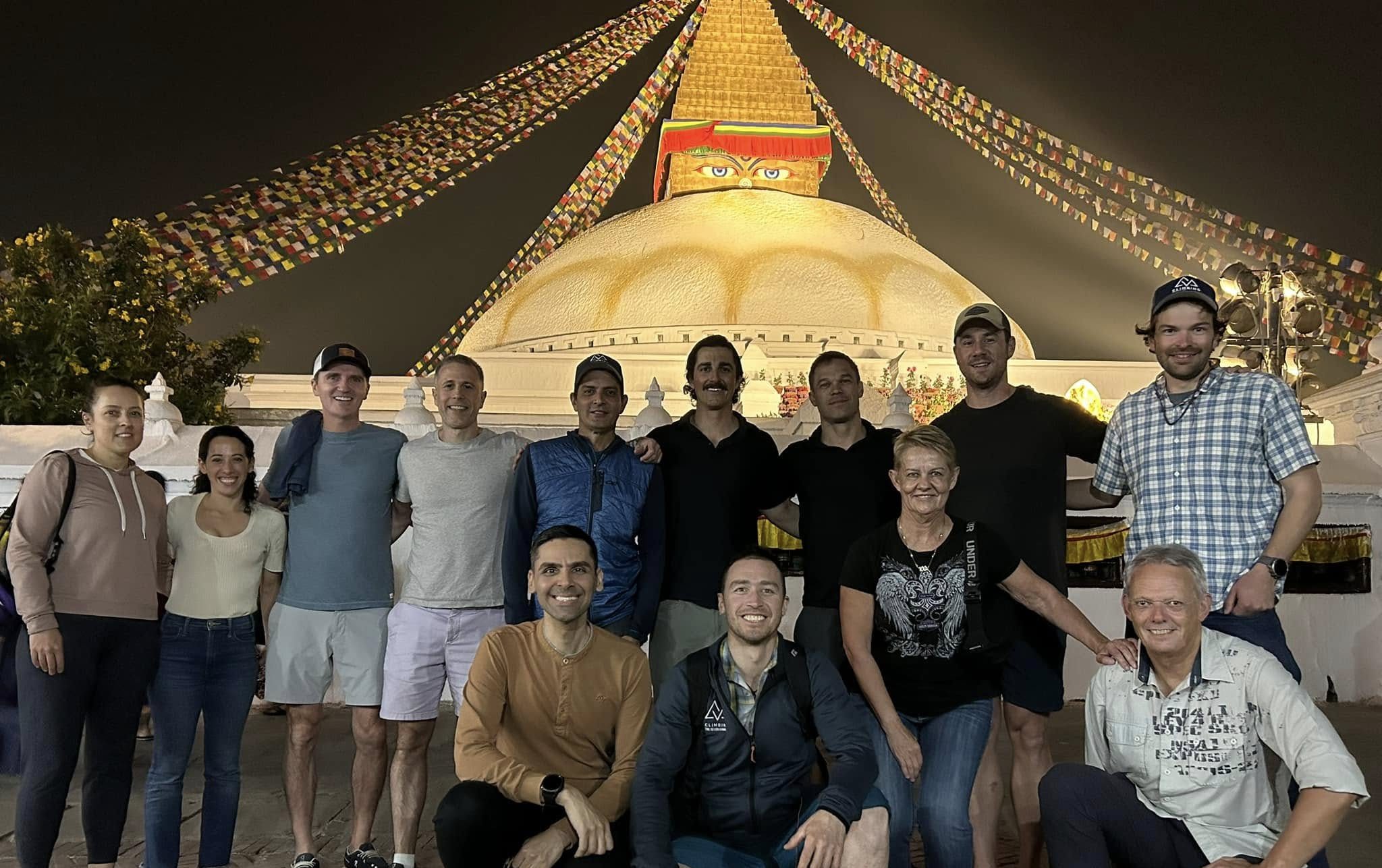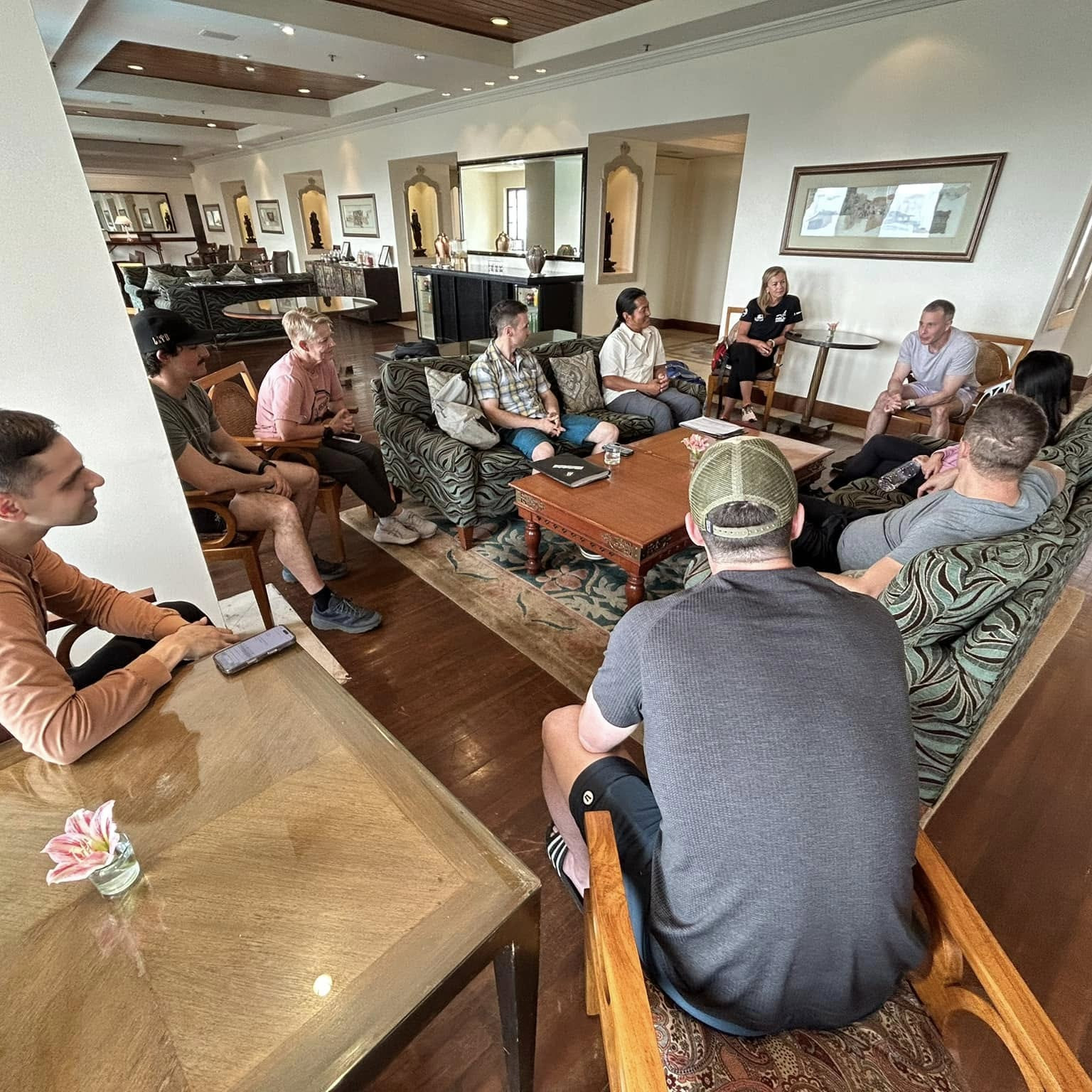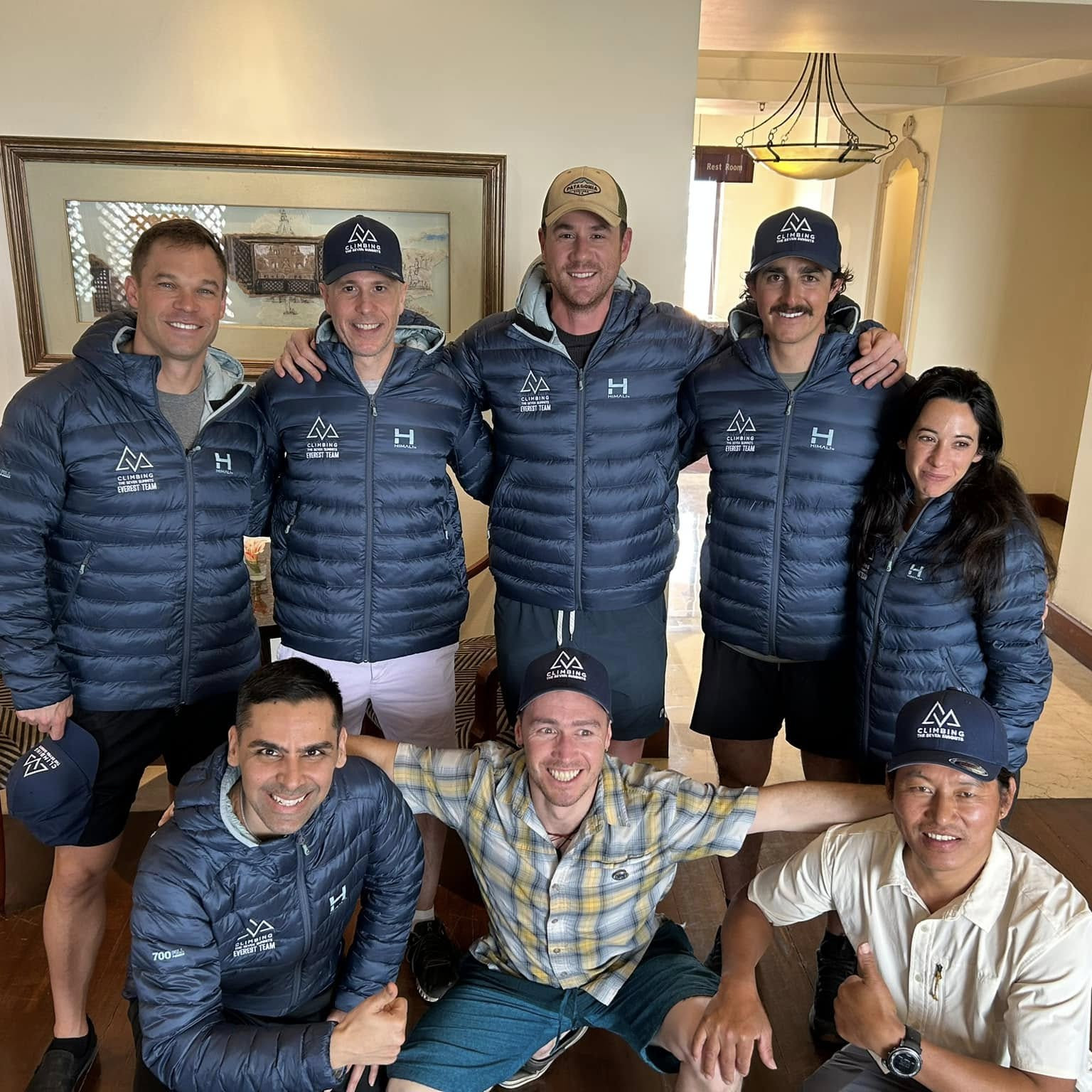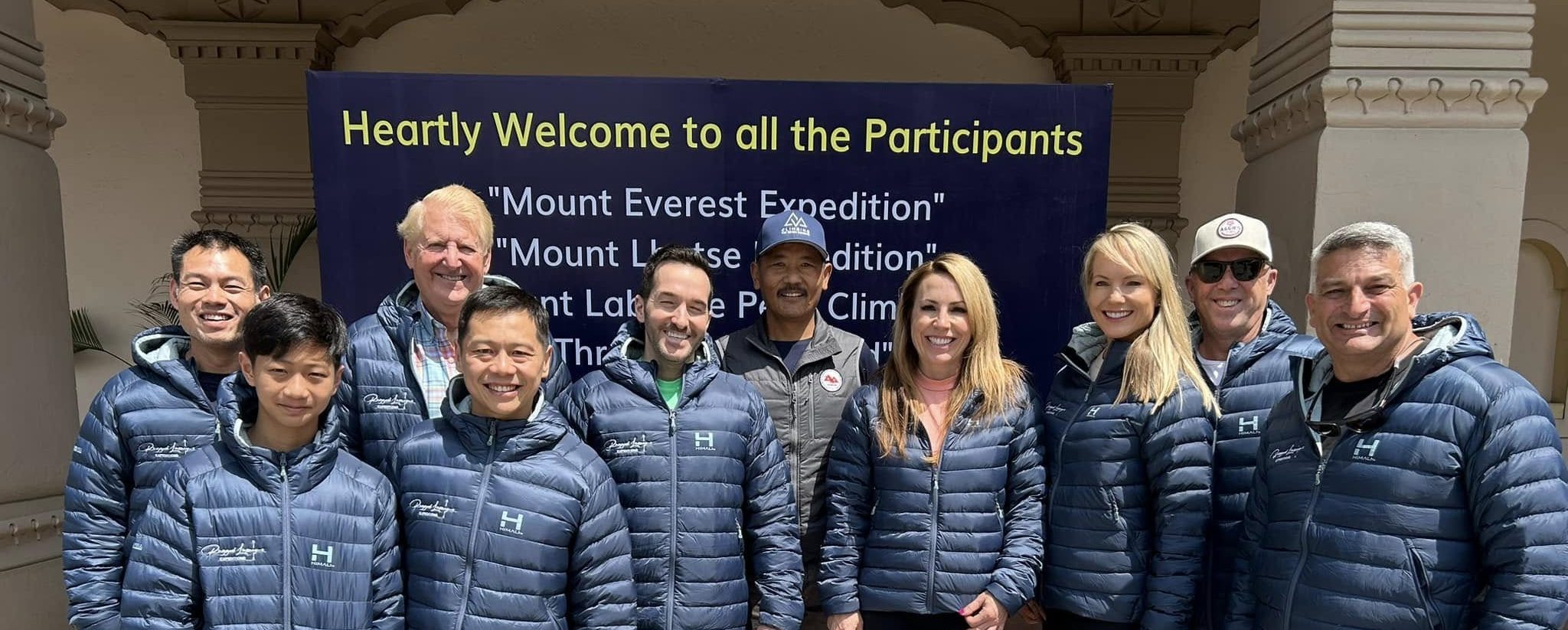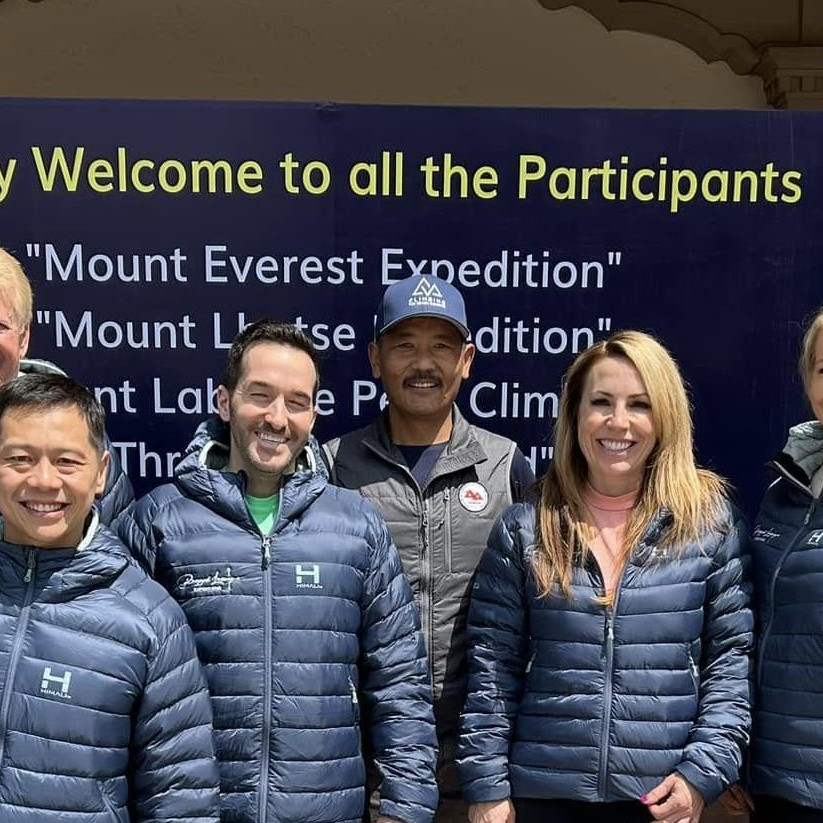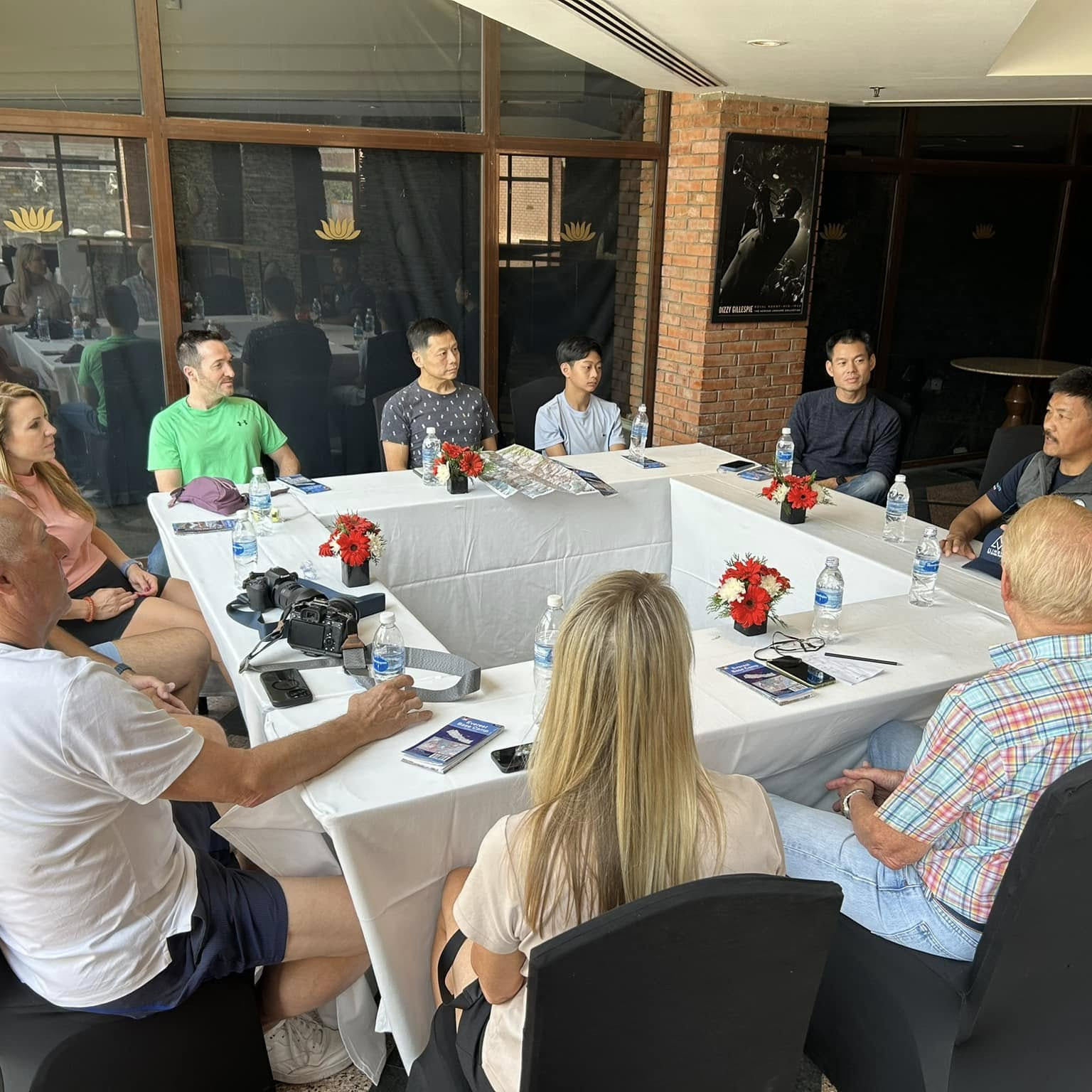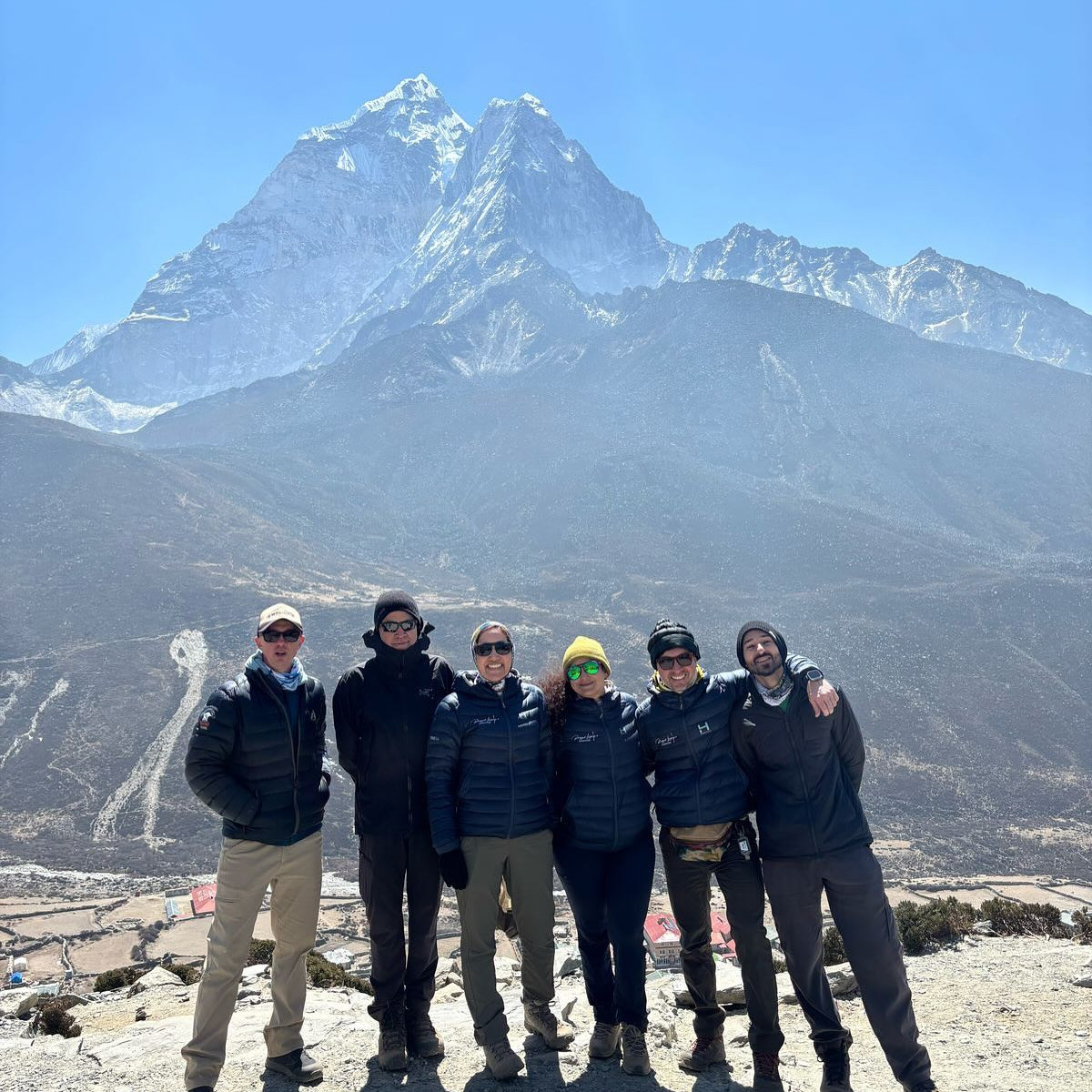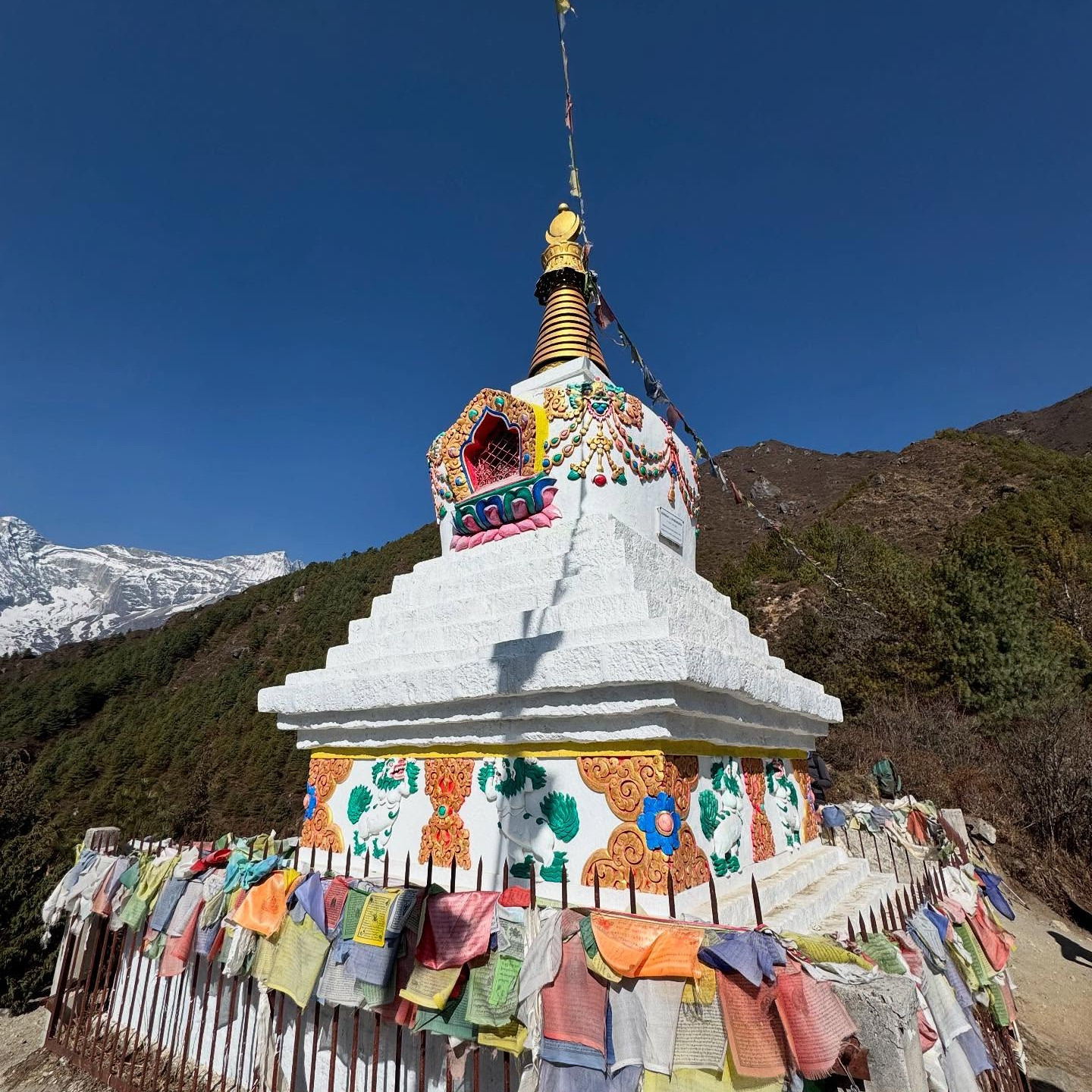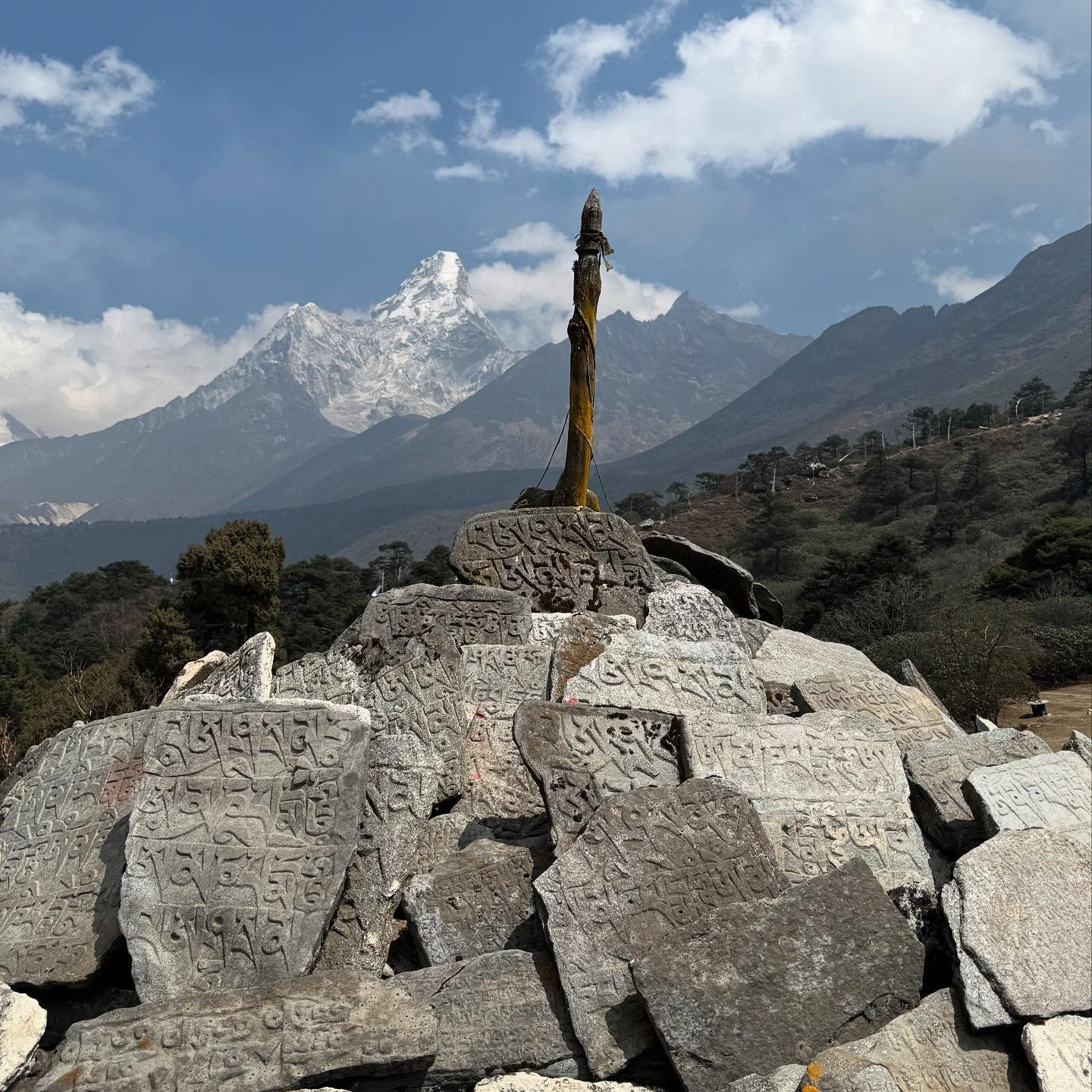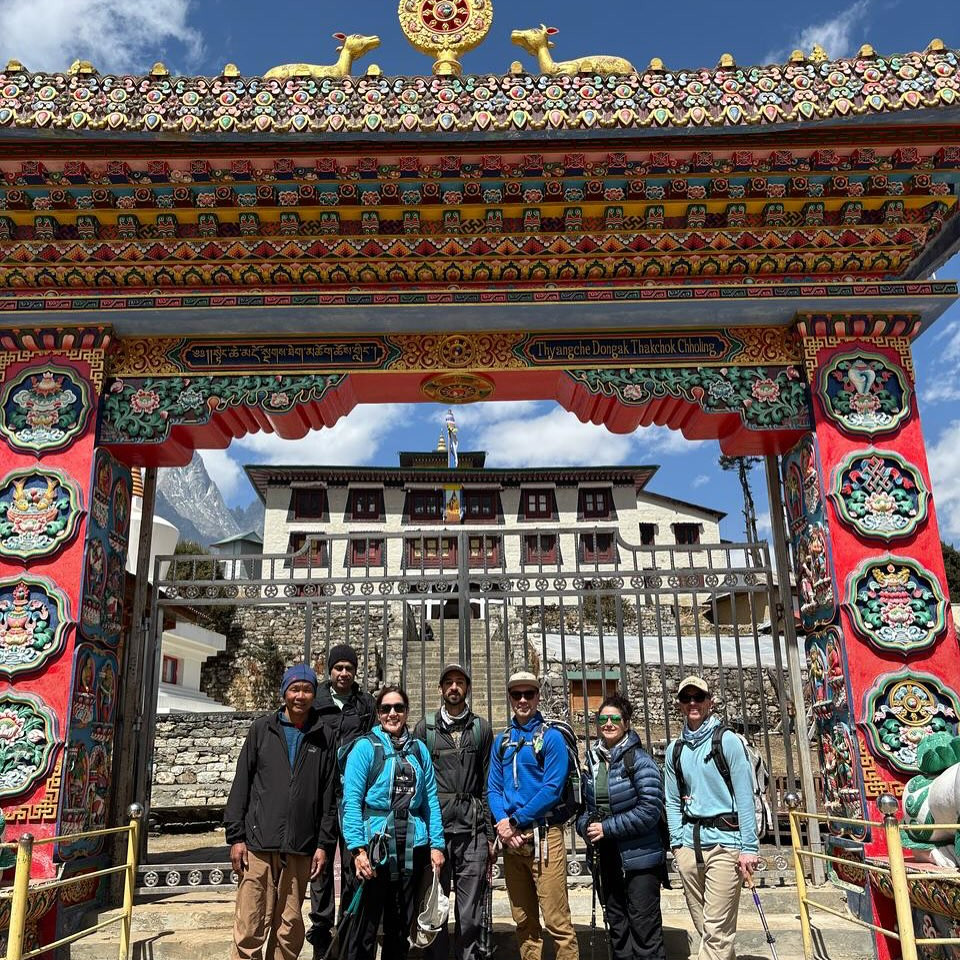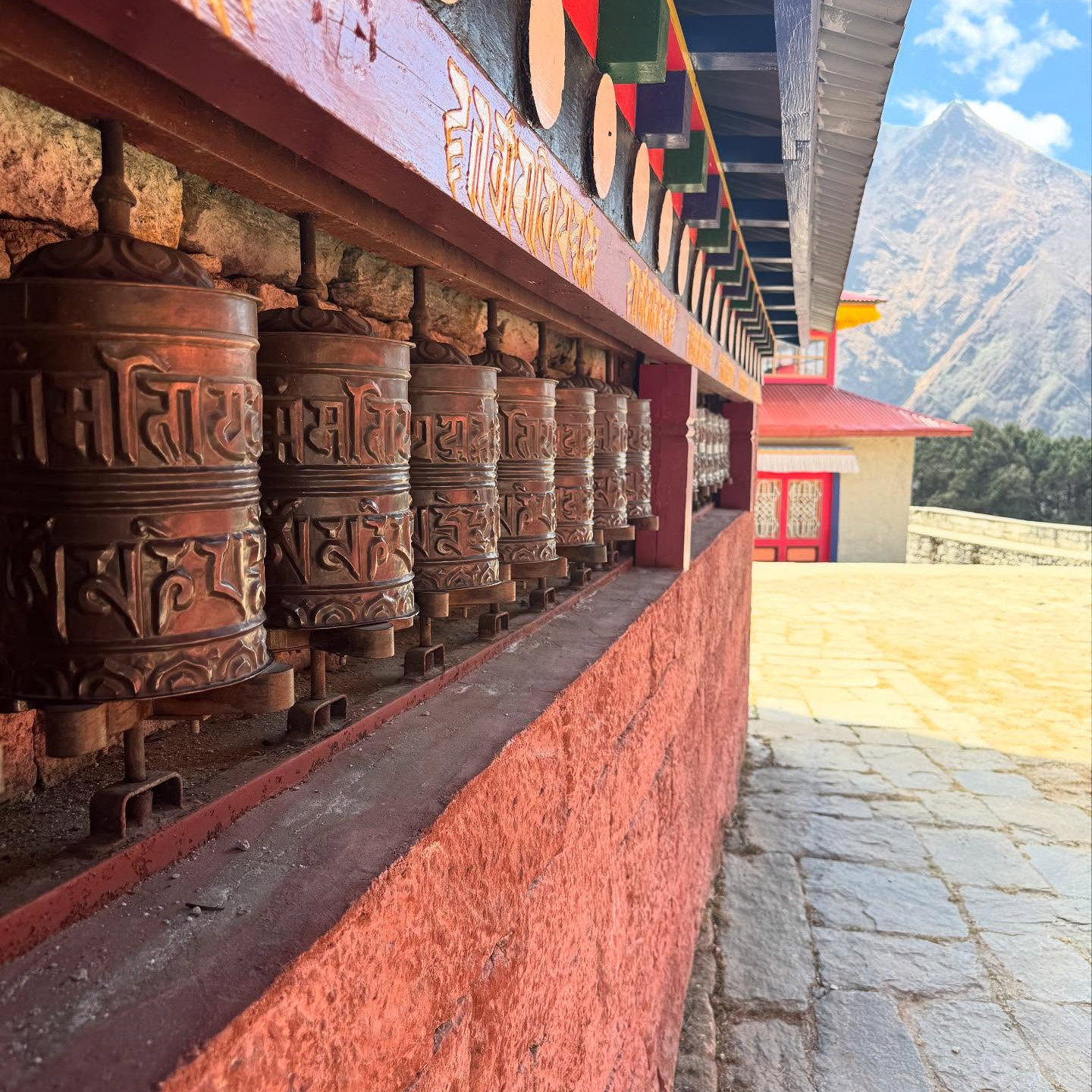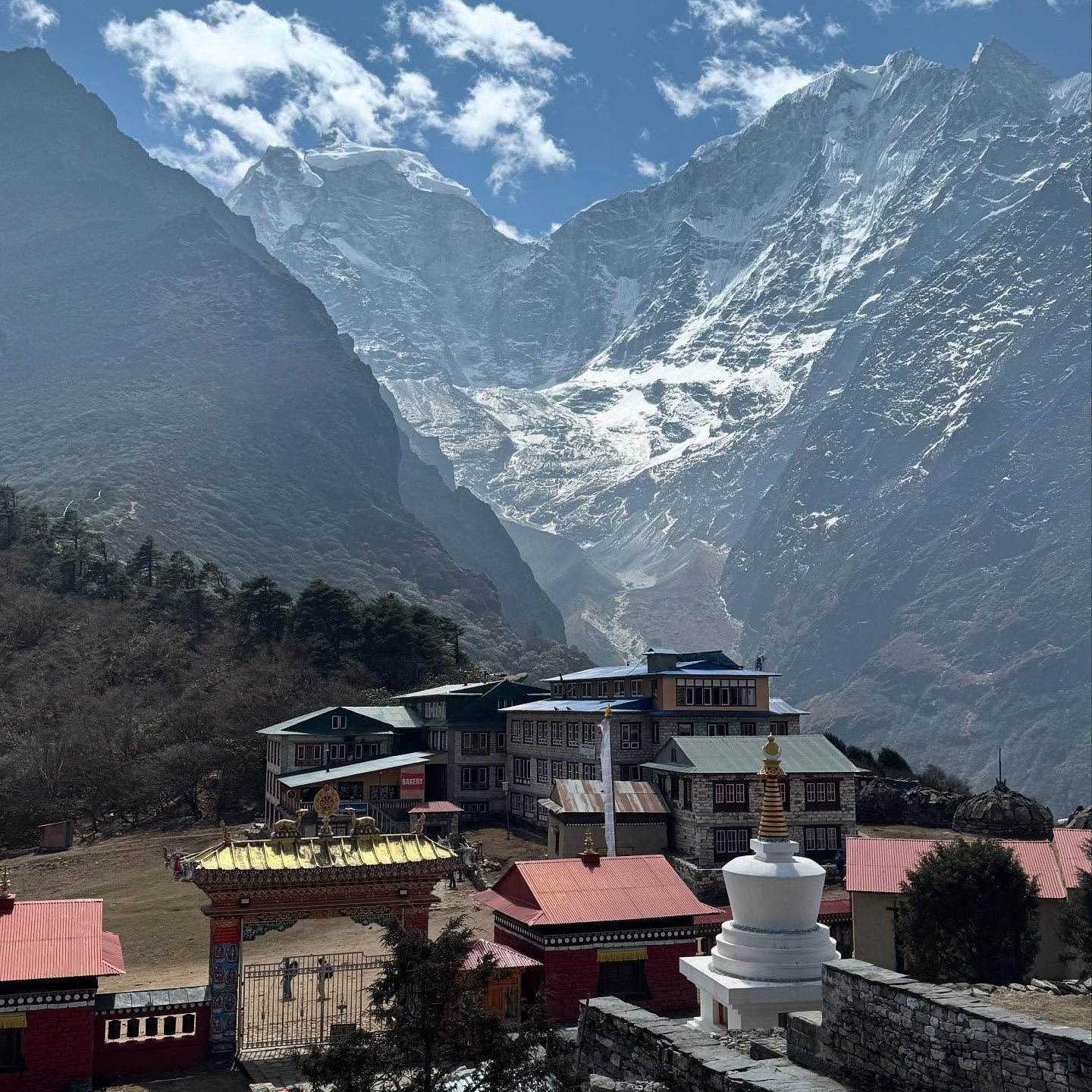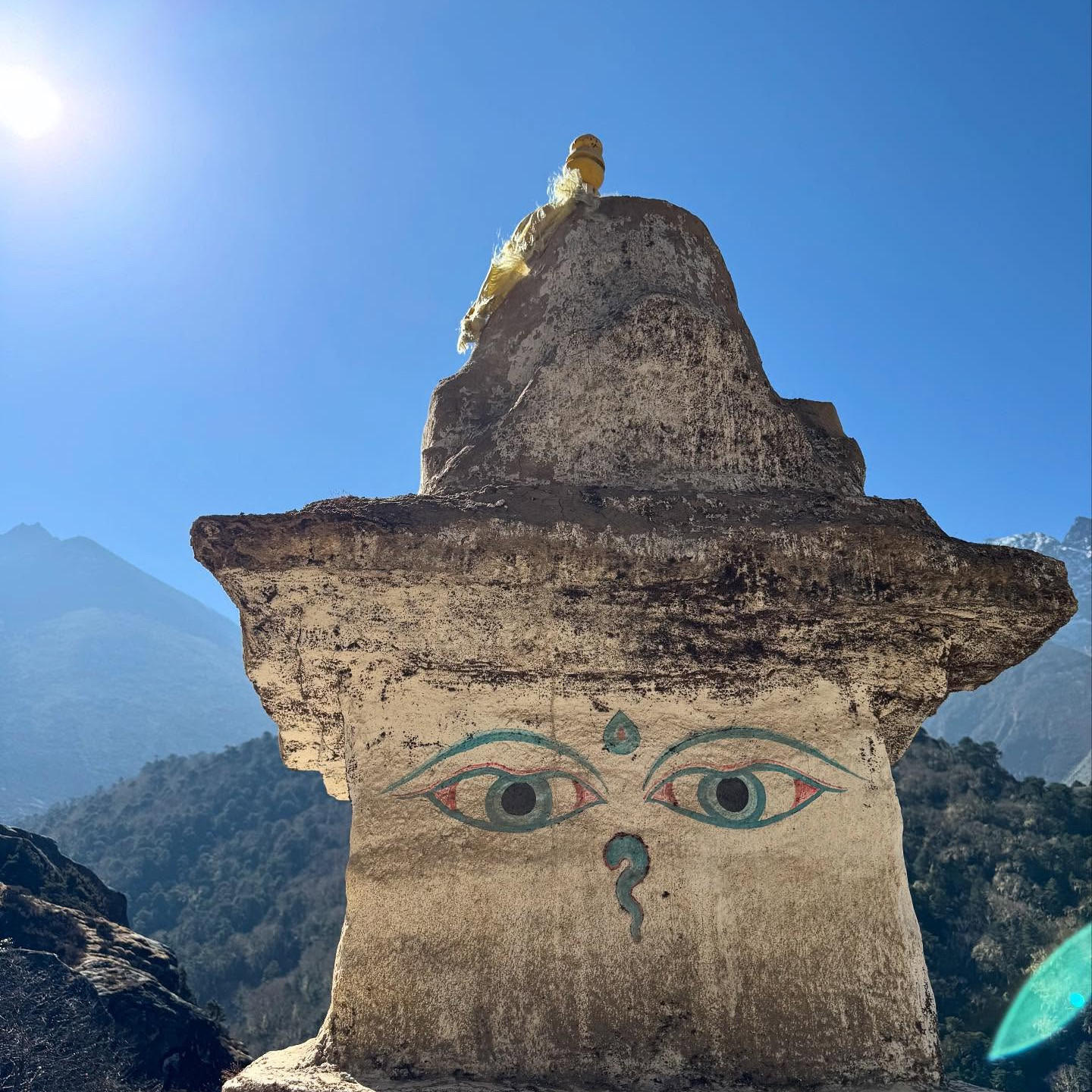Mike Bennett’s Road to Everest
Mike Bennett’s Road to Everest
As spring unfolded in the Himalayas, our Western Guided Everest Team made their way toward the world’s highest peak, guided by a team of world-class guides. Among them is Mike Bennett, a U.S. Marine Corps veteran, Leave No Trace Master Educator, and all-around mountain athlete with deep experience across North and South America and Antarctica.
Mike’s journey to Everest didn’t start in the Himalayas. It began in the forests and fields of upstate New York, sharpened through years of military service, and matured on the glaciated peaks of the Pacific Northwest, Alaska, South America, and even Antarctica. Mike is an accomplished guide and mountaineer, having summited Baker, Vinson, and Aconcagua. Although his climbing resume is extensive, his aspirations continue to grow.
Just like many of us, Mike has his own big mountain dreams. We decided to sit down with him before his bucket-list Everest expedition (spoiler alert: Mike did, in fact, successfully summit the world’s tallest peak) to talk about everything from Mount Baker to Aconcagua.
How did your experience in the Marine Corps shape your approach to mountaineering and guiding in the mountains today?
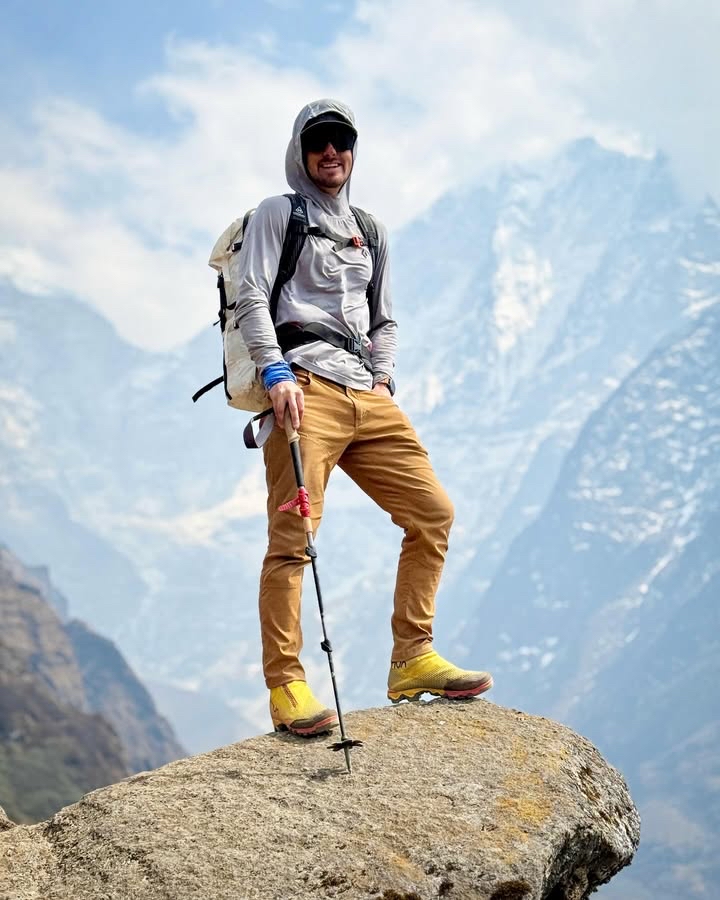
My time in the military has proven to be very valuable for transitioning into the realm of mountain climbing. Many of the qualities and characteristics that make for a solid Marine also make for a fairly hardy mountain climber. I find that my past experience of serving has given me a great tolerance for many of mountaineering’s challenging aspects, allowing me to endure many of the difficulties that are innate to climbing. Although not directly analogous, there is a certain necessity of grit to perform well in both disciplines, something I seem to do fairly well.
Vinson is one of the most remote of the Seven Summits, and you recently guided our first team of the season. Can you share a moment from that expedition that was particularly rewarding?
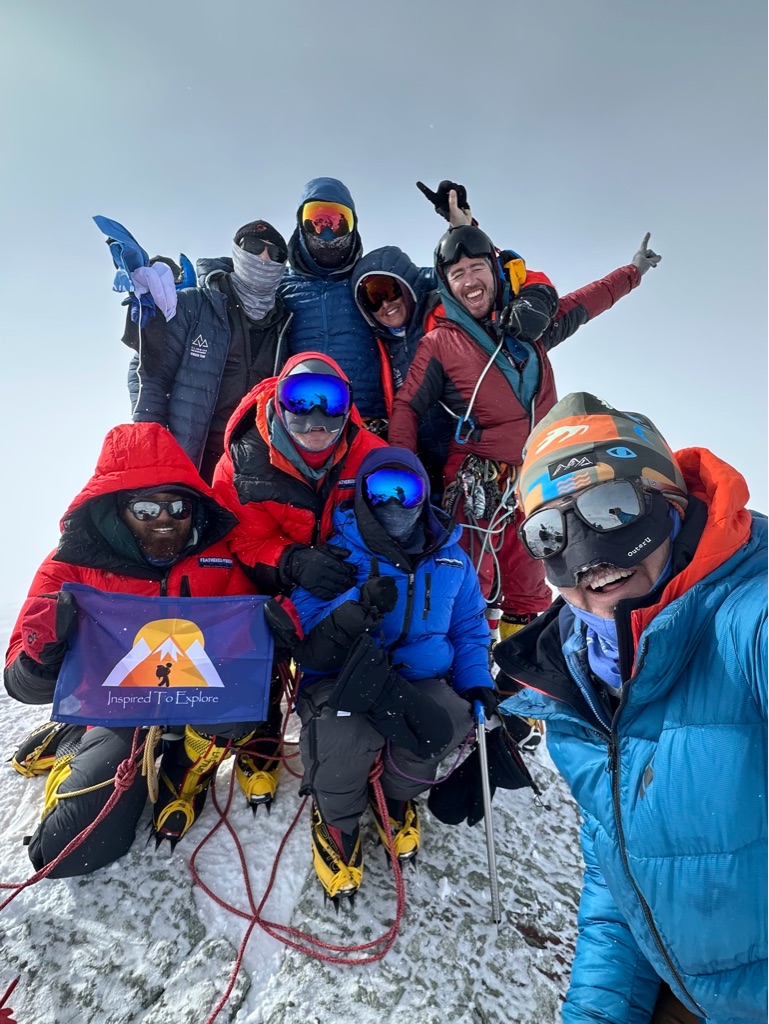
Vinson Massif is a remarkably unique and beautiful landscape that I feel very fortunate to have been able to experience. Climbing in Antarctica adds a level of beauty and intensity to a large undertaking that is expedition climbing. Despite the challenges, Vinson proved to be incredibly rewarding both in natural beauty and climbing experience. As a guide, it was particularly memorable to have the entire team summit on my first expedition. It’s always a great feeling to get folks to the top, but it was even more special to do so on one of the Seven Summits in such a remote and beautiful part of the world.
You’re en route to guide on Everest but just finished guiding on Aconcagua, which is notorious for its extreme weather and heavy load carries. What advice would you give a climber preparing to take on the Stone Sentinel?
For aspiring climbers of any caliber, there is often no better substitute for consistent training in preparation for a big mountain. Aconcagua is a remarkably beautiful, albeit challenging, mountain for any climber and should be respectfully considered when preparing. The more you prepare physically and mentally for such an undertaking, the more you can hedge your bets on things going well. Long days out on the trails, lots of vert with heavy loads, and consistent and often high-intensity cardio do the trick for performing well in the mountains. The gym is also a wonderful tool for building strength and fitness, although there is little substitute for just more time spent moving in the backcountry.
For anyone interested in climbing a big mountain such as Aconcagua, they should put a big emphasis on gaining as much outdoor and climbing experience as possible, especially during challenging conditions. There’s a lot to be said for having some mental toughness to fall back on when you inevitably experience harsh conditions in the mountains.
In most cases, we as climbers need to feel what cold, tired, and wet really are to understand when things are uncomfortable versus dangerous. The more you can push yourself in controlled environments back home or local mountains, the easier it is to draw upon that experience when you’re climbing on big extended trips, such as Aconcagua. Get outside and get uncomfortable; it could really make a difference in your success and, potentially, your safety later on in your climbing career.
Your climbing resume is packed with summits in the Pacific Northwest. How do climbs on peaks like Baker, Rainier, and Shuksan help climbers build the skills and experience needed for high-altitude objectives like Vinson and Aconcagua?
The PNW is arguably one of the best training grounds in the world for aspiring mountain climbers. The density and diversity of terrain that exists all within close proximity to many major cities make it a premier location to build one’s climbing resume. Spending time on peaks such as Mount Baker and Rainier, as well as logging time in the North Cascades, is a sure way to develop the key skills needed to be successful on any of the major summits around the globe. The more competent and more comfortable you feel with the basic fundamentals of climbing, the easier it will be for you to focus on the other challenges that come with climbing big peaks like Vinson, Aconcagua, or even Mount Everest. I’d encourage anyone with high-altitude aspirations to begin with training and climbing in the Pacific Northwest.
Editor’s Note: If you want to climb with Mike this summer in the Pacific Northwest, join him on our 5-Day Mount Baker Alpine Academy (availability is limited – book now to secure your spot).
As a Leave No Trace Master Educator, how do you see sustainable practices shaping the future of mountaineering, and why is it crucial for the entire climbing community to take part?
Stewardship often falls closely in hand with mountain climbing, and I believe the more time you spend in the outdoors, the more appreciation you have for the strict use of Leave No Trace practices. The beauty and spectacle that these expeditions offer should be regarded as a resource worthy of protection and thus require good outdoor practices to maintain. It’s imperative not to regard yourself as an exception when in the outdoors; adhering to good LNT practices is key to ensuring decades of future climbing.
Mountaineering is as much about teamwork as personal and mental strength. How do you foster camaraderie and trust within your climbing teams?

The success of most climbs builds on the pillars of teamwork and camaraderie, as they are often the biggest factors in the success of any expedition. Climbing in itself is an inherently team-based activity, requiring members to work well to support one another in achieving their goals. The safety and even the enjoyment of a trip is dependent on investing a lot of effort into unifying a group. This is often achieved by setting clear expectations and parameters for a trip, communicating heavily and often to ensure everyone is understanding, and helping to boost morale when it inevitably falters after many long days on a mountain.
You served in the Marine Corps for 5 years. What real, tangible advice would you give to other veterans who are looking to jump into the world of mountaineering?
Being a veteran, in most cases, gives you a real advantage in the world of mountaineering. Inherently, you have already developed a work ethic, strong discipline, and a high threshold for discomfort, all attributes of a great mountaineer. My advice would be to use the skills you’ve already developed to your advantage when dealing with difficult conditions or when learning how to climb well together. Moreover, the mountains are often very unpredictable and require a flexible and loose mentality to deal with the uncertainty. This is something veterans should also be pretty familiar with and may find it easier to adapt to than folks from a more traditional background. Overall, I have found the art of climbing to be very therapeutic and purposeful, and I encourage anyone with a military background to look to the outdoors for their next adventure; they may find they are already very well suited for it.

What climb or expedition is still on your bucket list, and what draws you to that particular objective?
For myself, I’ve always approached climbing very systematically; one climb often makes me feel a bit more prepared and worthy of another. I also think I have a natural attraction to lists and projects. There’s a great satisfaction that comes with climbing a certain list of peaks or hitting a new grade on a climb. Personally, I’m very excited to climb in the high altitudes of the Himalayas; it’s a region that holds a sense of classic wonder and novelty to how I perceive climbing. I think climbing on big peaks like Ama Dablam or Mount Everest would be a great way to measure my progression as a climber while accessing and experiencing some of the most iconic and beautiful landscapes the climbing world has come to recognize.
Mike approaches climbing the way he approaches guiding—with humility, intention, and a deep respect for the process. One climb leads to the next. Skills stack. Experience builds. And the summit, whatever it may be, becomes something earned.
Update: Everest, Achieved
Since this story was first published, we are proud to share that Mike has stood on the summit of Mount Everest—reaching a major milestone in both his climbing journey and guiding career. He described the experience as extraordinary and expressed deep gratitude for the opportunity to be part of such an iconic expedition. We want to express our appreciation to Mike for all his hard work on Vinson, Everest, and soon, Mount Baker.
How did it feel standing on the summit of the world’s tallest peak, knowing you had just ticked off something from your bucket list?
It goes without saying, I think, that standing on the summit of Mount Everest is quite a remarkable moment. In the many ways you might imagine, it feels like a big exclamation point on a long expedition and in many ways a long life journey. For myself, and probably most others, I’ve thought about climbing that mountain for most of my adult life, so getting to the top is quite a special thing.
Regardless, I don’t think I view Everest so much as a box to tick or a moment to have and move on from. I think, and I really hope, my relationship with Everest will be ongoing and continuous; a big chapter of my life to be had. Moments like these, like standing on the tallest mountain in the world, in my opinion, don’t really unlock a level of enlightenment or some existential awakening like a flick of a switch, as one might imagine or hope. But I do believe they change you and they shape you, just a bit more slowly… and in the long term I think you become a much different person and a much different climber.
All in all, Everest is a very challenging and amazingly beautiful mountain, one in which I hope to continue to dance with for quite some time.

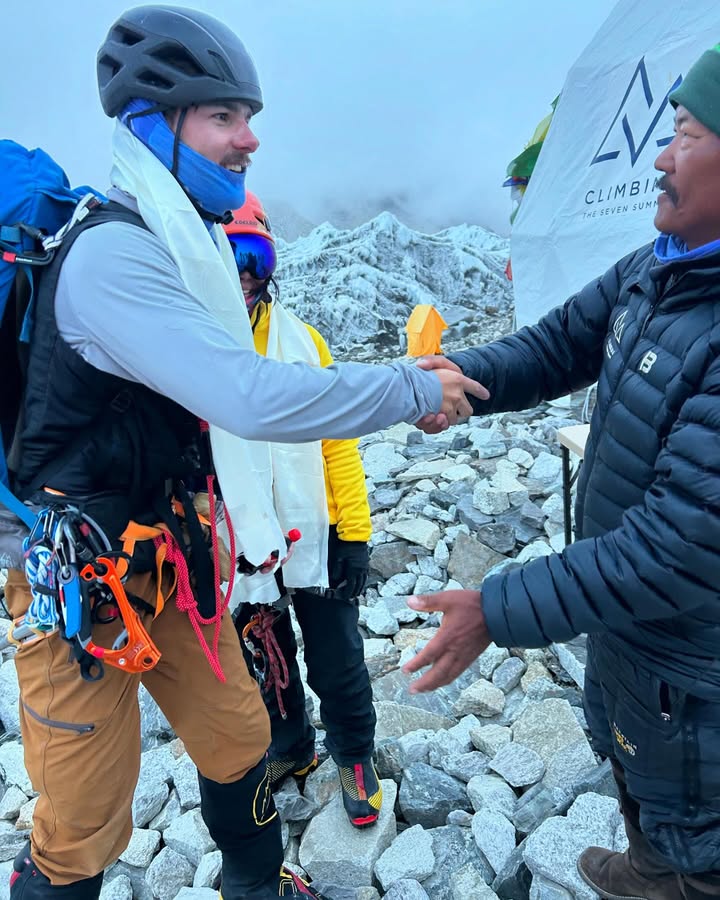
The mountains teach us something every time we show up. What’s one thing you learned or felt humbled by as a guide and climber on Everest this year?
For me, Everest was the longest climbing expedition I’ve ever been a part of. In many ways, the slow, long climb really beats you up and degrades you over time. It’s challenging to stay focused and retain the drive you had when you stepped off from home. I think in a lot of ways that’s the hardest part of Himalayan climbing. It’s a very rewarding and fulfilling process, but by no means are those mountains you can just trot up.
You might have caught this above: You can learn alongside Mike during our Mount Baker Alpine Academy. Whether you’re dreaming of Vinson, Aconcagua, or if you’re just starting out, Mount Baker is the perfect place to find your footing in the mountaineering world.
Teams Continue up the Khumbu Valley
With the majority of our climbers and trekkers now in the Khumbu Valley, here are the updates from the field, plus a few of our favorite shots from this season!
Our first Rugged Luxury Everest Base Camp Trek & Stay of the season has officially wrapped, and we want to extend our heartfelt appreciation to all of our trekkers and CTSS Guide Pega Sherpa for kicking things off on such a positive note. Our second team is also up to big things, arriving at Everest Base Camp with a champagne celebration. The team will participate in a beginner-friendly ice climbing clinic tomorrow before being whisked away in a specialized high-altitude helicopter back to Kathmandu.
We have a number of teams at Lobuche Base Camp, including our Western Guided and 3 Peaks teams. Today, they took an acclimatization hike to Lobuche High Camp and then returned to Base Camp for a skills clinic. Tomorrow, they will move to Lobuche High Camp in preparation for their summit bid.
Farther down the Khumbu Valley, our Lobuche team and private climbers took a rest and acclimatization day in Pheriche. They visited the Himalayan Rescue Association, a non-profit organization that aims to reduce instances of acute mountain sickness and other mountain ailments in the Himalayas. The Pheriche Aid Post is one of three clinics they run in the Himalayas; others include the Everest Base Camp Emergency Room and the Manang Aid Post, located near Annapurna’s base.
Finally, we have a number of climbers and trekkers in Tengboche, including our Everest Base Camp trekkers, the Kirby Family, and Camp 3 climber Doug. Today, they visited the Tengboche Monastery, which was originally built in 1913 by Lama Gulu. It’s been rebuilt subsequently in 1934 (earthquake) and 1989 (fire), and today, it’s the largest gompa (Buddhist temple or monastery) in the Khumbu region of Nepal.
Thank you to CTSS Guides Nani Stahringer, Big Tendi, Little Tendi, Nuru Sherpa, and Walt Hailes for sharing these images with our team.
Climbers at Lobuche Base Camp for Acclimatization Summit Bids
A few photos and a quick update from CTSS guide Abiral with our Western Guided and 3 Peaks teams, along with private climber Marlene. Here’s what Abiral shared after the team successfully made it to Pheriche on Day 7.
“All team members are in high spirits and looking forward to the upcoming ascent of Lobuche Peak, an essential part of their acclimatization for Everest. So far, the journey has been going incredibly well, thanks to the seamless coordination between our Western guides, 3 Peaks guides, and the experienced Nepali guides.”
Today, these climbers will make their way to Lobuche Base Camp before heading to High Camp for their ascent. Thank you, Abiral, for these photos:
Our Lobuche team, along with private Everest climbers, made the trek to Pheriche. Tomorrow, they will visit the Himalayan Rescue Association’s Pheriche Aid post, which started in 1973 to assist climbers and trekkers. Today, this post can accommodate two doctors, one medical assistant, one cook, and cleaning staff. Below are a few photos of climbers Emma and Sam, who have eyes set on summitting the world’s tallest peak and rounding out their Seven Summits journey. Check our recent blog post to learn more about Emma, who has already summited six of the Seven Summits at just 16 years old.
The Kirby family, Camp 3 climber Doug, and Everest Base Camp trekkers are bringing up the end of our first wave. Today, these climbers and trekkers continued their journey up the Khumbu Valley and arrived in either Debouche or Tengboche. They will all have the opportunity to visit the famed Tengboche Monastery tomorrow.
Our Rugged Luxury team two will arrive at Everest Base Camp tomorrow. Team one has officially departed Everest Base Camp – see the video below of their luxury ride back to Kathmandu. After landing, the team was whisked away from one additional treat: a recovery massage. Today, they took a city tour of Kathmandu, highlighting various UNESCO World Heritage sites throughout the city. Their final day will end with a team dinner before departing.
First Teams Arrive at Everest Base Camp
Our first team of the year has arrived at CTSS’ luxury Everest Base Camp, which means a massive congratulations goes out to our Rugged Luxury team one for successfully completing the trek from Lukla to the foot of Mount Everest. Our second team will be arriving at Everest Base Camp in two days, but today, they will be tagging Lobuche High Camp for one of the best views of the Khumbu Valley.
A quote from trekker Nicole Porto captures the energy of making the journey to Everest Base Camp:
“The trail was steep, or flat, or rolling, or insane, but always beautiful, and the people we met along the way were so, so kind. This is for sure a physical accomplishment, but also a mental one. I still can’t believe I really did it.”
Thank you to Nicole for sharing these photos:
Our 3 Peaks and Western Guided teams are taking a rest day in Pheriche with private climber Marlene. This crew will visit the Himalayan Rescue Association, which supports climbers and trekkers in the Khumbu Valley suffering from Acute Mountain Sickness or other mountain ailments. We’re incredibly grateful for this high mountain clinic; it’s a beacon of aid and safety in an otherwise rural landscape.
A little further down the Khumbu, our Lobuche team, along with private Everest climbers, are in Tengboche, also taking a rest day. This team will visit the Tengboche Monastery, one of the most famous in Nepal and an important cultural center for the Sherpa community.
Our remaining teams, the Kirby family, Camp 3 climber Doug, and Everest Base Camp trekkers, are all in Namache, enjoying some of their first glimpses of Everest, Ama Dablam, Lhotse, and Nuptse. They are also on a rest day today, and tomorrow, they will move to Tengboche.
Here are two shots from CTSS guides Nani and Abiral.
As our teams continue to move up the mountain, it’s a great time to share some sage advice from our co-owner, Caroline Pemberton, with all of you following along at home. “I try to live by the adage of ‘no news is good news,’ which, in very real terms, is true in the mountains. If you don’t hear from your loved one, they are most likely fully engaged and focused on their climb. If they aren’t calling or texting you, they are moving, or eating, or sleeping, which are all the things they need to be doing to stay safe and be successful.”
10 Teams in the Khumbu Valley
Here are a few images and updates from the trail. We currently have 10 teams in the Khumbu Valley, all with eyes on big objectives, from the summit of Everest at 29,035 feet to our luxury Everest Base Camp at 17,598 feet.
Our Rugged Luxury team one is inching closer to Everest Base Camp after spending a few nights at our Lobuche Base Camp. Team two is in Pheriche, their last stop before heading to Lobuche Base Camp. Photos of Lobuche Base Camp courtesy of Nicole Porto, Rugged Luxury trekker.
Our Everest Base Camp trekkers arrived in Kathmandu safely; tomorrow, they will hit the trail from Lukla. This team will be joined by Camp 3 climber Doug, along with the Kirby family. The Kirby family includes private climber Michael, who will attempt to summit Everest, while his wife and daughter support him from Everest Base Camp. If you’re considering a summit attempt and also want the support of your loved ones, we have a slew of options for friends and family.
Meanwhile, our Western Guided team, 3 Peaks team, and private climber Marlene enjoyed the luxuries of Namche, the cultural center of the Khumbu, and are en route to Tengboche. Once there, they will take another rest day and an acclimatization hike to another cultural hub—the Tengboche Monastery.
Our private climbers and Lobuche team arrived in Namche today. They will have a chance to soak up those first glimpses of Everest as they settle in for a rest and acclimatization day tomorrow.
Greeting the Himalayan Giants in Namche
Our 3 Peaks and Western Guided teams, along with private climber Marlene, took a rest day and an acclimatization hike in Namche. Here are a few shots of the group at a local coffee shop, fueling up for their future objectives.
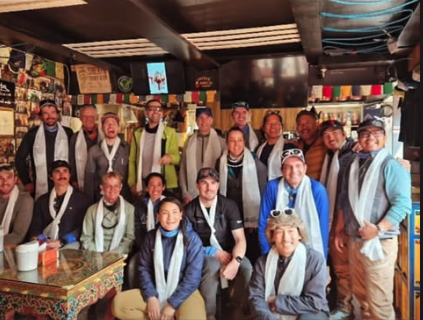
For all climbers and trekkers heading up the Khumbu Valley, Namche is a particularly exciting stop as it is the first time they can see Mount Everest and many other Himalayan giants on the trail to Everest Base Camp. As CTSS co-owner Mike Hamill shared in his recent blog about our 2025 spring climbing season, “A moment I look forward to every year includes catching the first glimpse of Everest while trekking up the Namche hill. That majestic view is a powerful reminder of just how immense the mountain is—and it also makes for the perfect rest break halfway up the climb.”
This is undoubtedly a highlight for many climbers, and you can see our teams using their peak-finding apps to get a sense of the mountains surrounding them.
CTSS Guide Phunjo Lama, pictured below, holds the Everest Speed Record, which she reclaimed in 2024. We’re honored to have her join us in the Himalayas this season. She will kick things off with our 3 Peaks team before turning her attention to guiding a private speed ascent.
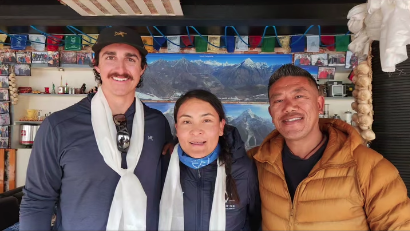
Both Rugged Luxury teams are acclimatizing today. Team One tagged Lobuche High Camp and will return to Lobuche Base Camp for one more night in our luxury tented camp. Team Two took some time to rest and visited the Tengboche Monastery, often hailed as one of the highlights of the entire trek.
We have more climbers who have just touched down in Lukla via helicopter today, including our private and Lobuche team climbers. They will stay in Phakding this evening before heading up the Khumbu Valley.
And finally, in Kathmandu, we welcomed our Everest Base Camp trekkers along with our Camp 3 climber, Doug. Tomorrow, they will meet with their guide, Kat, for their gear checks and guide briefing.
Birthdays, Pizza, and Smiles in the Khumbu
Here are our updates from the Khumbu Valley. Our Western Guided team and 3 Peaks team have arrived in Namche, following our second Rugged Luxury team, who departed earlier today after their rest day.
Our first Rugged Luxury team celebrated trekker Gerry’s birthday in Pheriche. Tomorrow, this team will depart from the well-trodden path to Everest Base Camp and take the high road to Lobuche Base Camp. At CTSS, we pride ourselves on our acclimatization schedules, and getting all of our trekkers to Lobuche Base Camp for two nights, plus a trek to Lobuche High Camp, is one of the many ways we support proper acclimatization.
Back in Kathmandu, our Private 1:1 and Lobuche team climbers are dialed in and ready to fly to Lukla in the morning!
Thank you to CTSS Guide Nani S. for sharing these photos of our Western Guided team.
Mike Hamill on Everest: The Season, the Strategy, the People
Mike Hamill on Everest: The Season, the Strategy, the People
As the spring climbing season unfolds in the Himalayas, CTSS is once again headed up the Khumbu Valley—with 24 teams setting out to tackle a range of objectives, from trekking to Everest Base Camp to climbing some of the world’s tallest peaks. A few of those teams include our Everest Base Camp trekkers, who will spend two nights in our luxury camp inside Base Camp Proper—an experience most EBC trekkers never get.
At the helm of it all is Mike Hamill.
A six-time Everest summiteer, accomplished author, and one of the most respected names in mountaineering, Mike has spent over two decades guiding on all seven continents. He’s the mind behind CTSS and the heart of our expeditions—someone who’s climbed it all but still believes the most important part of any mountain is the people you climb it with.
As we kick off the season, we sat down with Mike to hear his reflections on Everest, his thoughts on what makes great climbers successful, and how the little details—from espresso in a solar-powered dome to being alongside like-minded teammates—can have a massive impact in the mountains.
You’ve summited Everest six times—each with its own challenges, successes, and unique moments. Looking back, which summit stands out as the most memorable for you, and what made it so special?
The last of my six Everest summits was by far the most memorable. It came in 2016, following two incredibly difficult years: the serac fall in 2014 that took the lives of 14 Sherpa in the Icefall, and the devastating earthquake and avalanche in 2015 that claimed 19 lives at Everest Base Camp. After those back-to-back tragedies, I seriously considered hanging up my boots. But the mountain had given me so many great experiences before those seasons that I decided to try one final summit attempt—to leave the mountain on a positive note. That year, I reached the summit, and the experience reignited my passion not just for climbing but for sharing it. It led me to start my own company, Climbing the Seven Summits, and here we are today, happy to still be doing what I love. Had I not gone back—and had that climb not gone the way it did—I doubt I’d still be in the climbing business today.

The trek to Everest Base Camp is an experience like no other, blending rich culture, breathtaking scenery, and an energy that’s hard to put into words—a big reason we lead our own treks through the Khumbu Valley. Along that journey, which part of the trail or maybe a specific experience holds a special place in your heart, and what makes it stand out to you?
There are so many highlights, it’s hard to choose. But a few moments I look forward to every year include:
-
- Catching the first glimpse of Everest while trekking up the Namche hill. That majestic view is a powerful reminder of just how immense the mountain is—and it also makes for the perfect rest break halfway up the climb.
-
- Taking in the view of Ama Dablam from the Everest View Hotel in Khumjung. There are few peaks in the world as striking as Ama Dablam, and when it’s framed alongside Everest and Lhotse, the scene is nothing short of breathtaking.
-
- Hiking through the rhododendron forests while they’re in bloom—there’s something magical about watching spring come alive while you’re on the trek to Everest Base Camp.
With decades of guiding experience, you’ve helped hundreds of climbers reach their goals. What qualities or traits do you see in those who are most successful in summiting Everest?
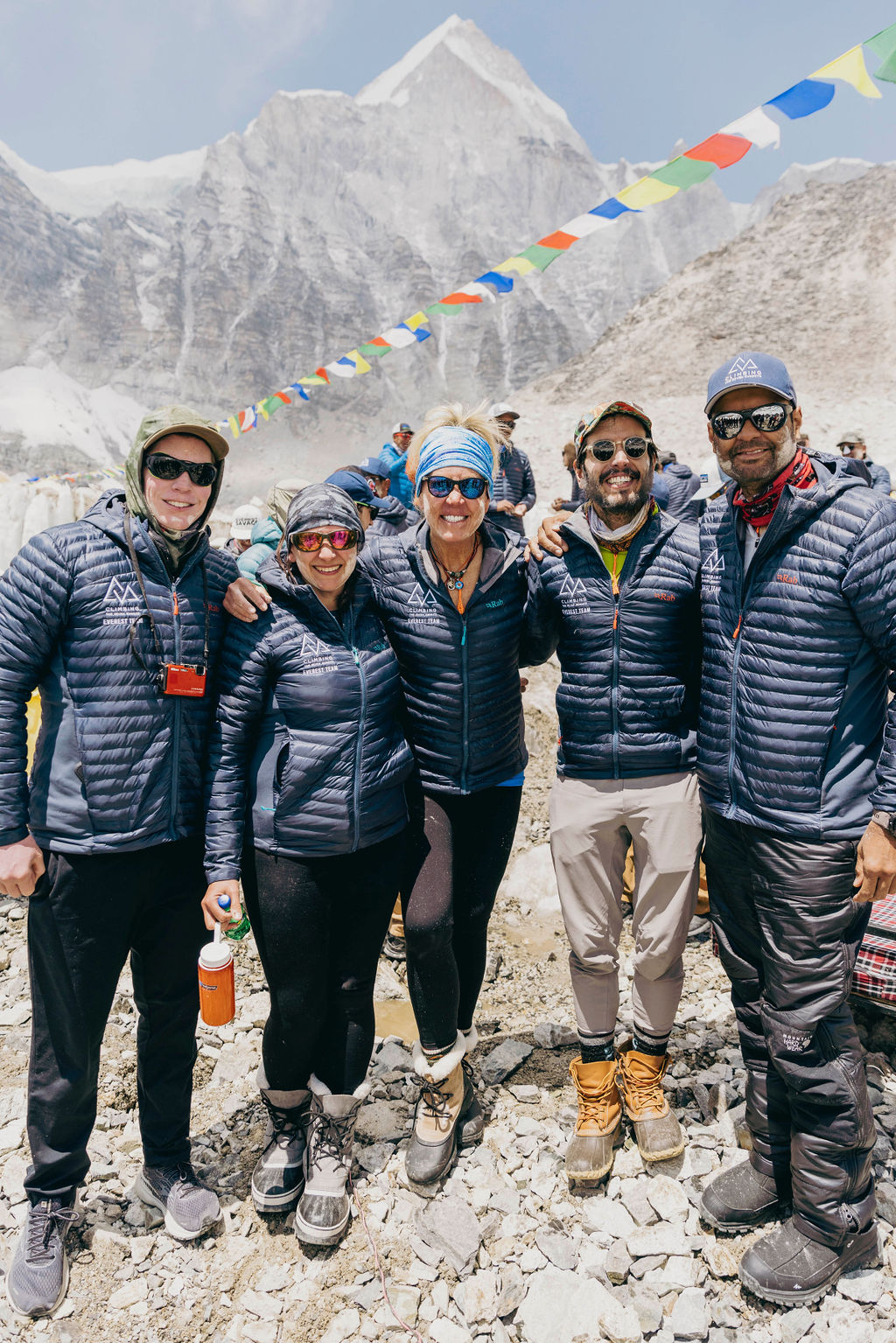
I’ve found that patience and humility are two of the most common traits among summiteers. Those who aren’t willing to wait for the right weather window or give their bodies enough time to properly acclimatize often struggle. There’s a lot of downtime on an Everest expedition, and it’s important to be able to settle in, relax, and embrace the process rather than feeling pressure to rush toward the summit. Your body needs time to rest and recover at Base Camp in order to perform well higher up. Humility in the face of such a massive challenge and being a supportive, team-focused climber go a long way in setting the right mindset for success.
That mindset—of patience, humility, and being a good teammate—isn’t just a nice-to-have. It’s essential. Over decades of guiding, I’ve learned that the real difference-maker isn’t brute strength or experience—it’s the people you share the mountain with. A strong, respectful team culture lifts everyone up. That’s why we take our No D*ckheads Policy seriously at CTSS. We’re selective—not just with guides, but with clients too. The mountain is hard enough—no one needs ego, entitlement, or selfishness, making it harder. When we build teams of humble, kind, and committed climbers, everyone does better.
CTSS is known for its well-supported expeditions, from Everest Base Camp all the way to high-altitude logistics at Camps I, II, and III. What are some ways your team elevates the Everest experience beyond just reaching the summit?
My first ten seasons on Everest, working for another company, often felt like pure suffering. The base camp setup was bare-bones—uncomfortable, cold, and far from enjoyable. I took that experience and made it a personal mission to create something better. At CTSS, we’ve built a Base Camp that’s not just functional but truly comfortable: great food, proper coffee, warm and sunny common areas, a well-stocked library, table tennis, couches—everything to make life more enjoyable and less of a grind.
That same philosophy carries through to every part of the expedition—whether it’s the trek to base camp, time in Kathmandu, or the upper camps. When climbers are comfortable, relaxed, well-fed, and well-cared-for, they’re not only happier, but they’re also more likely to succeed.
It’s part of what we call the Marginal Gains Philosophy—the idea that if you capitalize on every hidden advantage, 1% here, 1% there, gains quickly compound into a huge overall improvement. Some people might see better food or a cozy lounge as unnecessary luxuries, but for us, they’re highly strategic. We treat our climbers like the athletes they are, and we engineer every part of the expedition to help them stay strong, sharp, and ready to perform when it counts.
In a world where Everest is often reduced to stats and summit photos, Mike Hamill reminds us that real expedition success is built on something deeper: mindset, culture, and care for the mountain, the team, your Sherpa and guides, and yourself.
As our teams spread out across the Khumbu Valley this spring, carrying dreams of summit days and shared stories, Mike’s words are a grounding force. Whether it’s embracing the quiet patience that altitude demands, finding strength in the team around you, or appreciating the small comforts that help you perform at your best, his philosophy shapes every step of a CTSS climb.
This season, like every season, we’re not just climbing mountains—we’re doing it the right way.
With purpose. With humility. And with the best team on the mountain.
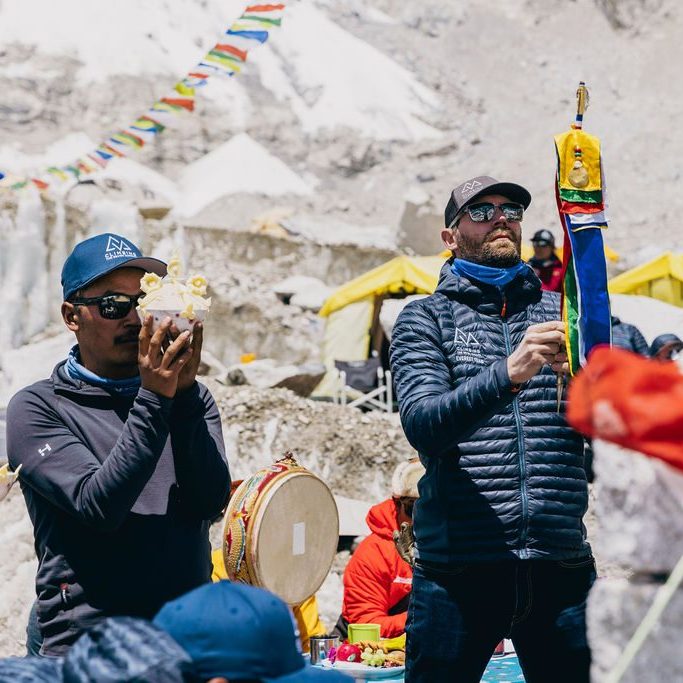

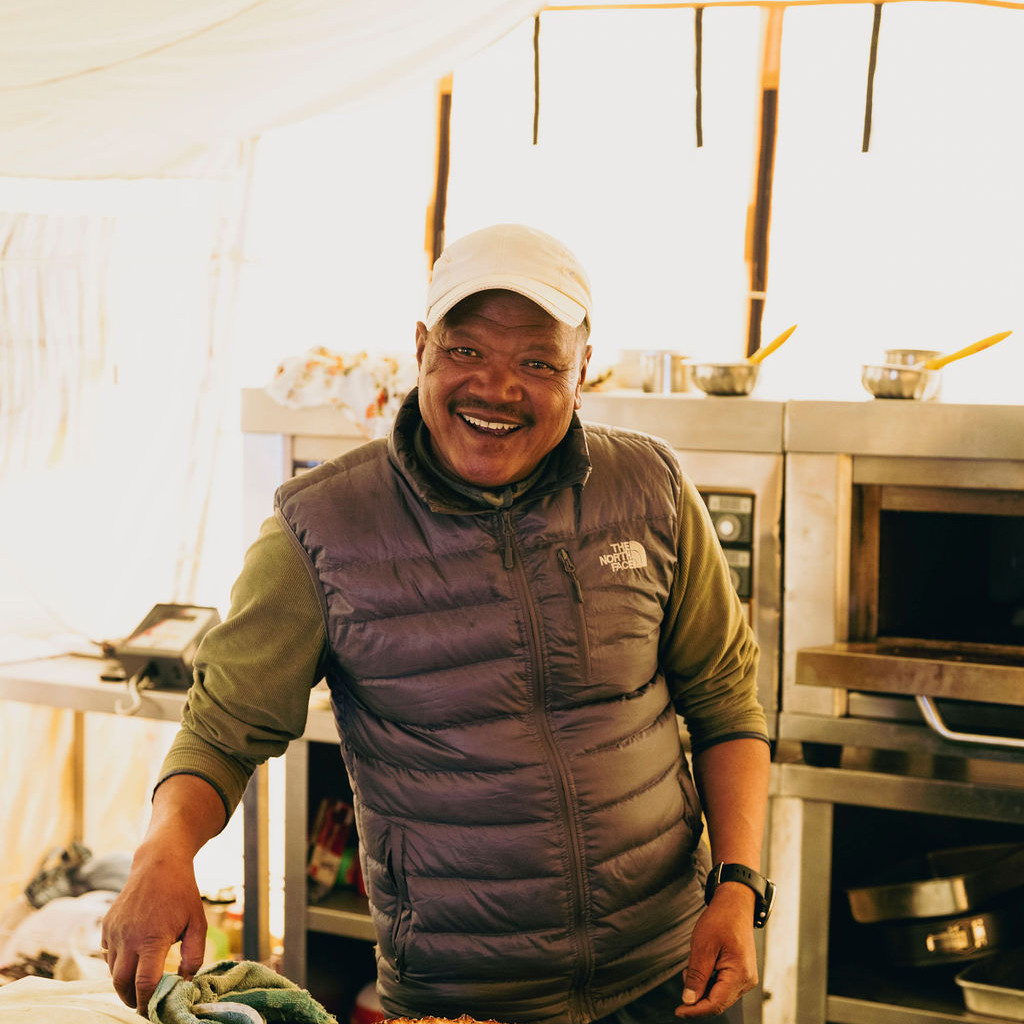
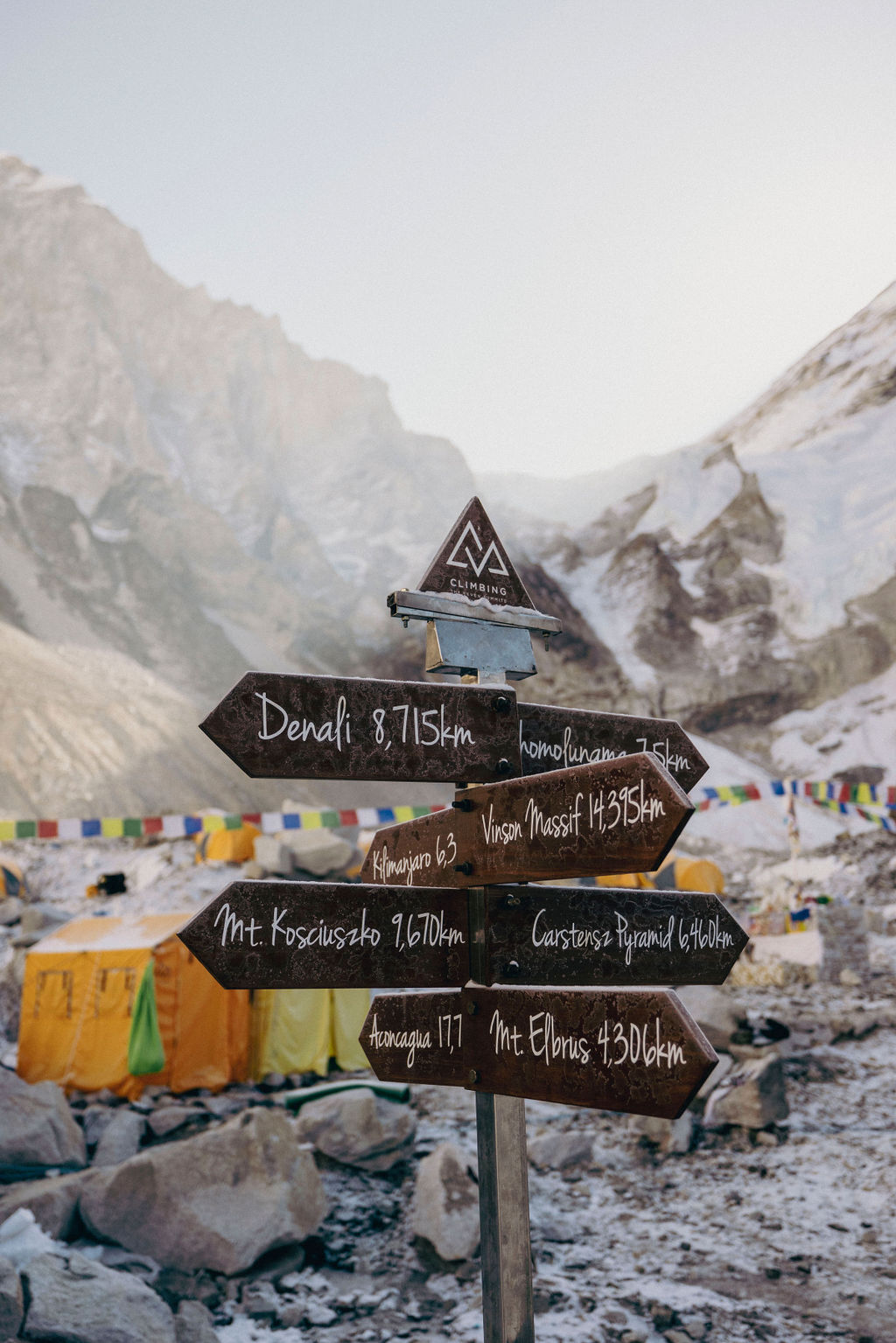
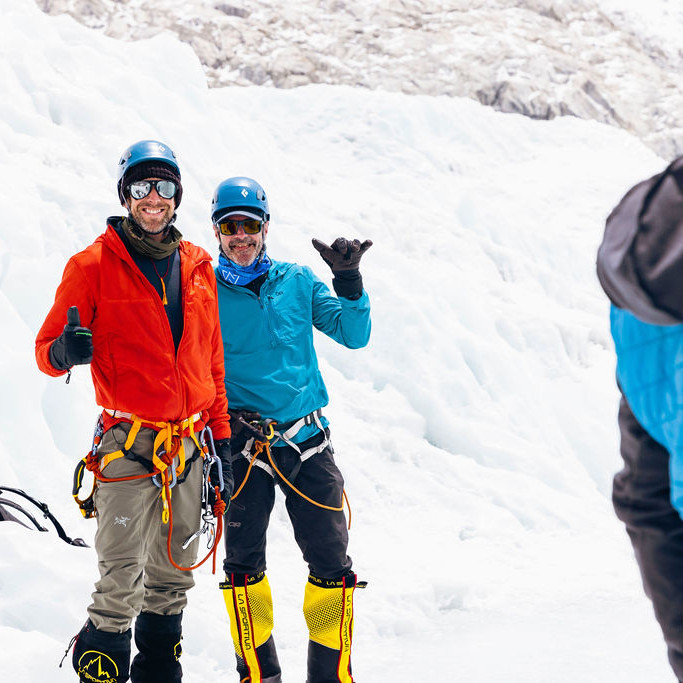
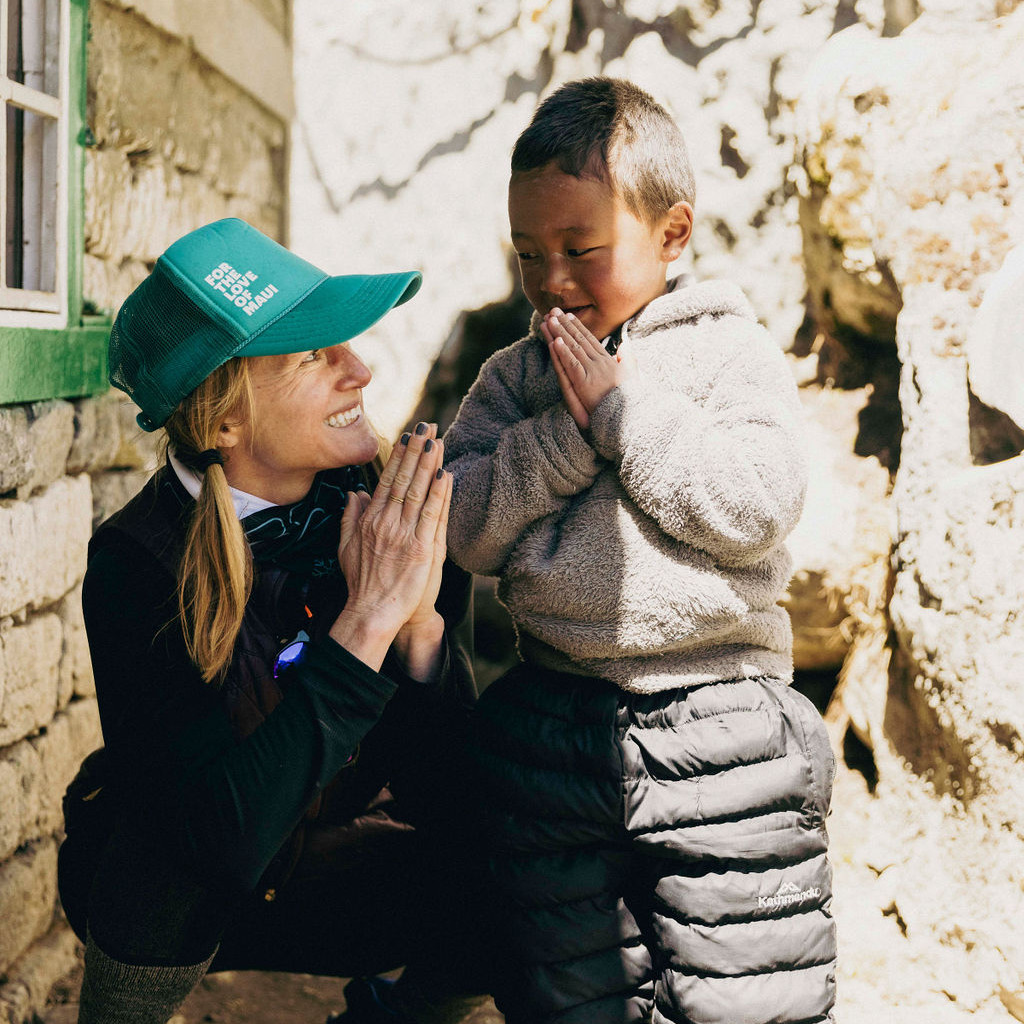
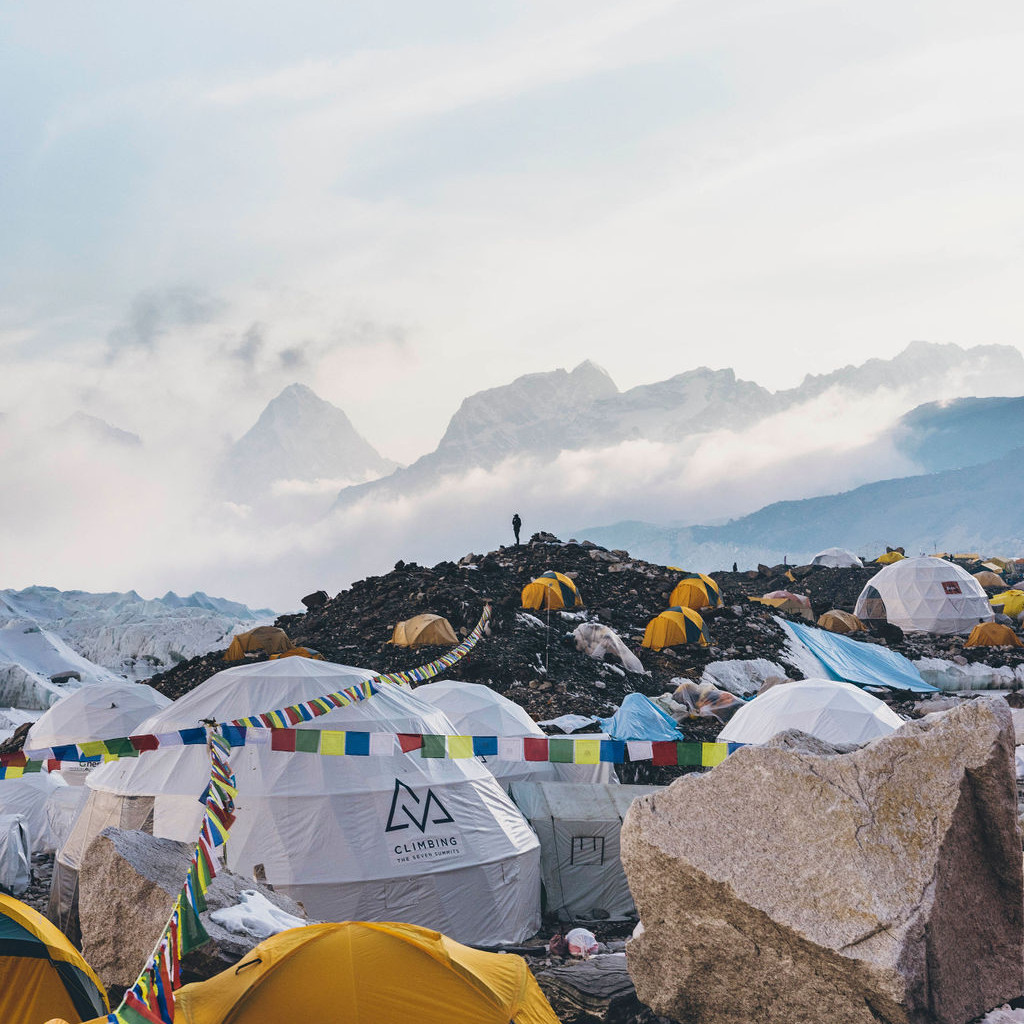
CTSS Climbers Begin Arriving in Kathmandu
Over the weekend, our Western Guided Team and 3 Peaks Team climbers arrived in Kathmandu for their gear checks and guide briefing before heading out to Lukla to start their trek up the Khumbu Valley.
Our Western Guided team is led by CTSS guides Nani Stahringer, Mike Bennett, and Sajjan Ghale, while Porter Crockard and Dawa Jangbu are at the helm of our 3 Peaks team.
Outside of those first two climbing teams, our Private 1:1 and Lobuche Team climbers arrived in Kathmandu yesterday. We are excited to welcome them to Nepal and anticipate that they will make their way to Lukla in a few days.
Rugged Luxury Trekkers Lead the Way Up the Khumbu Valley
Our second Rugged Luxury team has officially left Kathmandu and is on their way to Everest Base Camp! This team is guided by IFMGA Mountain Guide, 4x Everest summitteer, and former NNMGA Technical Director, Big Tendi.
After trekking to Namache, the team is resting and acclimatizing today. They will check out the famed Thamo Monastery, a Buddhist monastery that serves as a spiritual center for the local Sherpa community and trekkers.
Our first Rugged Luxury team made their way to Pheriche yesterday after a stop at the Tengboche Monastery, one of the most famous in all of Nepal. Today, the team followed in the footsteps of our second team by spending the day taking an acclimatization hike paired with some resting before moving higher up the mountain. The team has been catching sights of Ama Dablam, plus they caught their first glimpse of Everest!
You may have noticed that all our Rugged Luxury trekkers are kitted out in new Rugged Luxury jackets – the team is certainly looking sharp!
Photos from team one courtesy of Nicole Porto and team two from Big Tendi.
